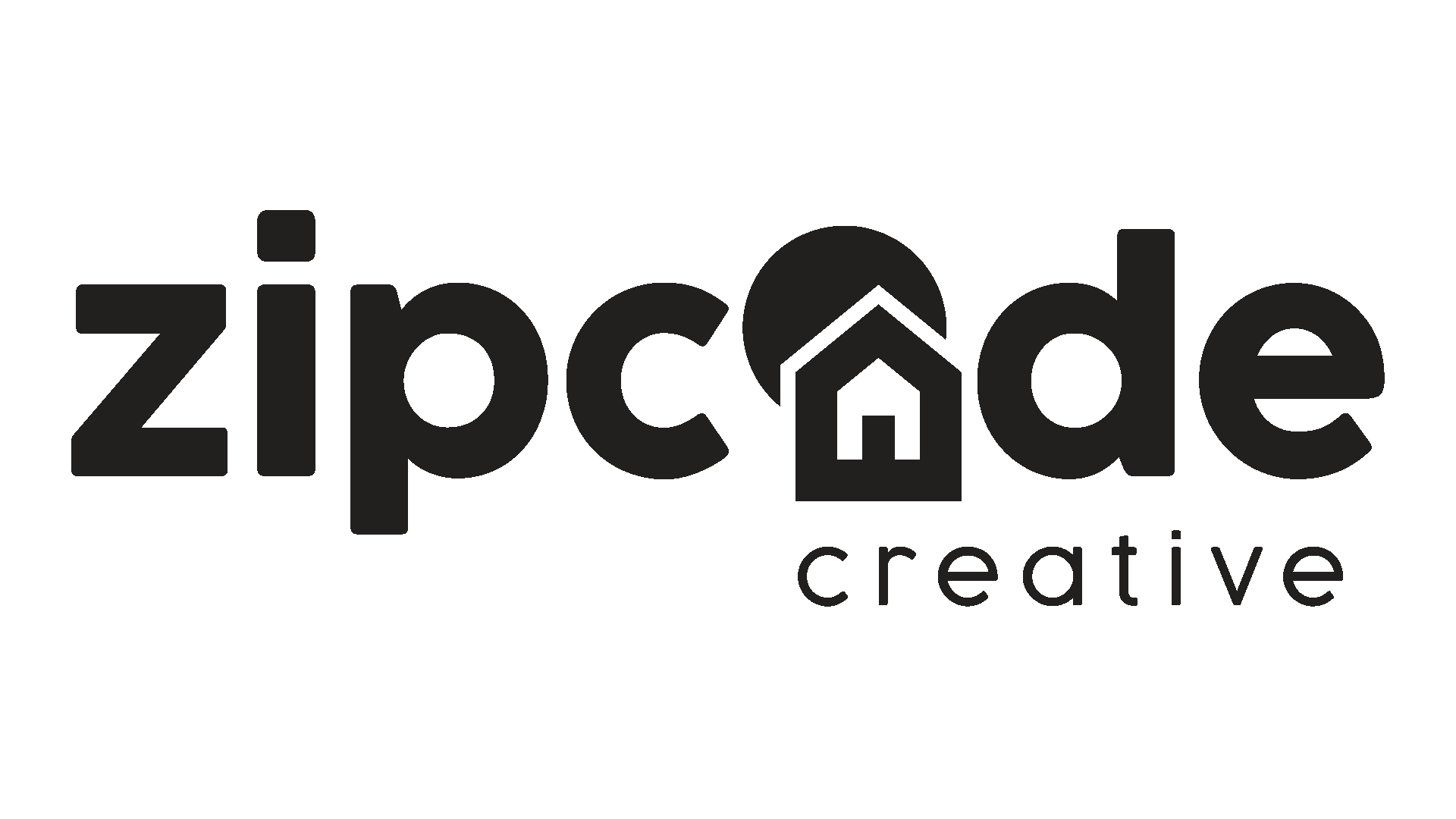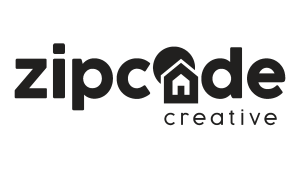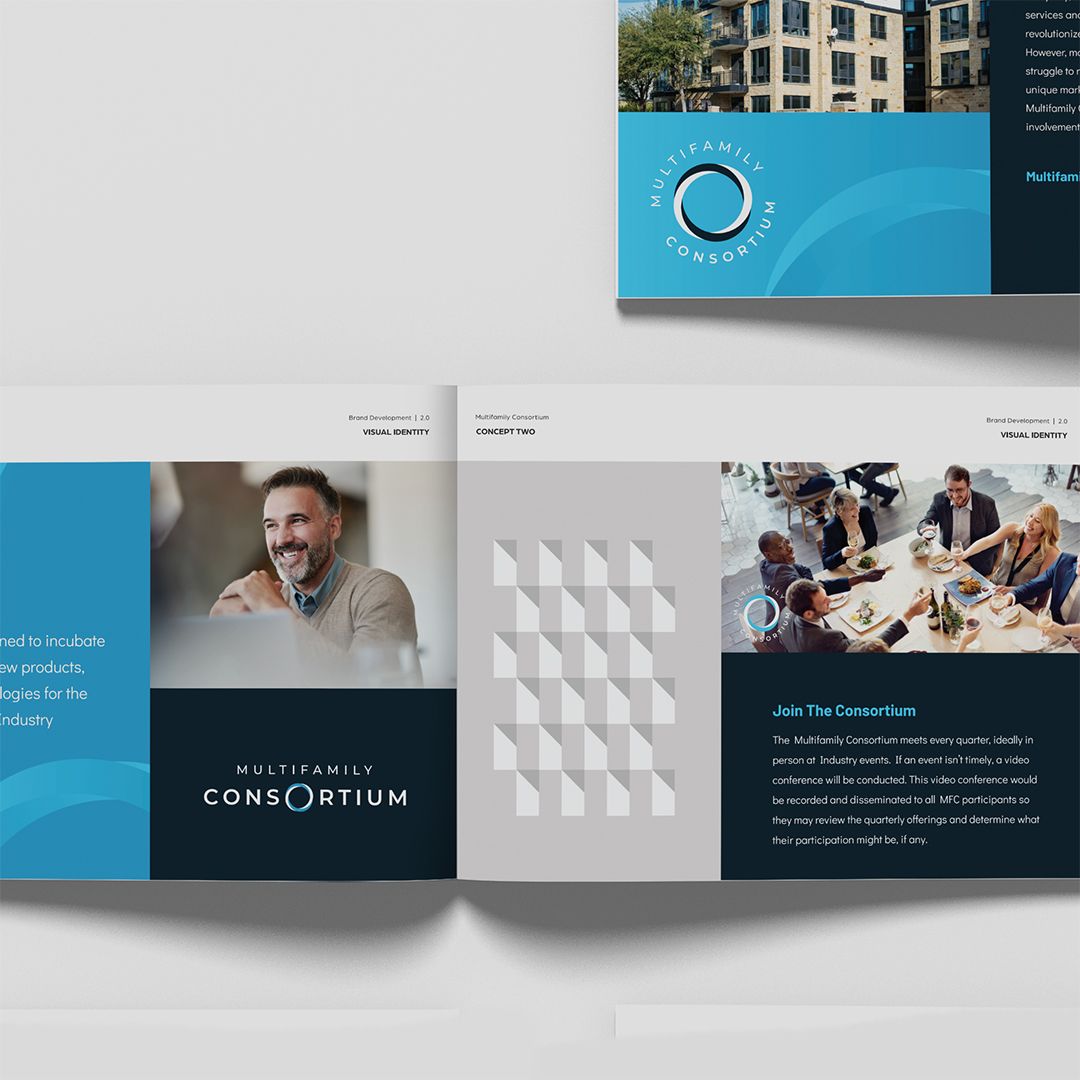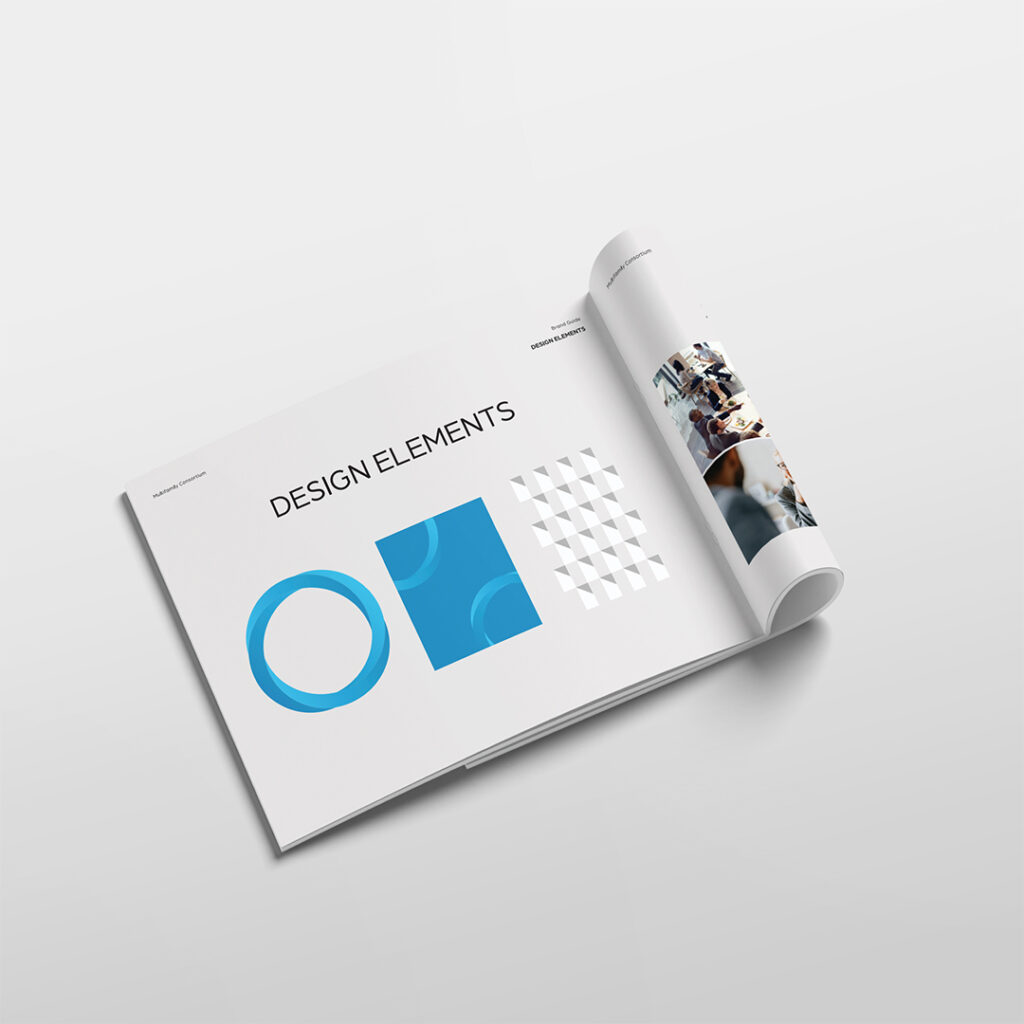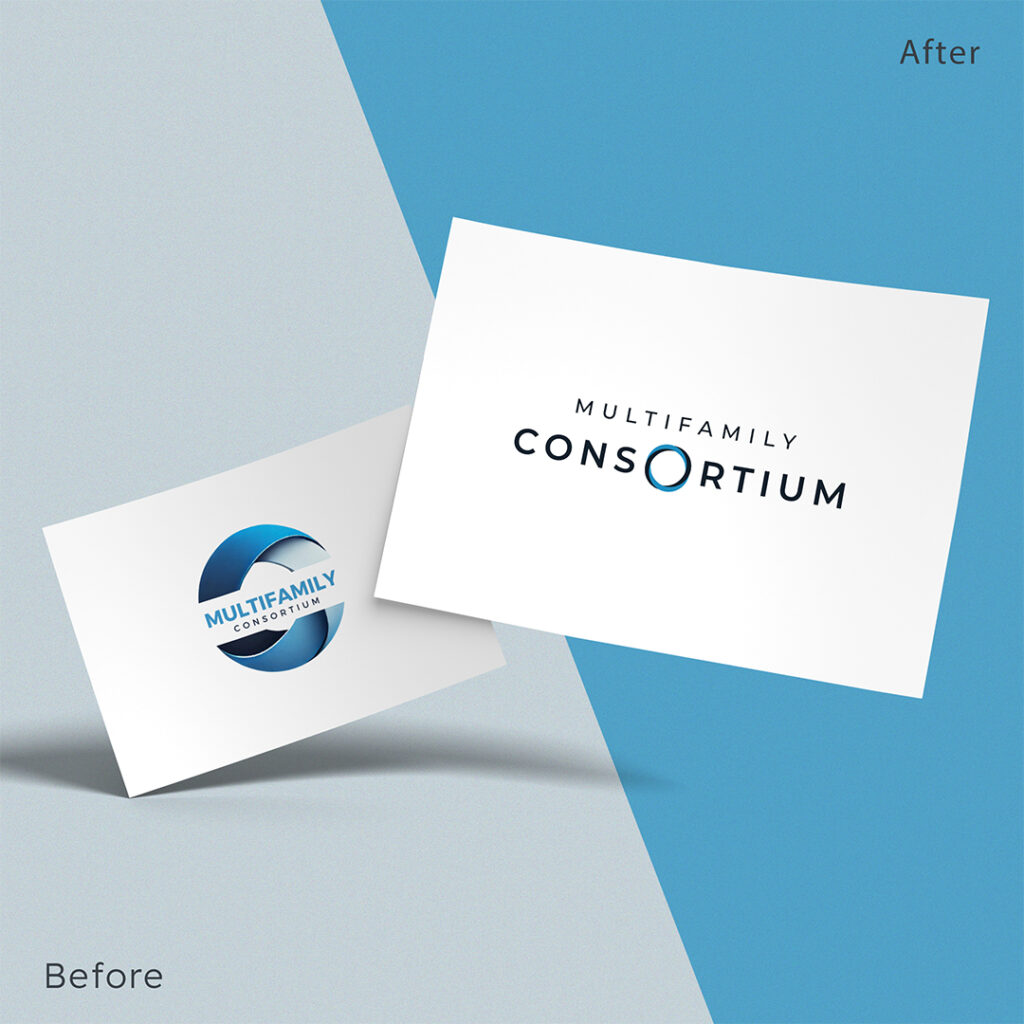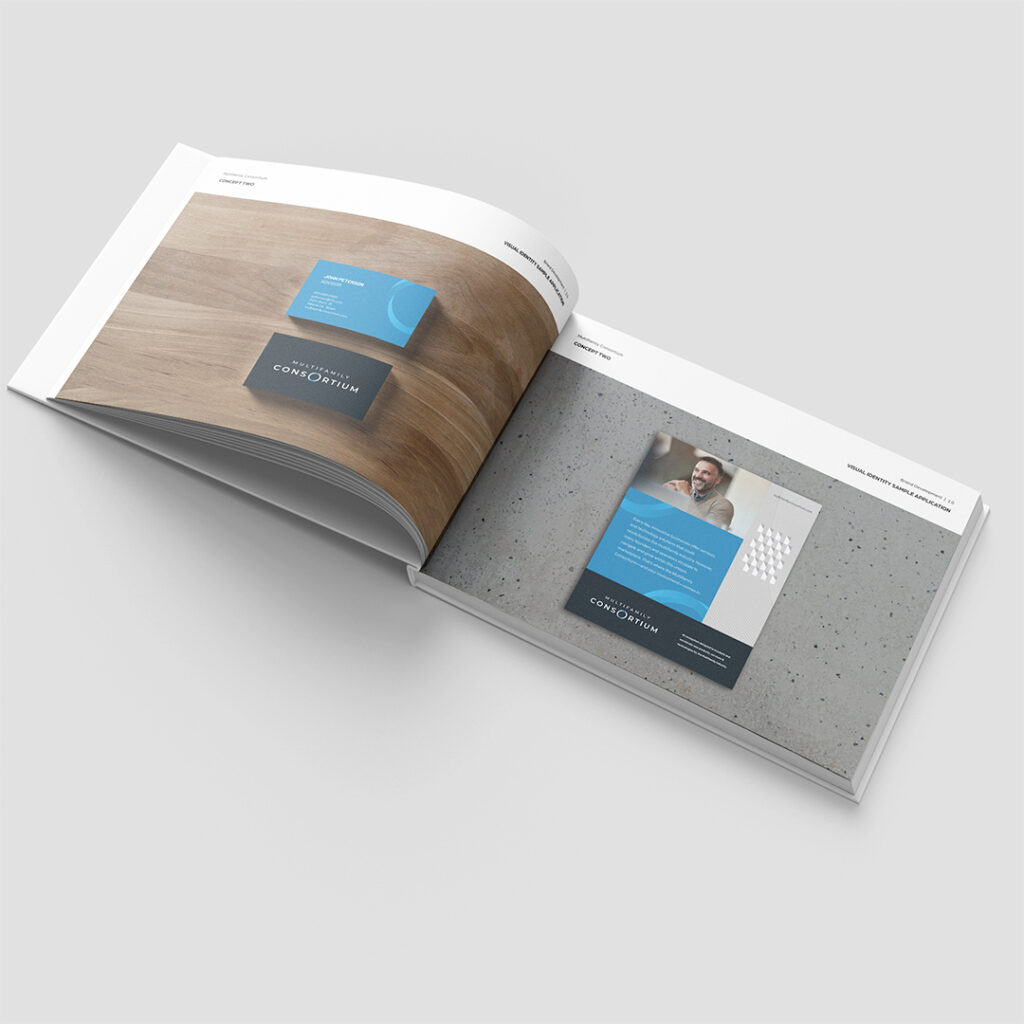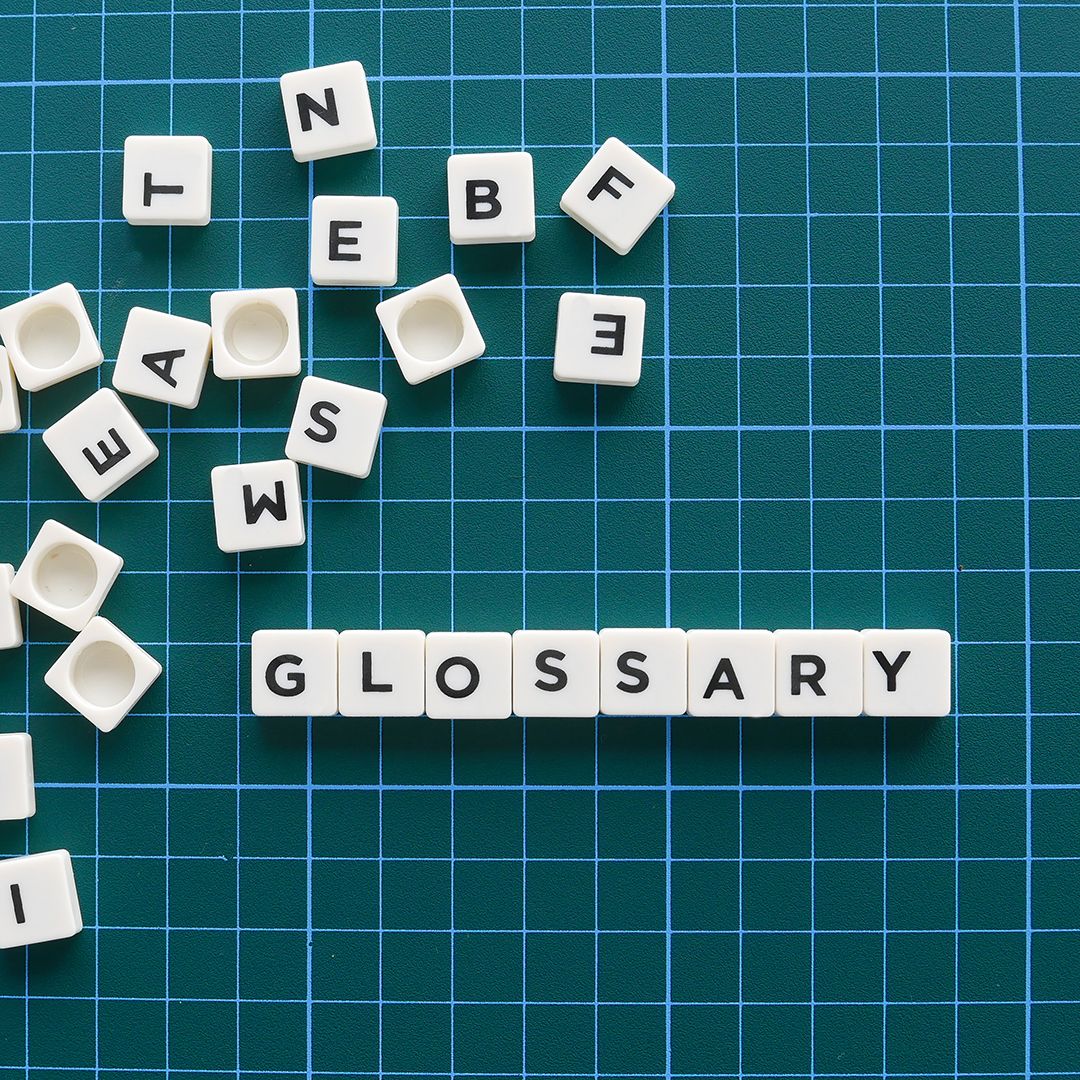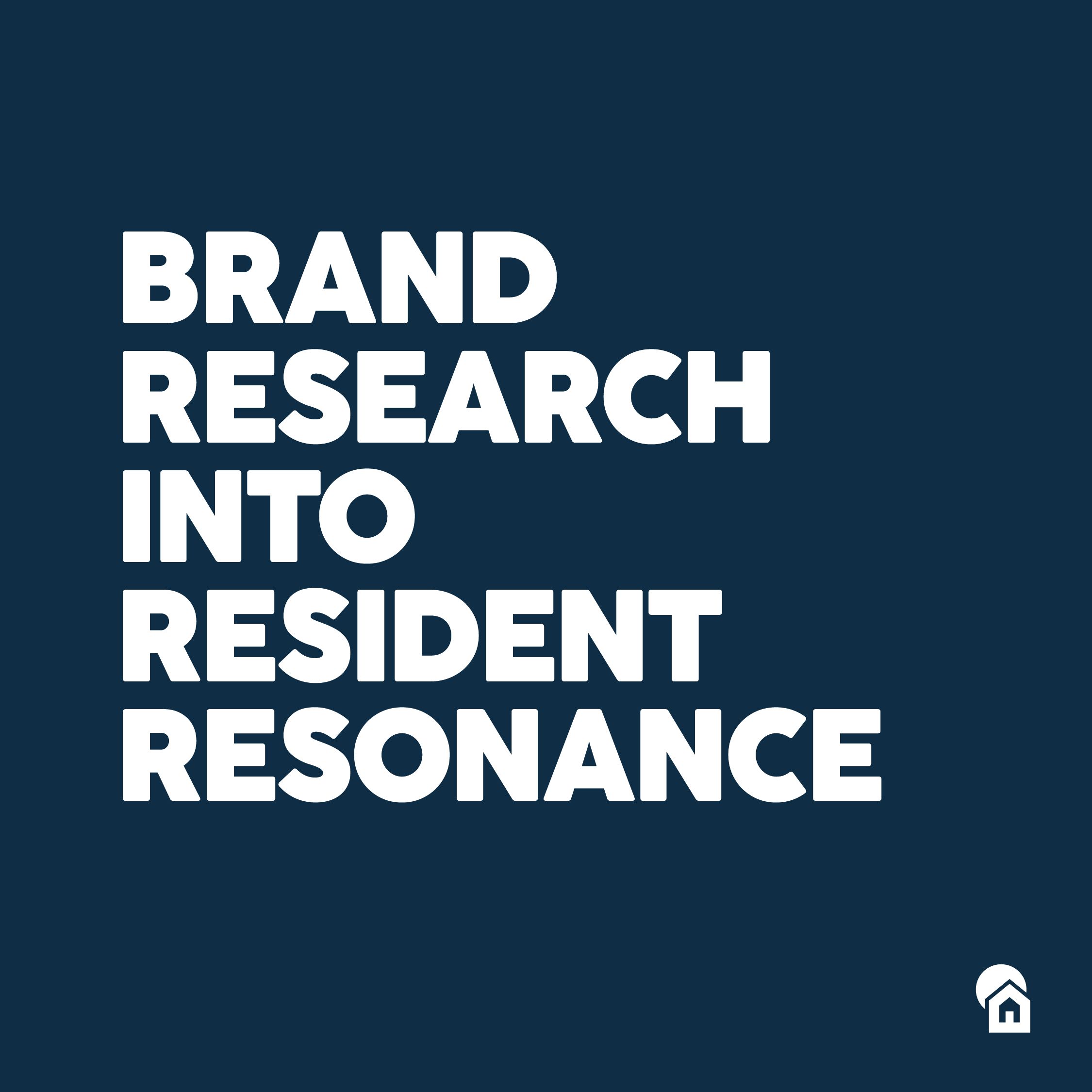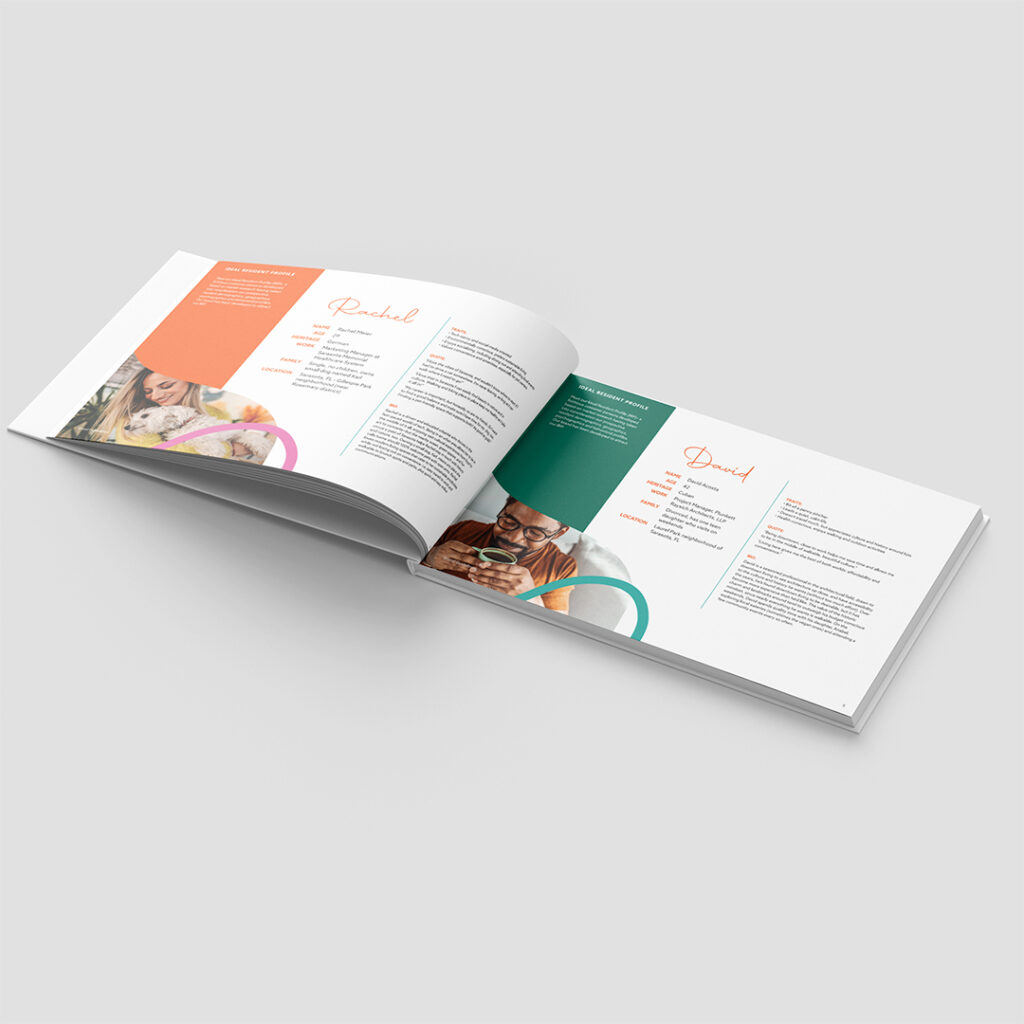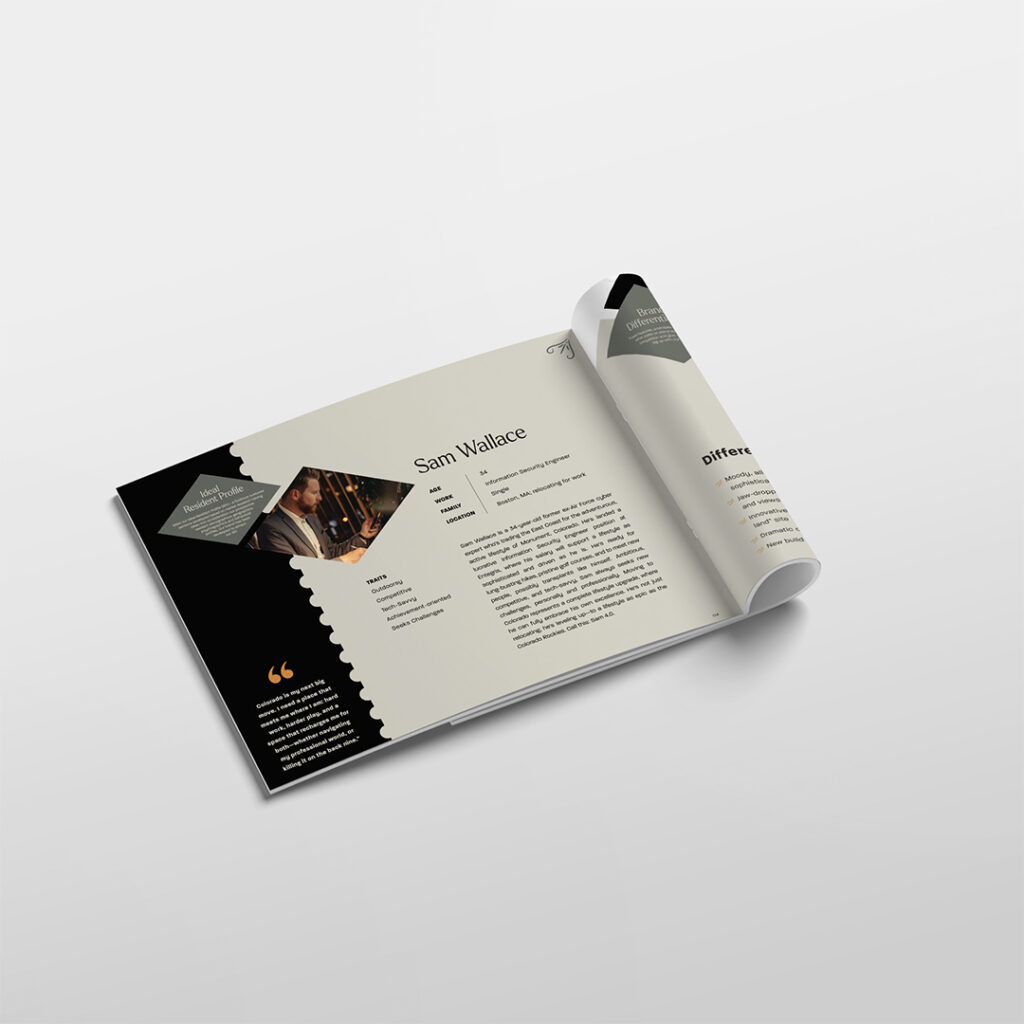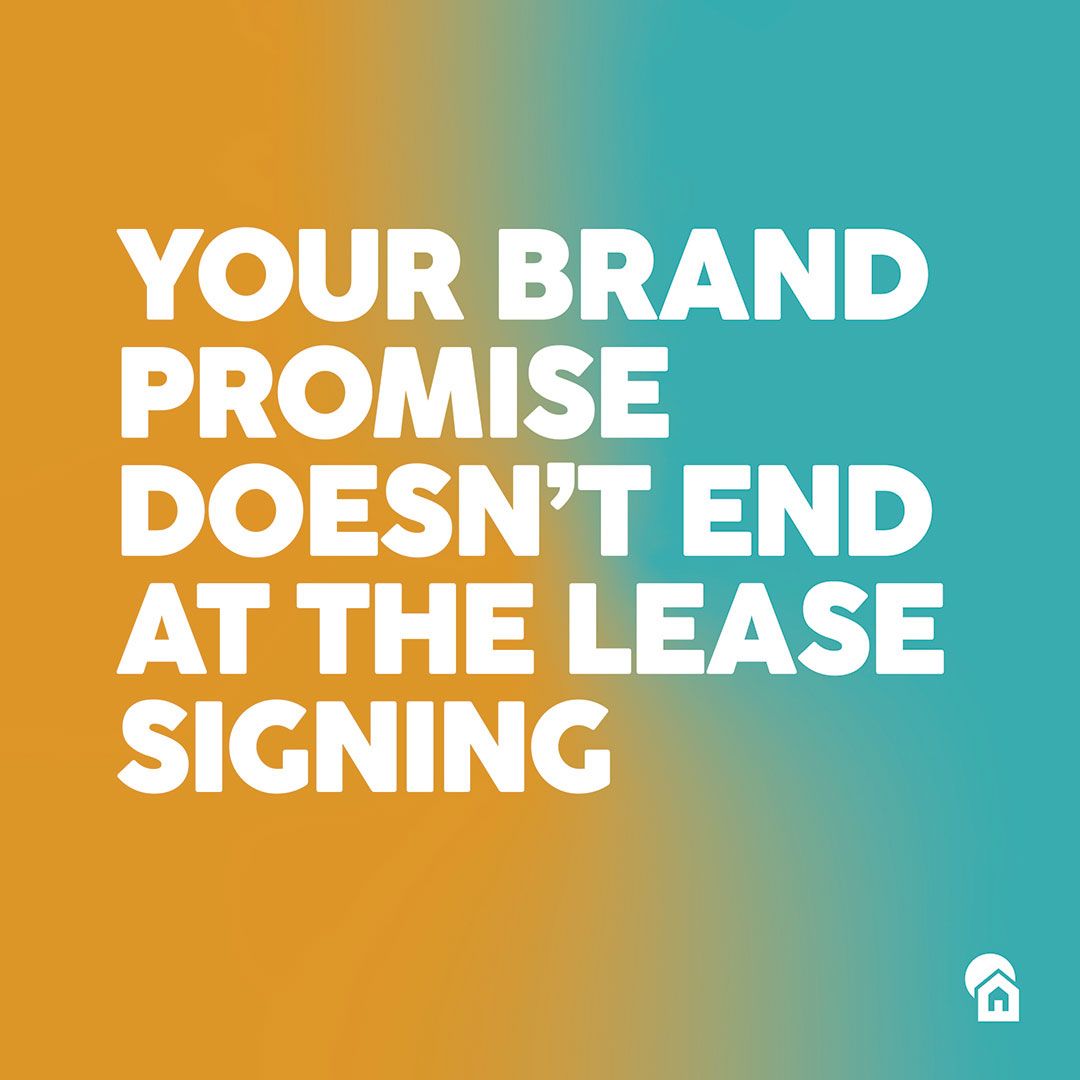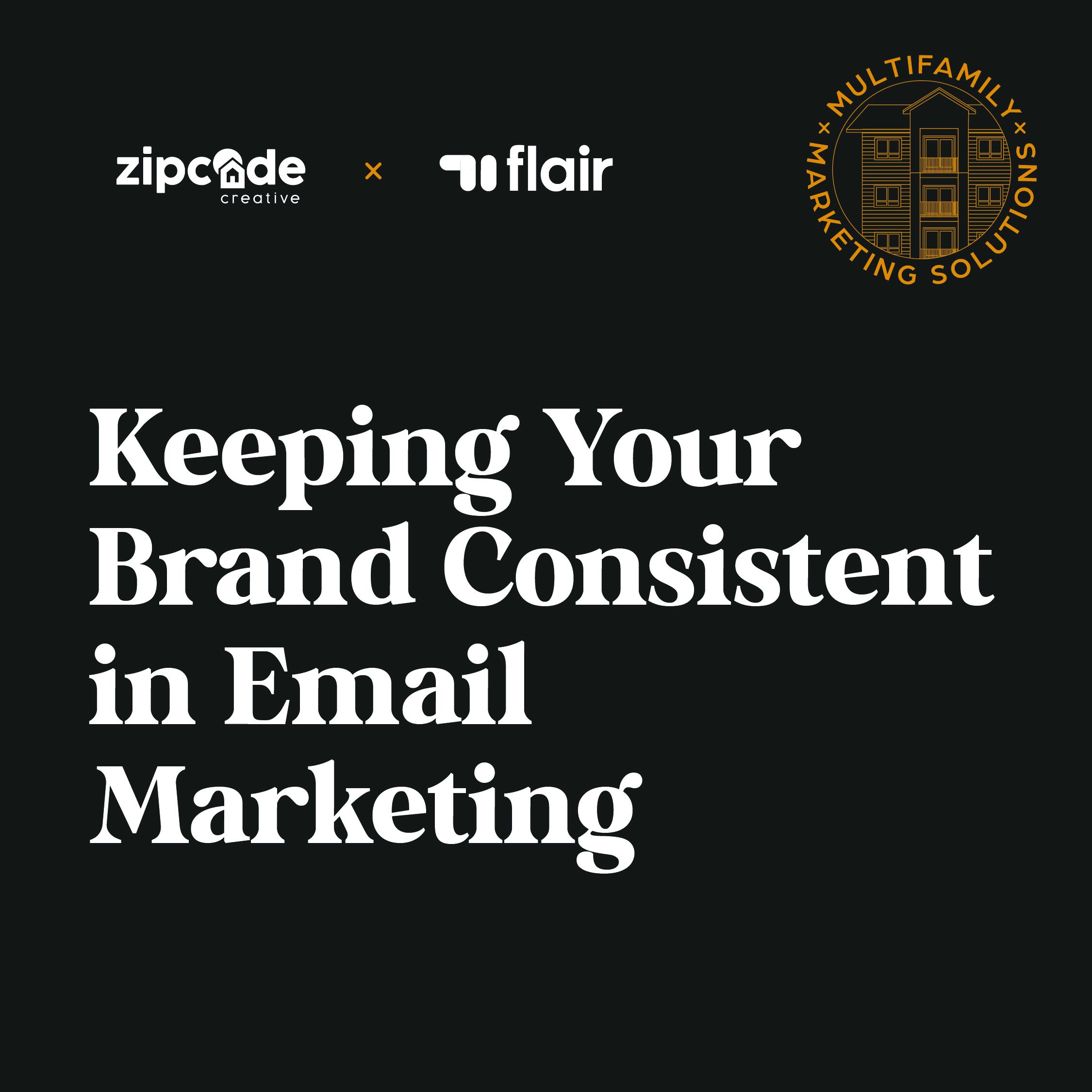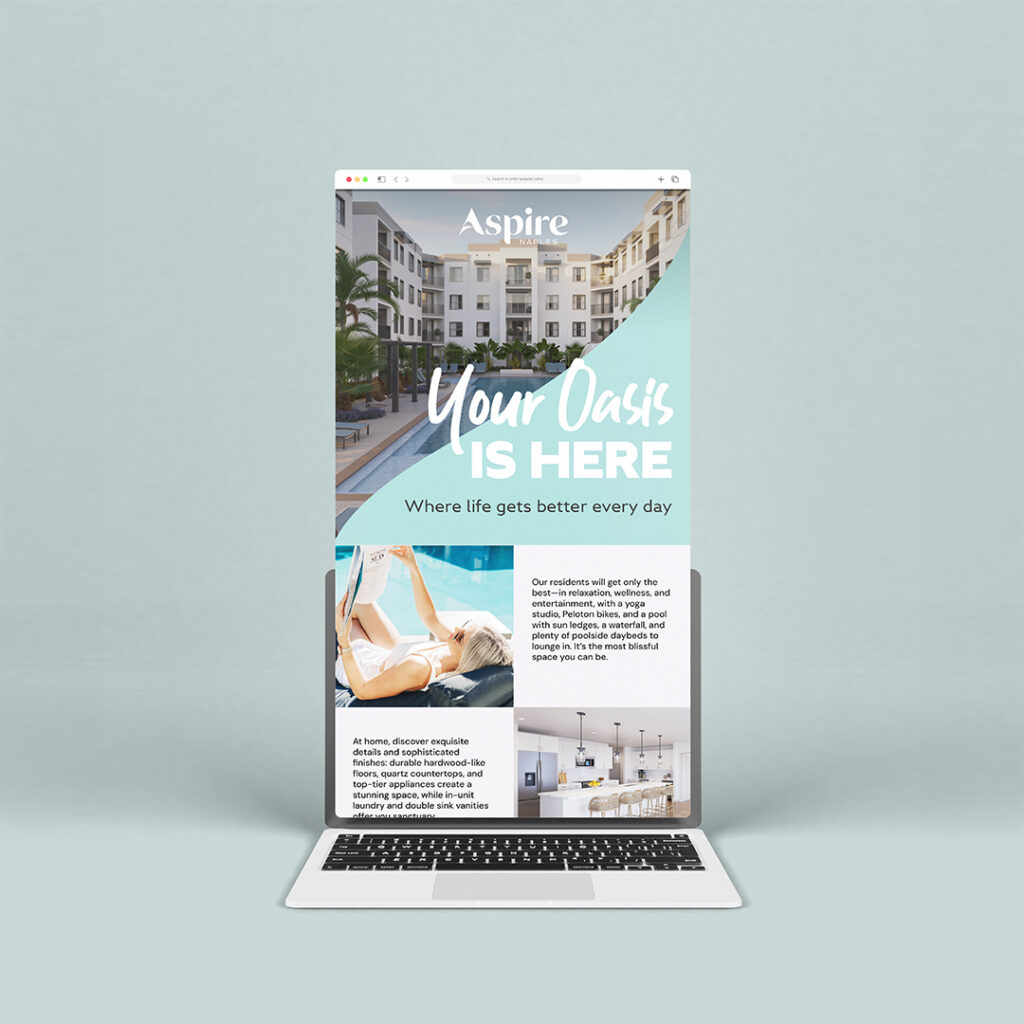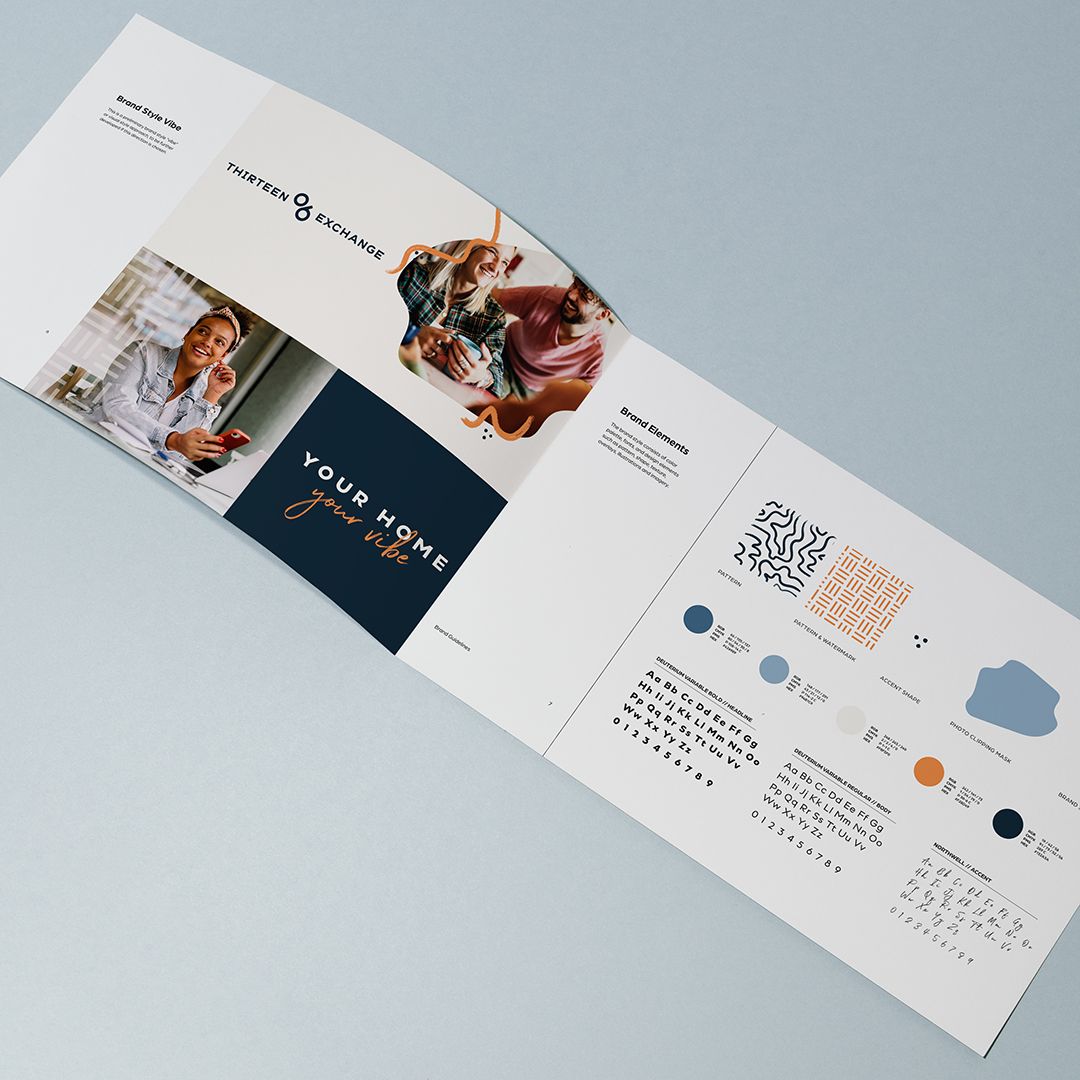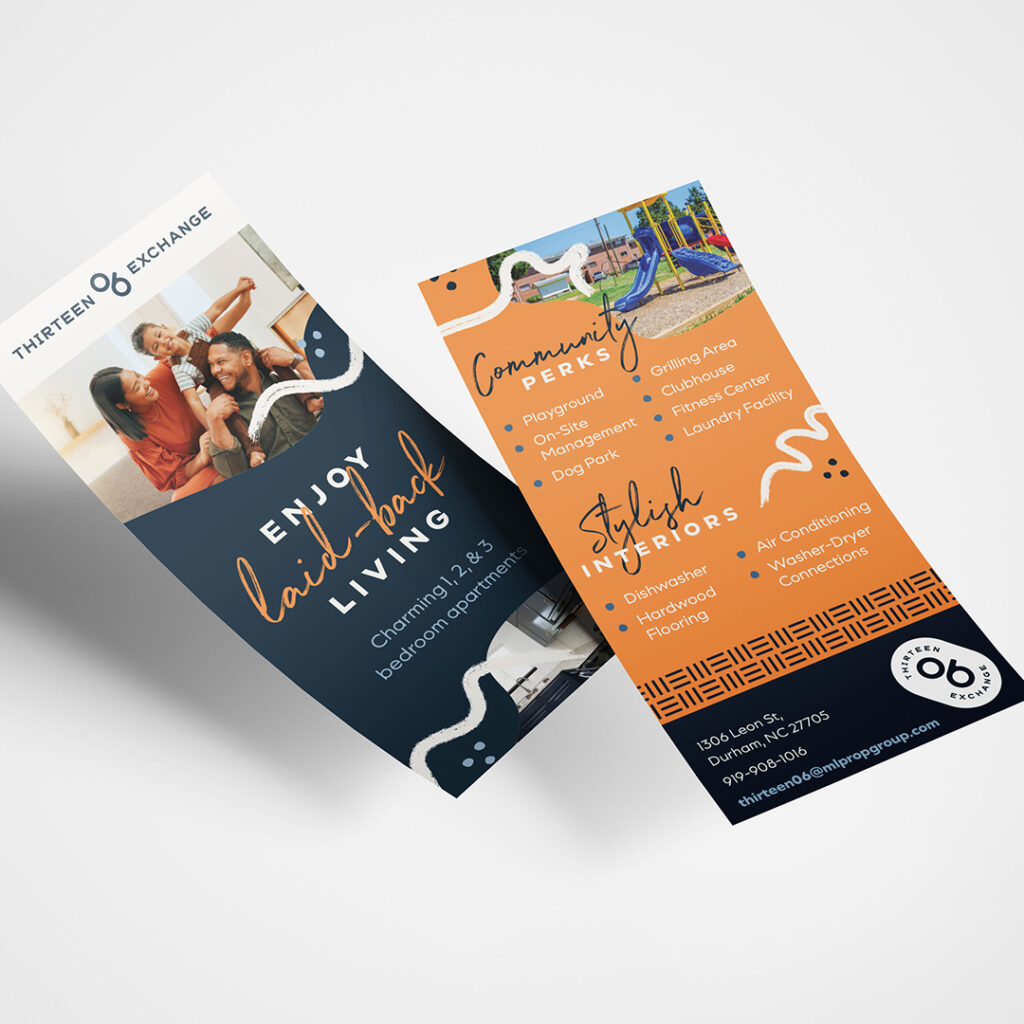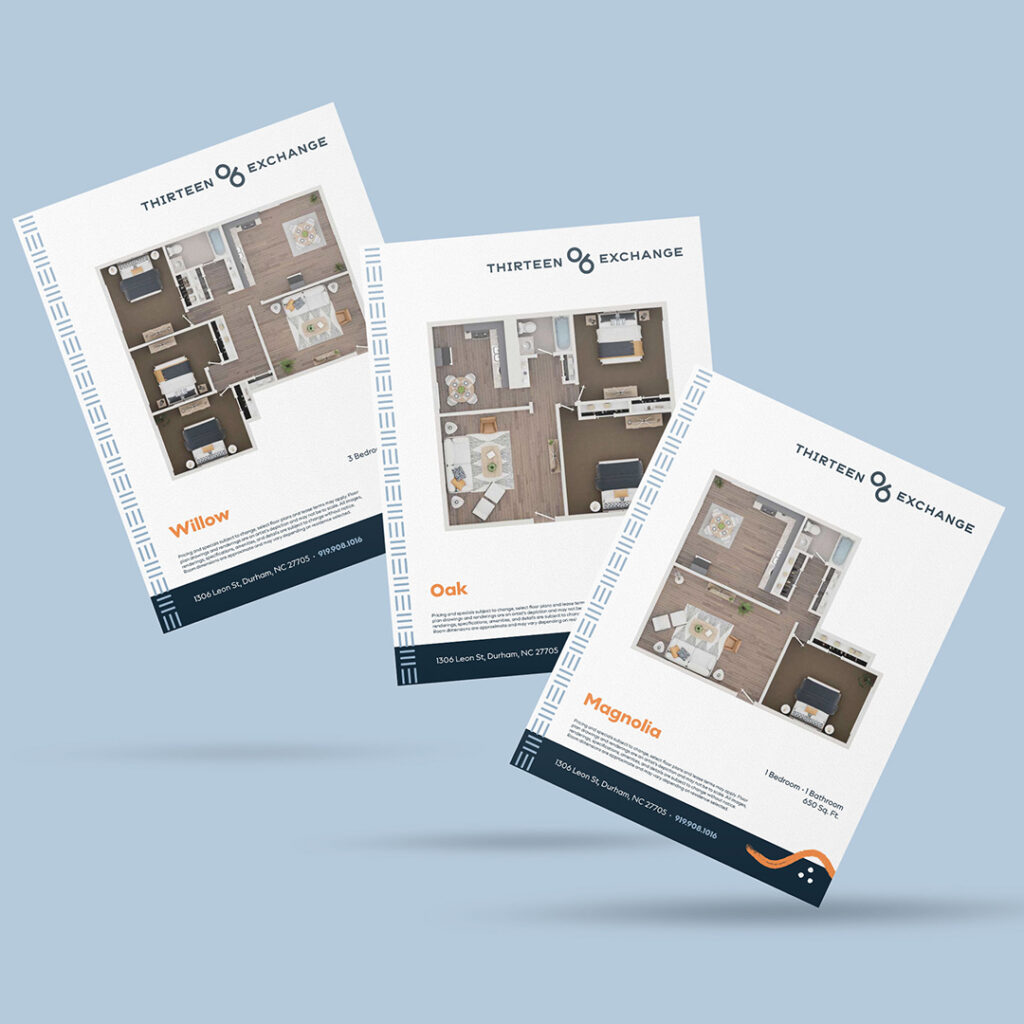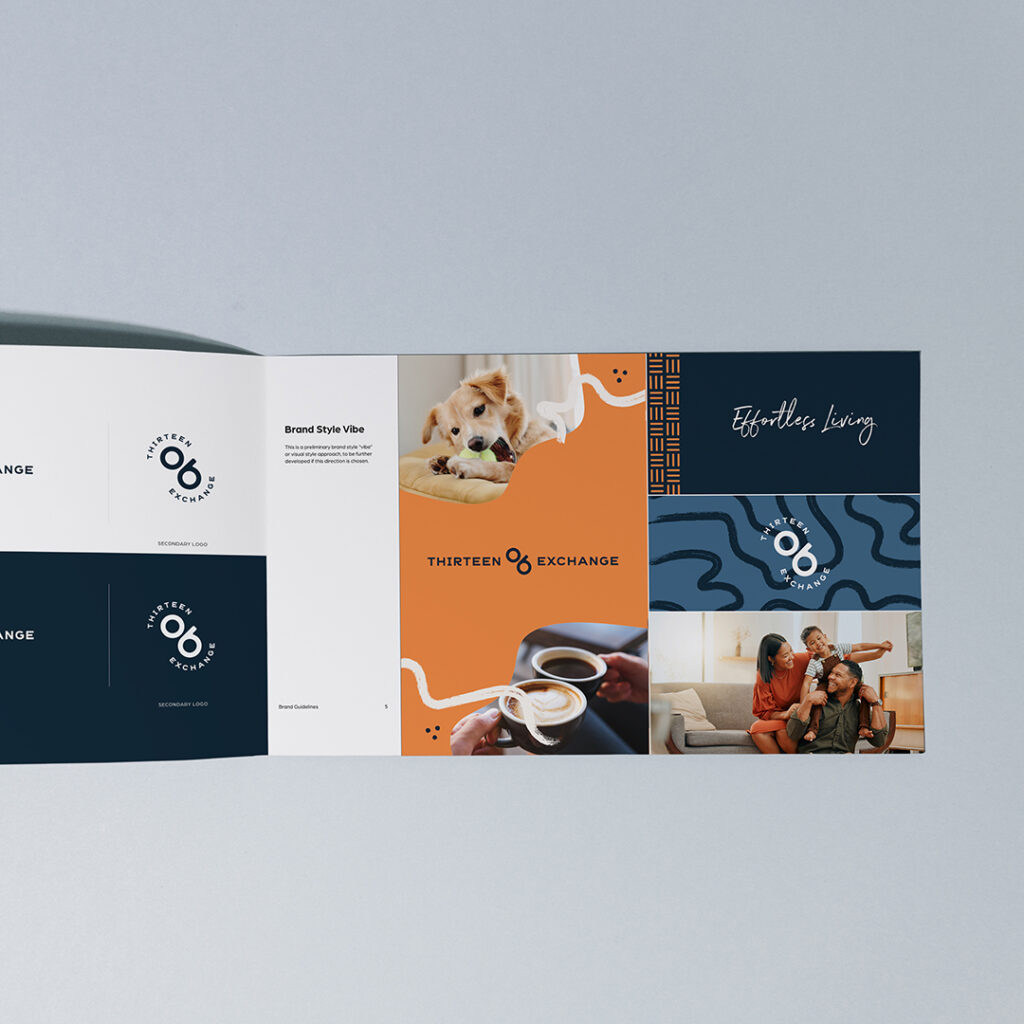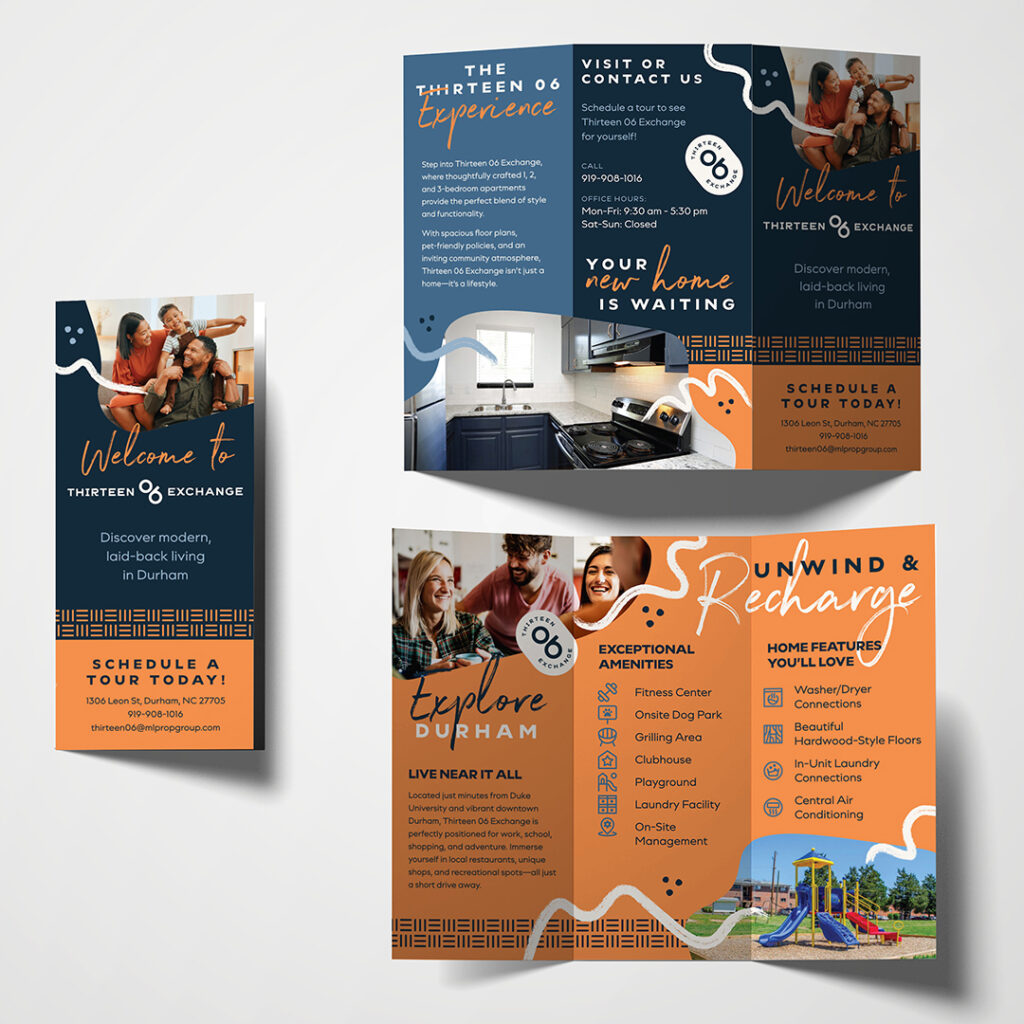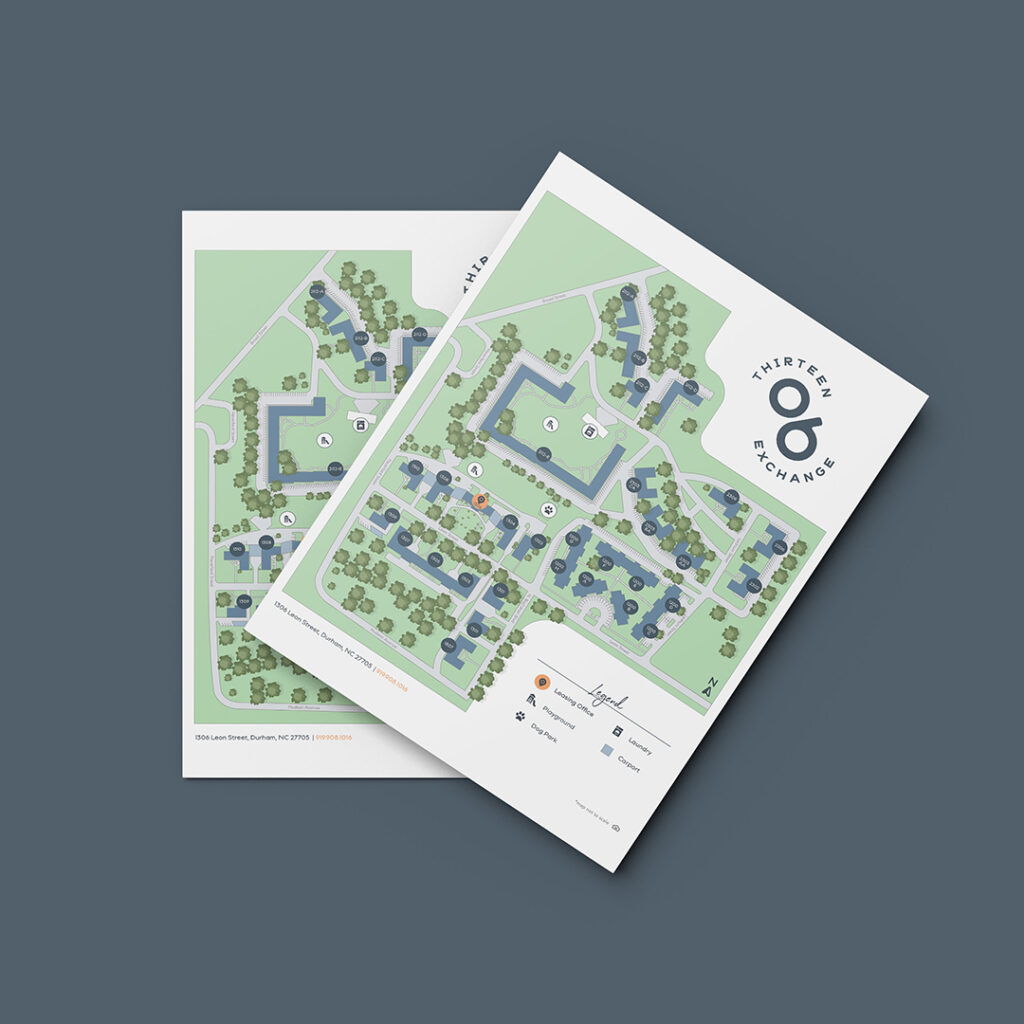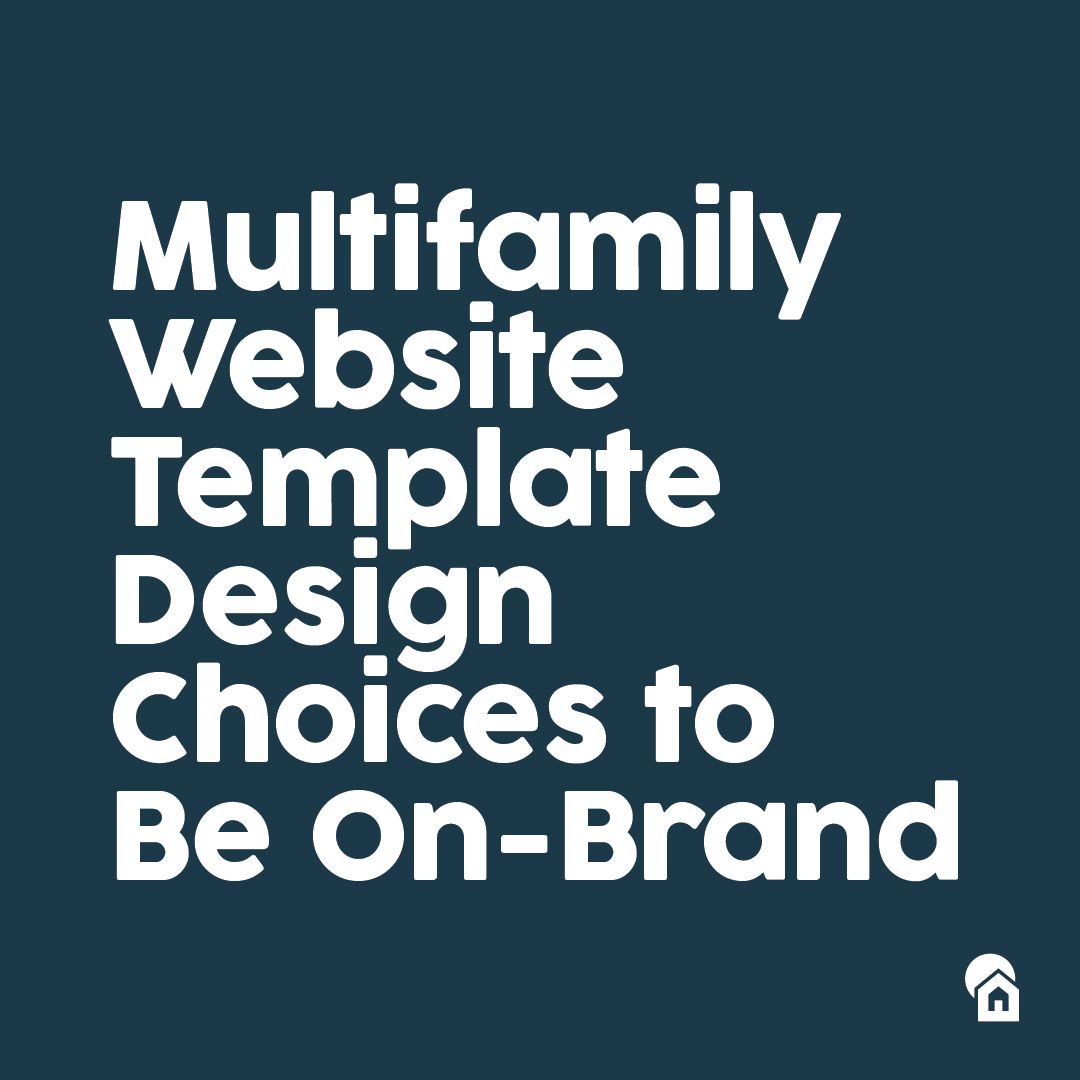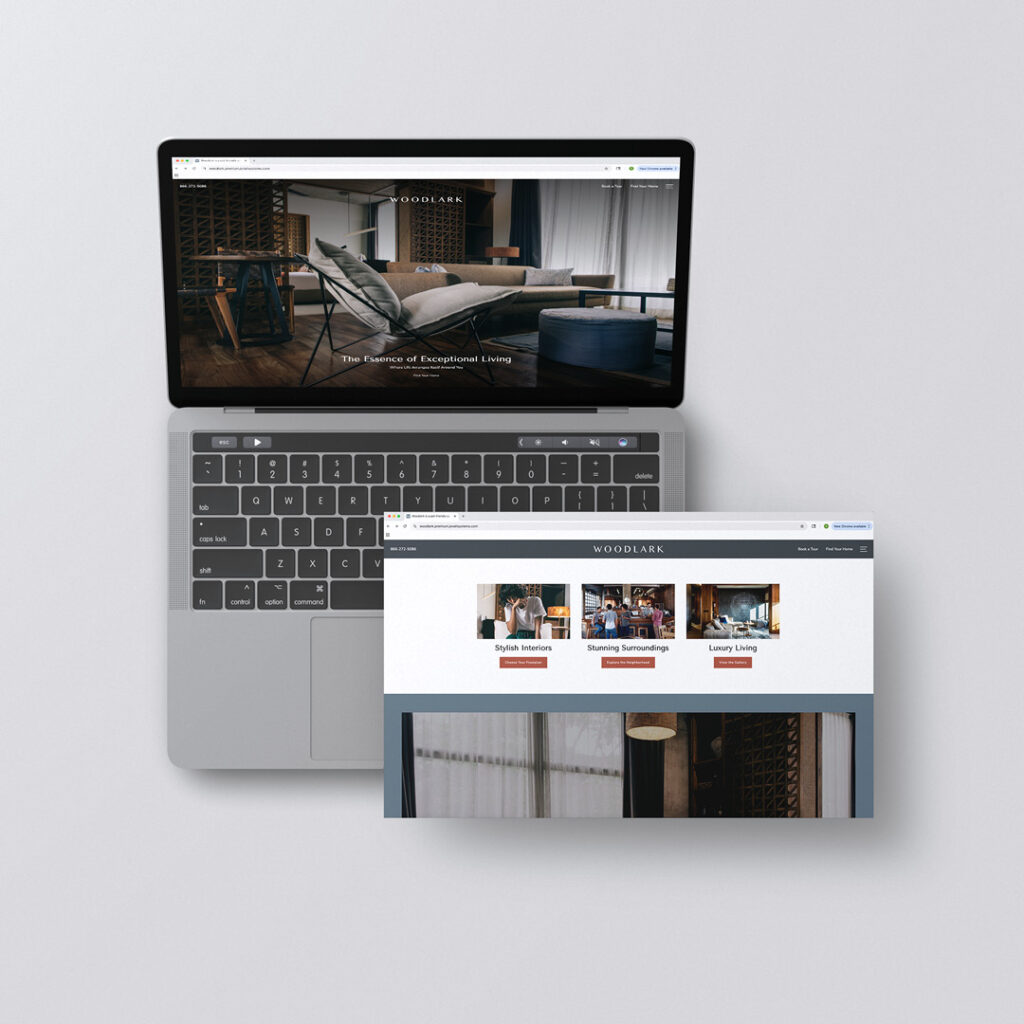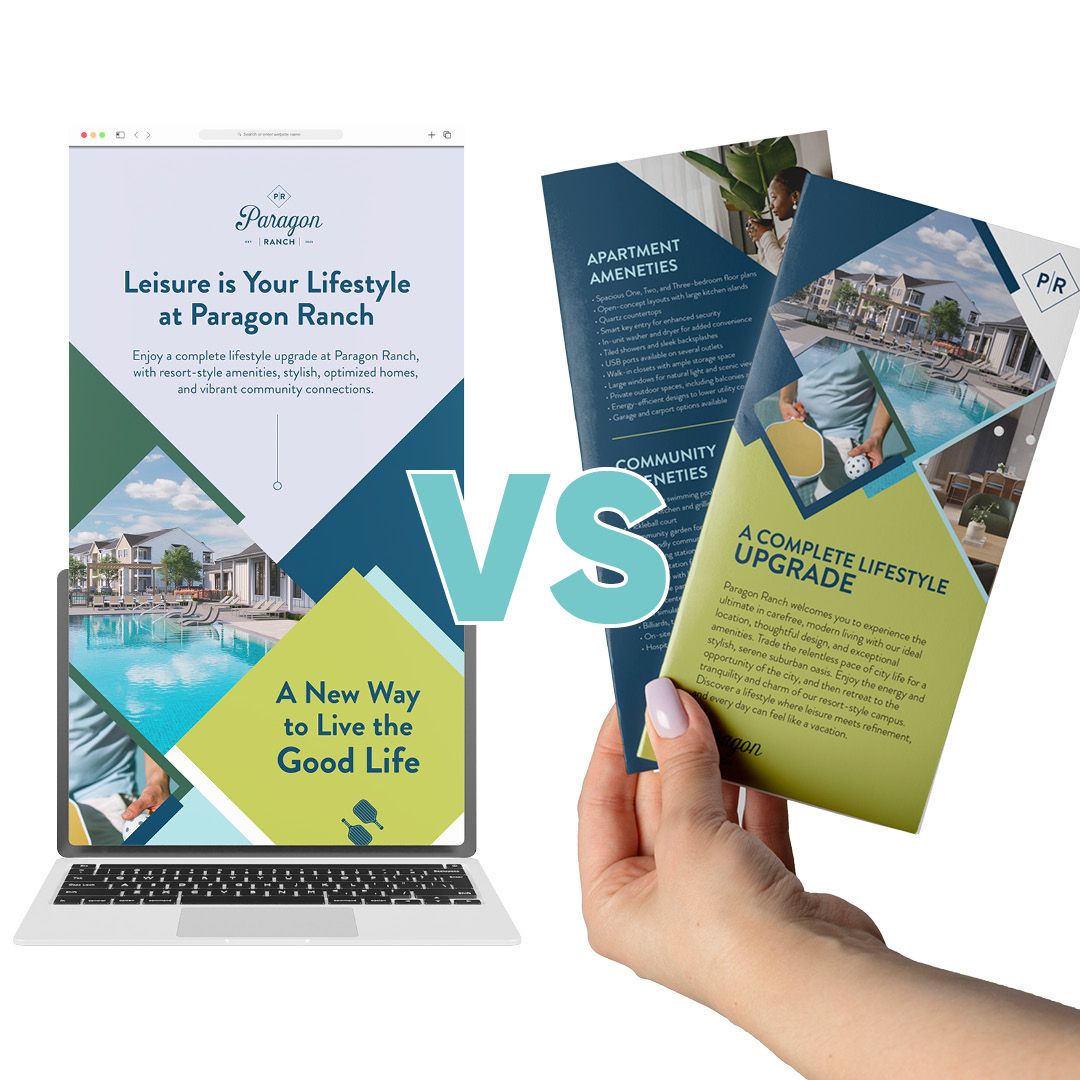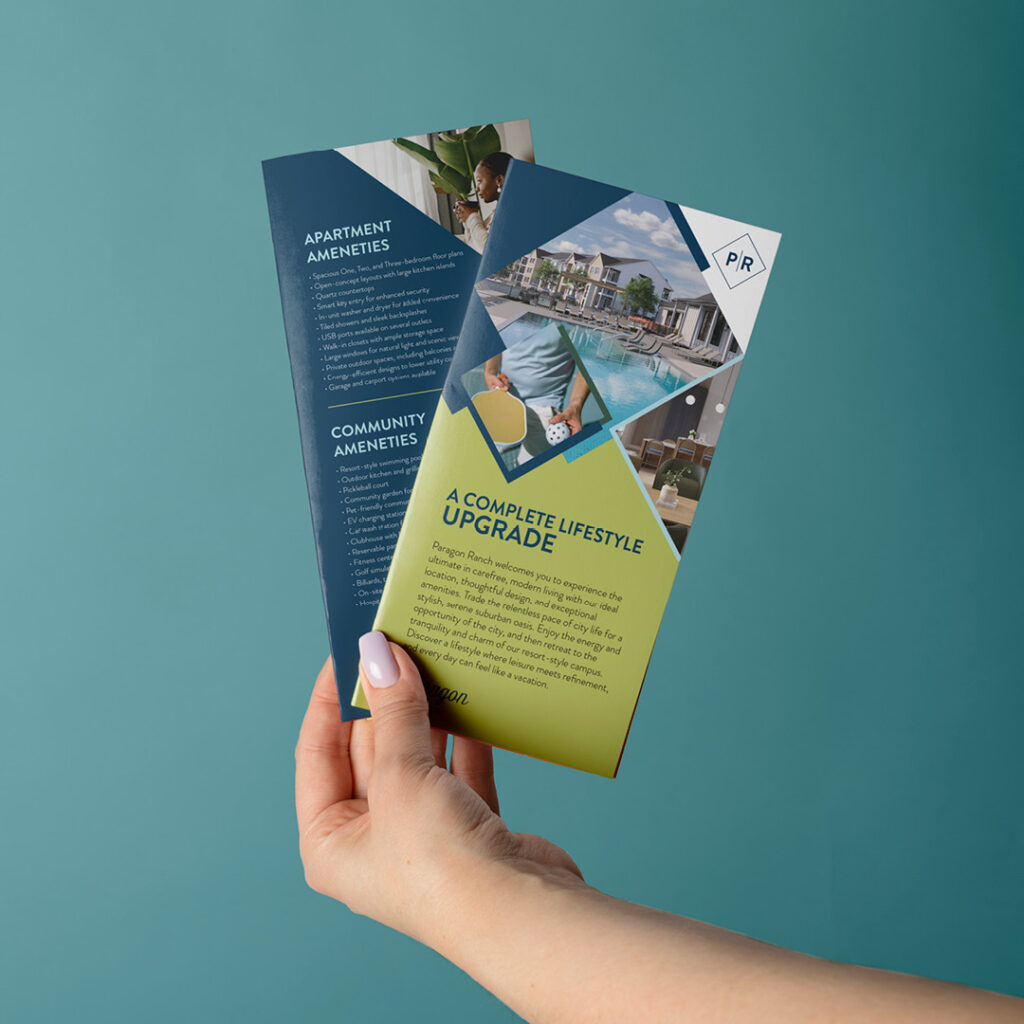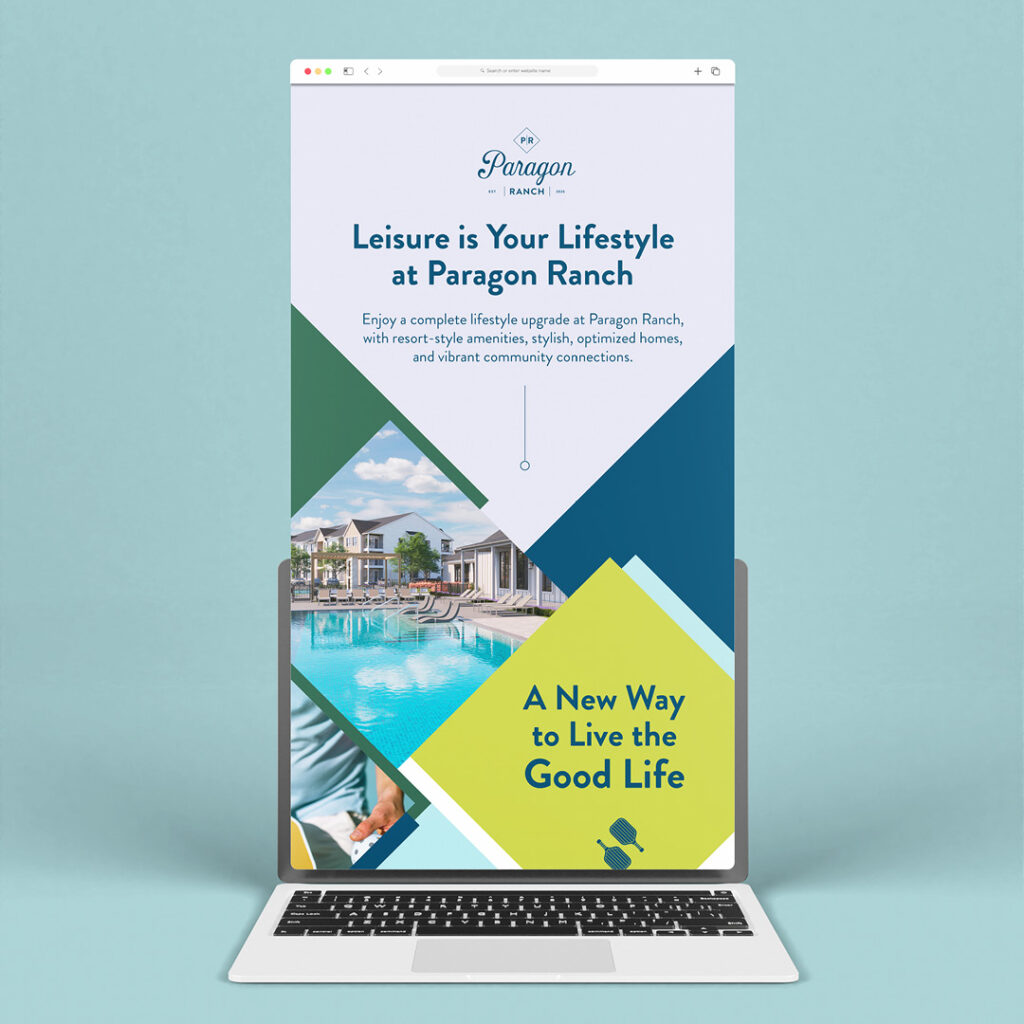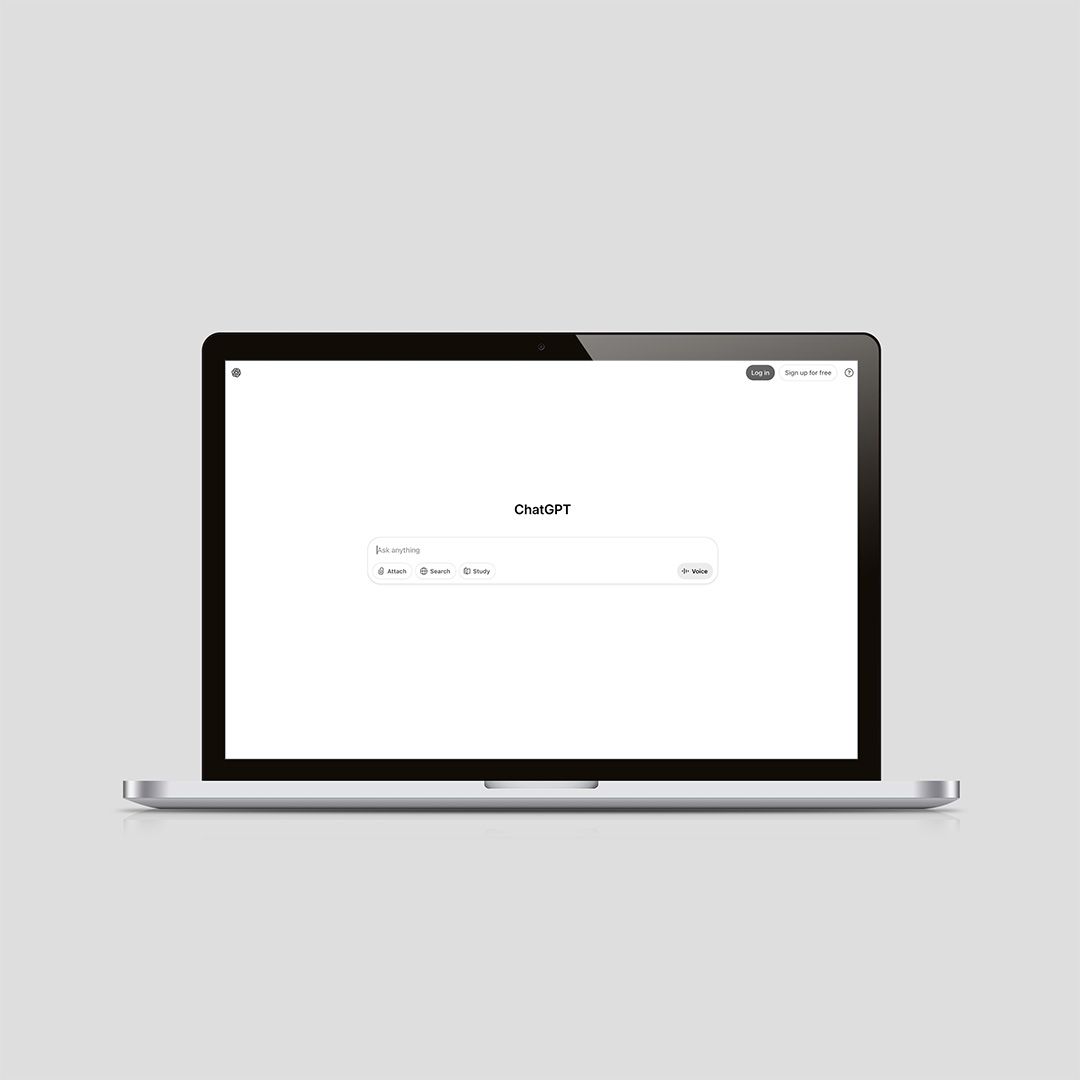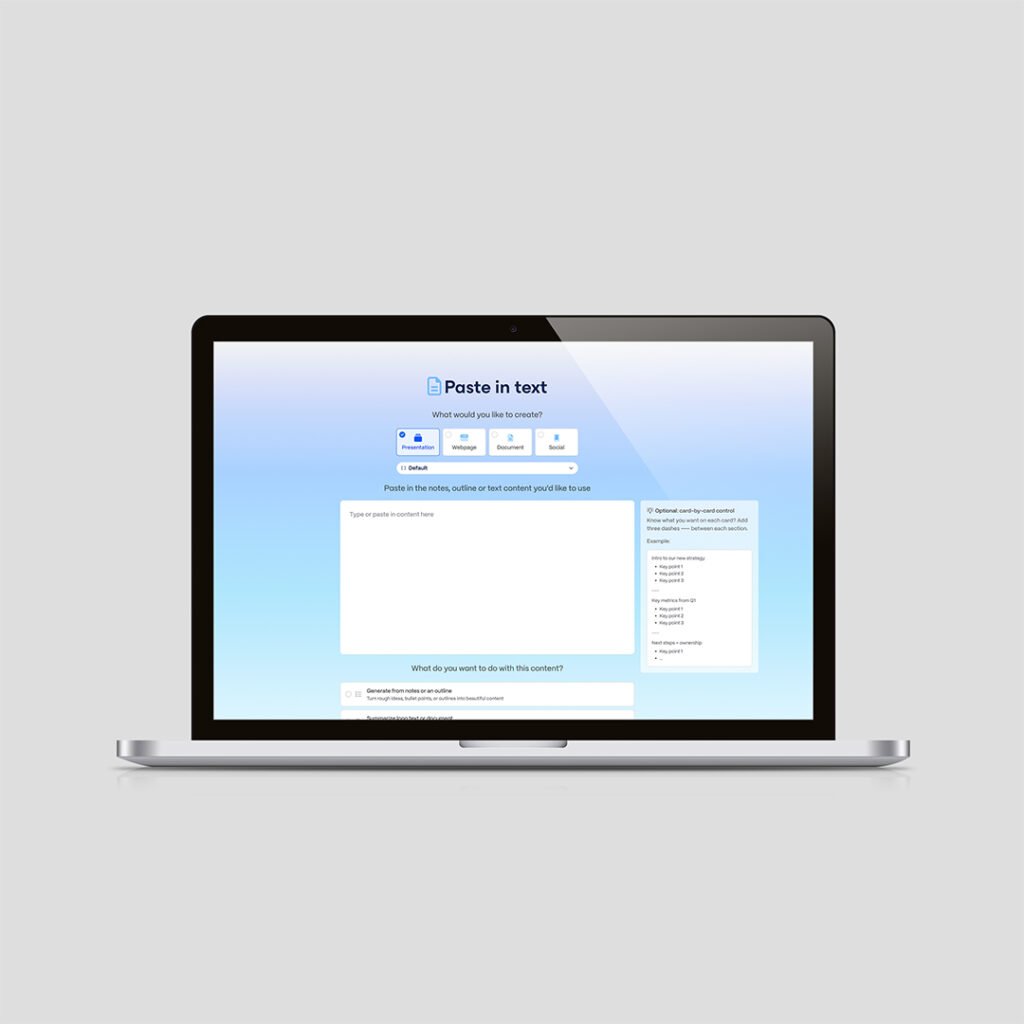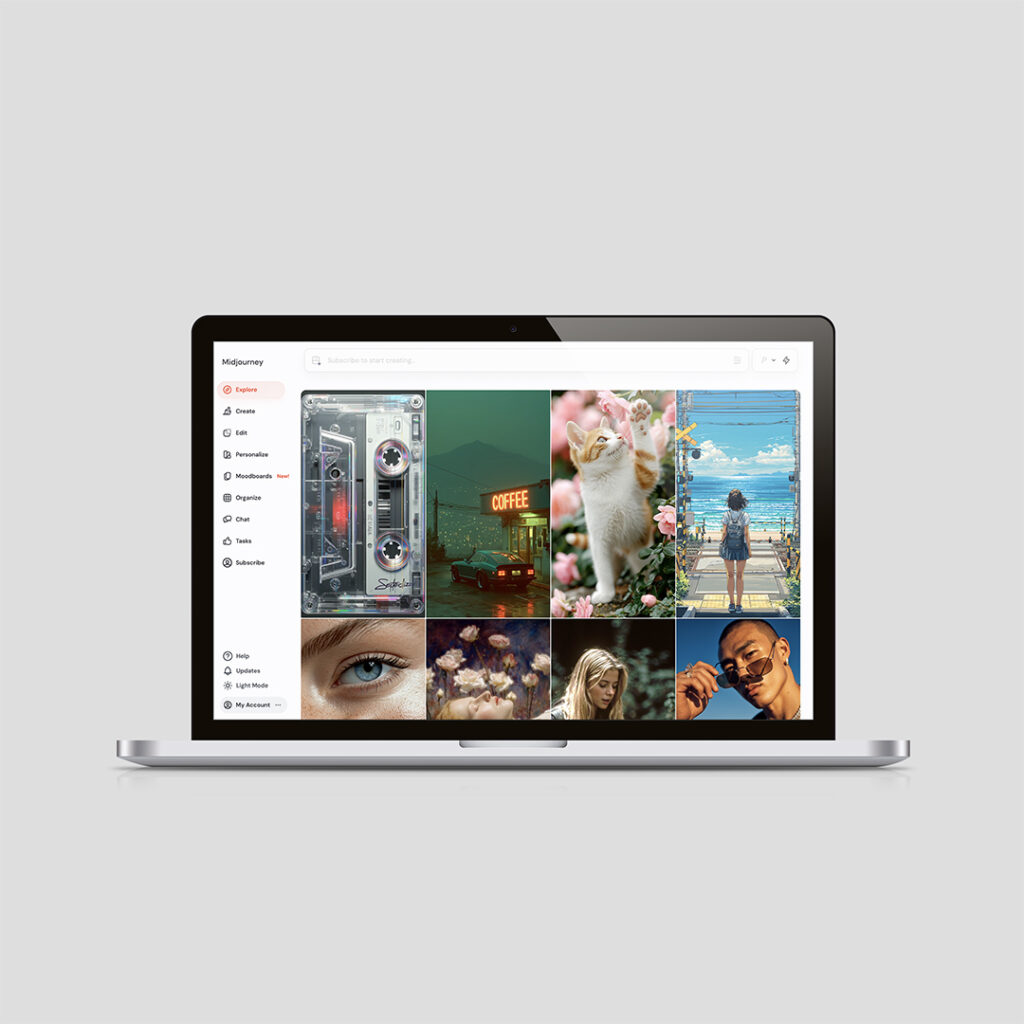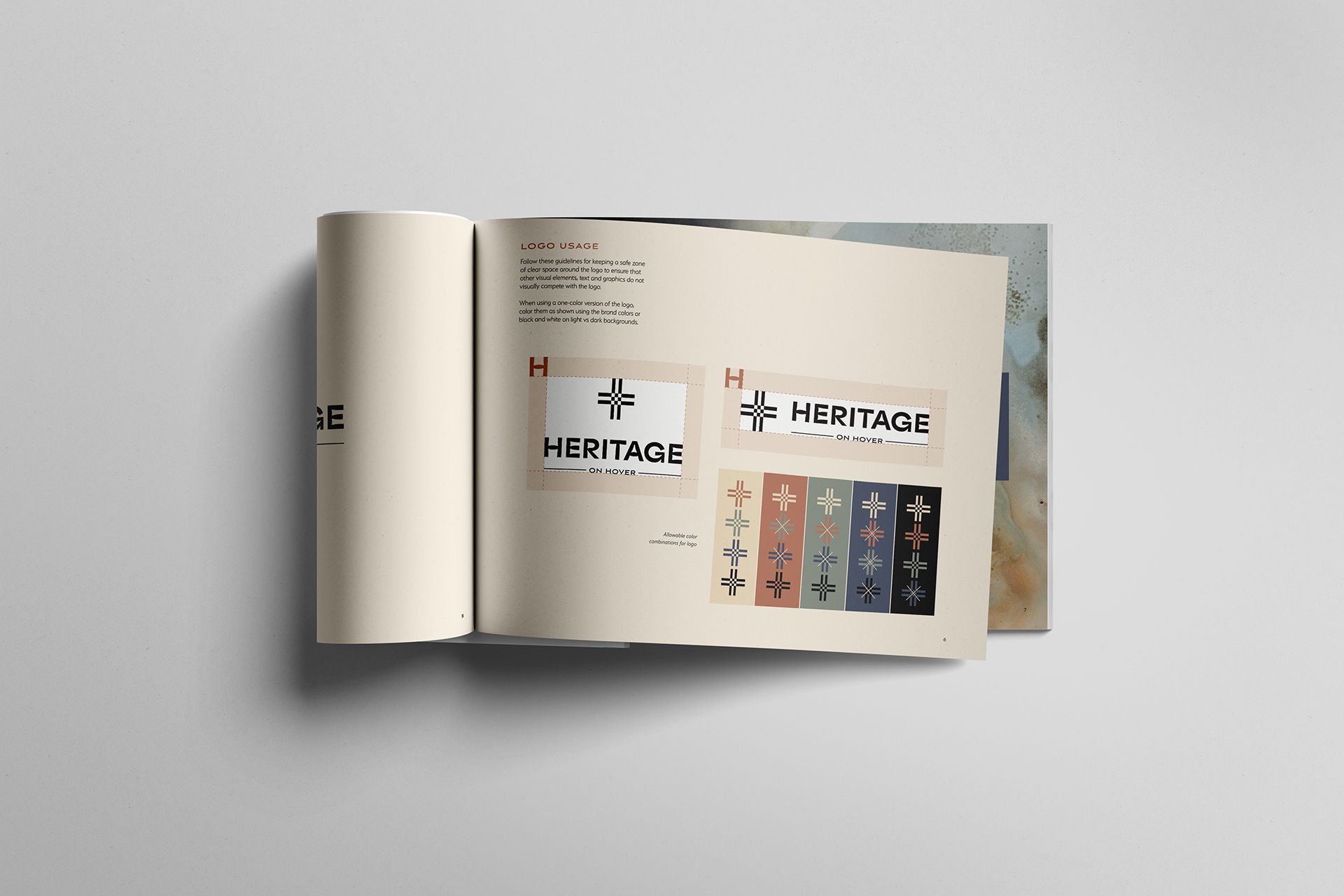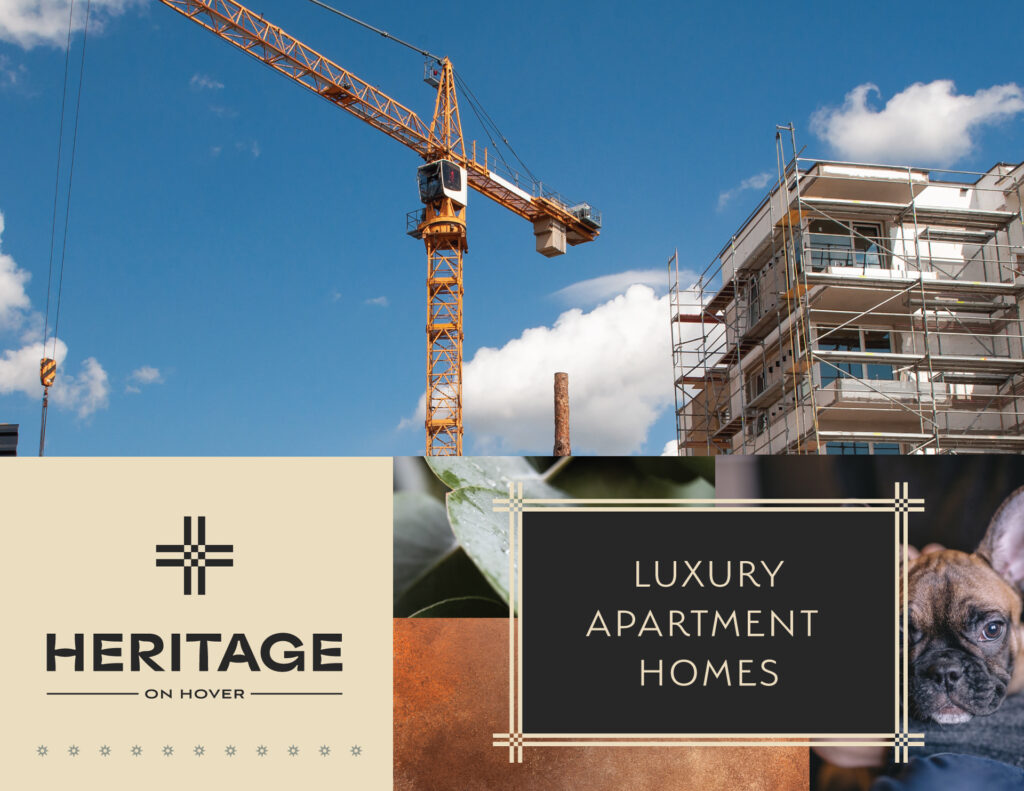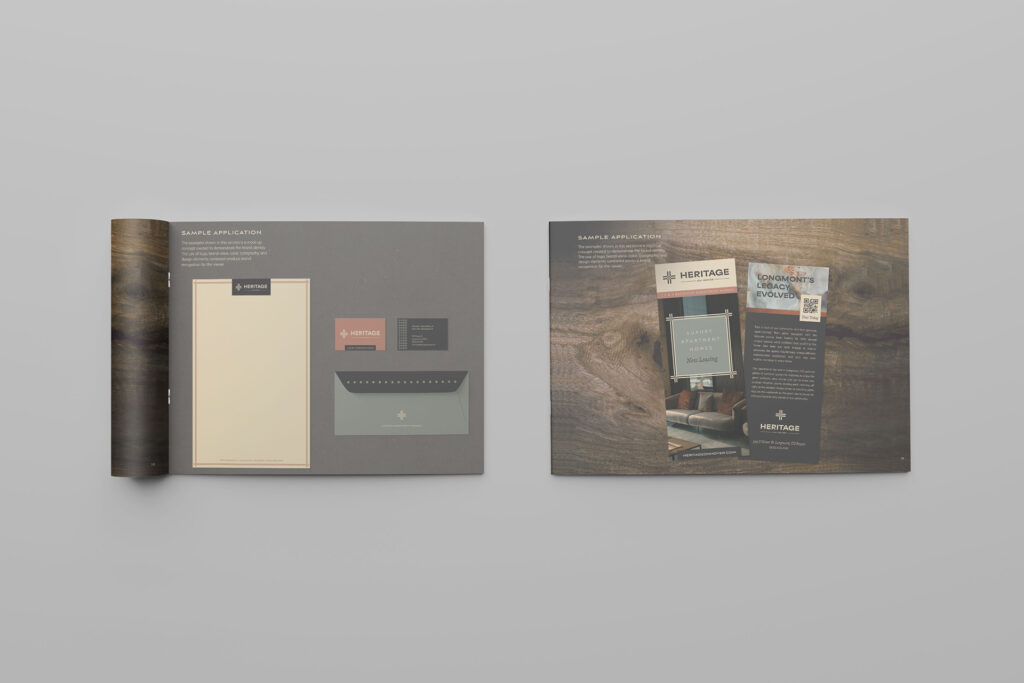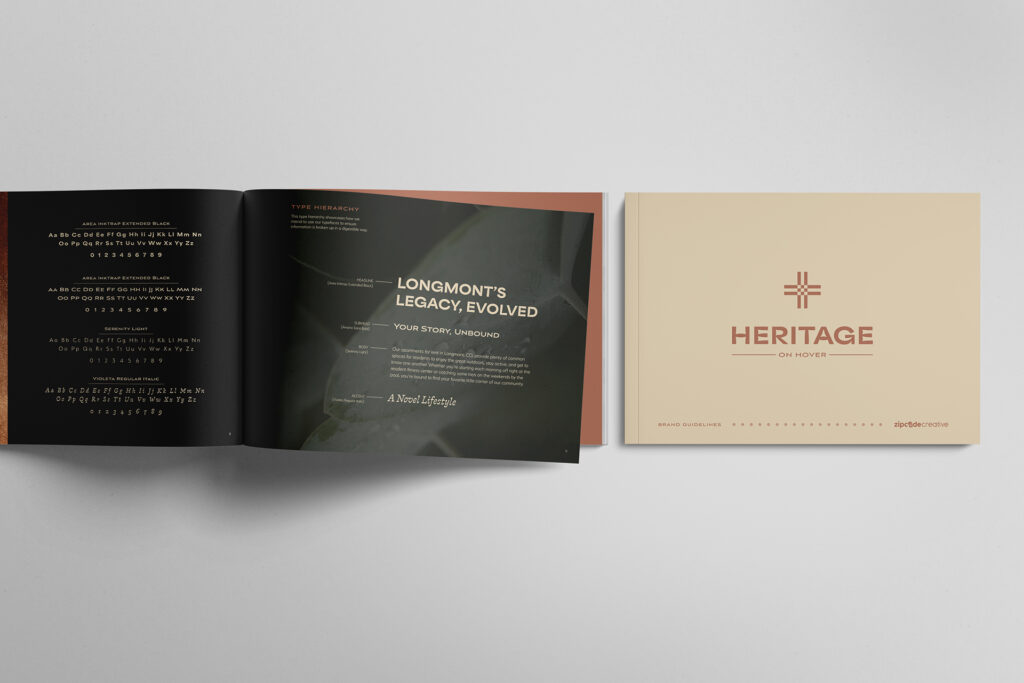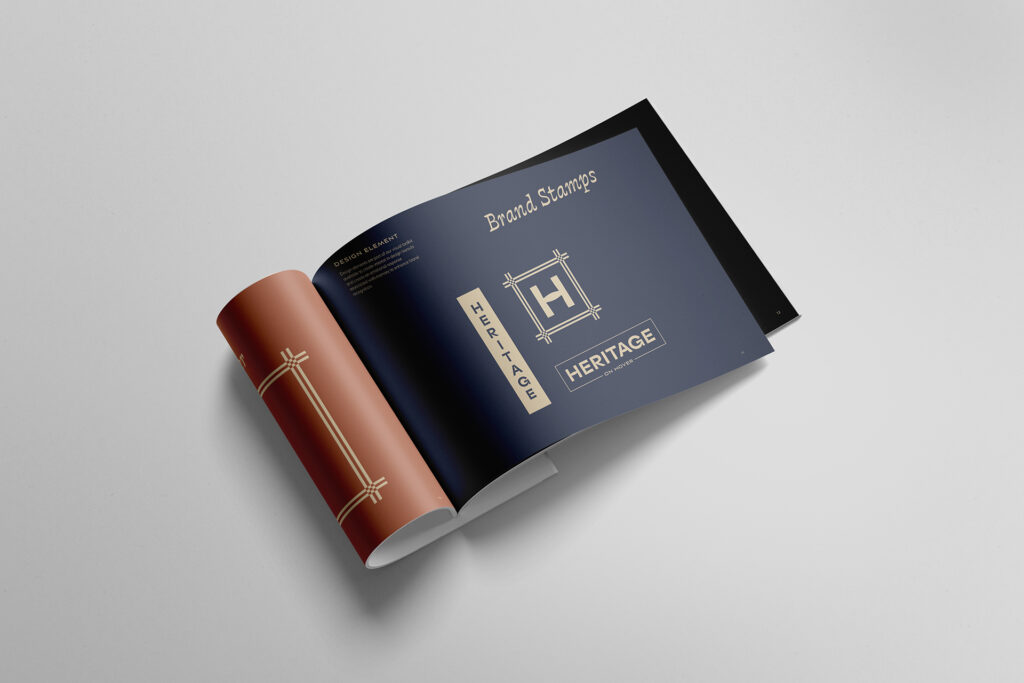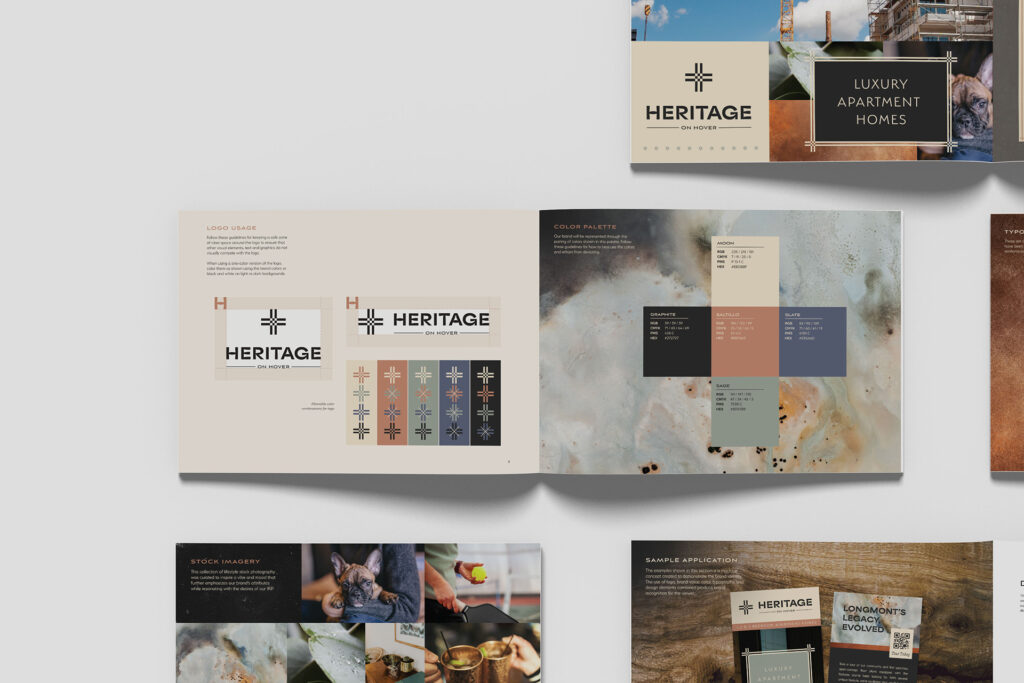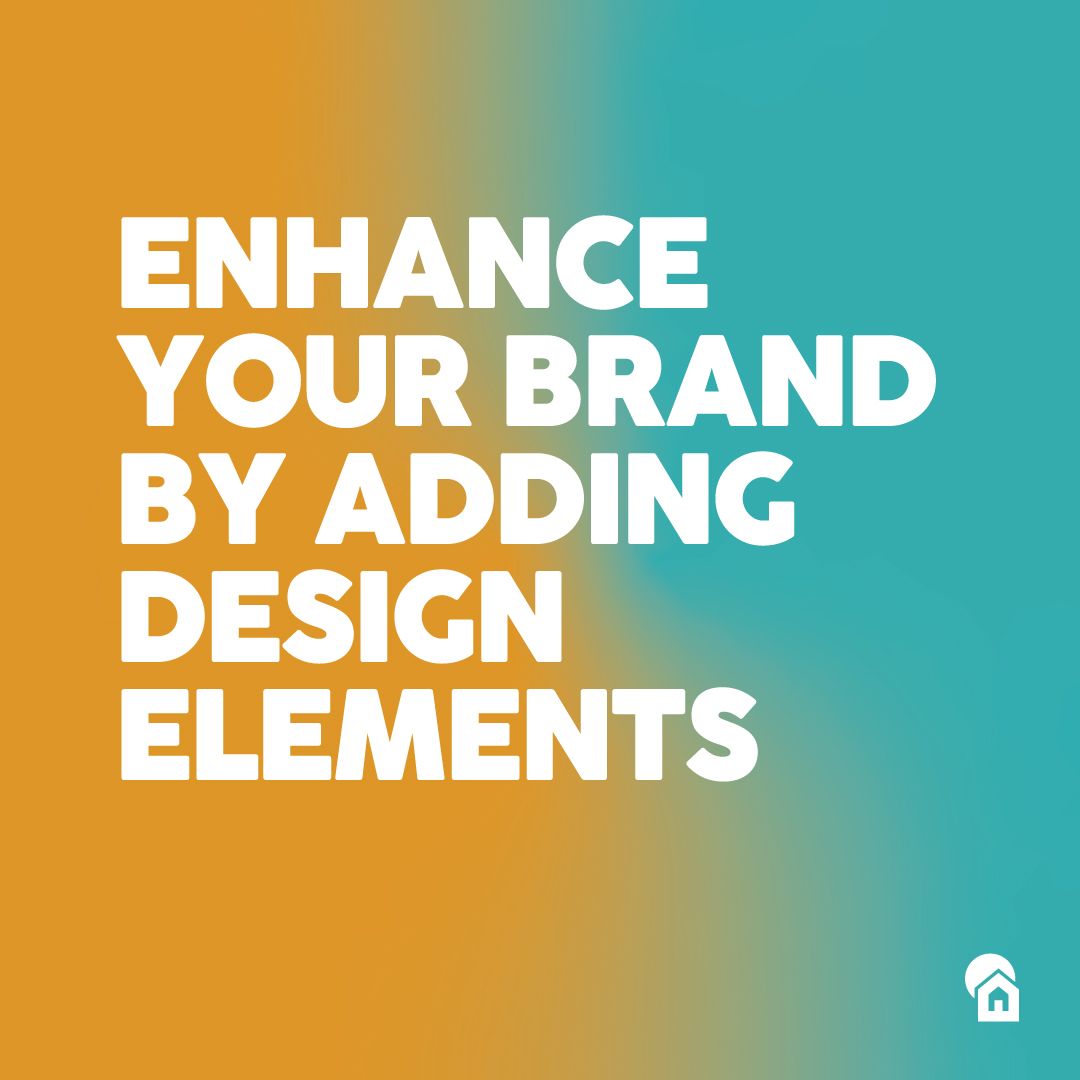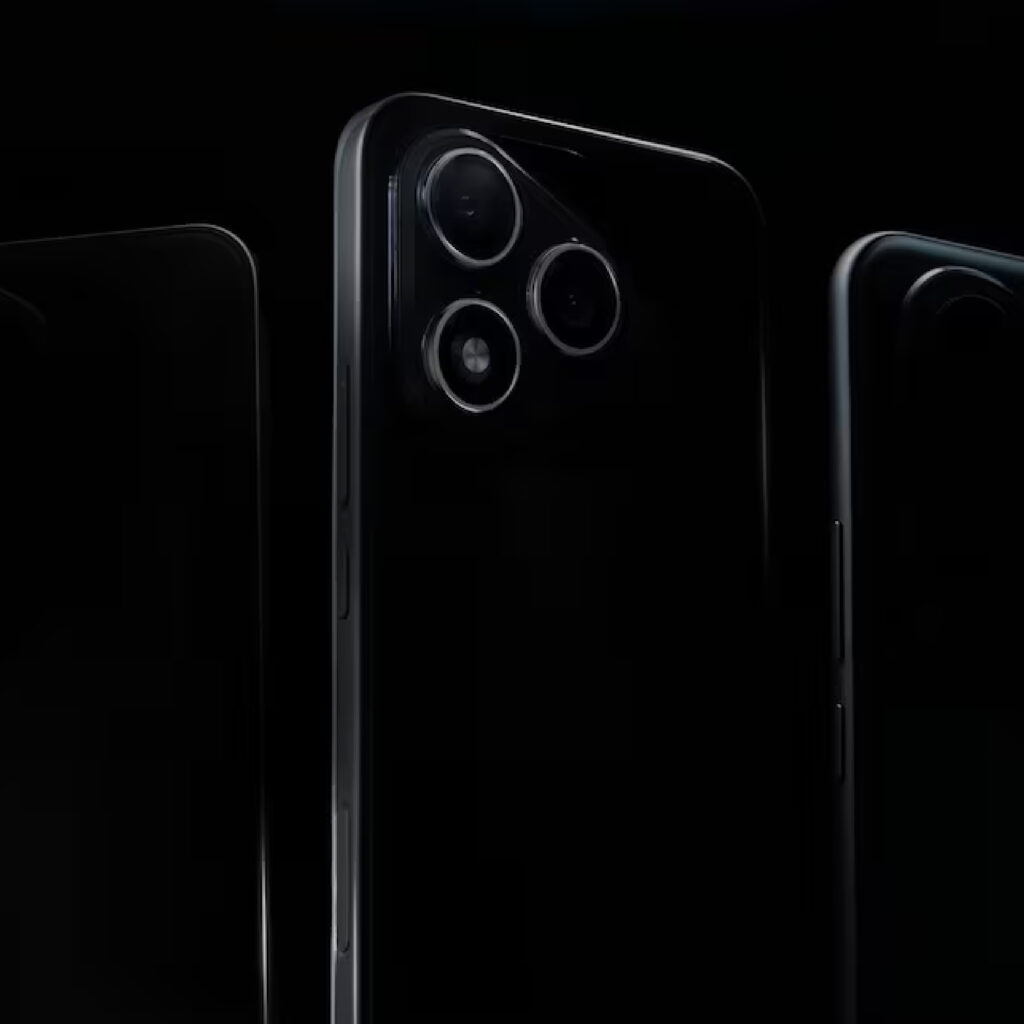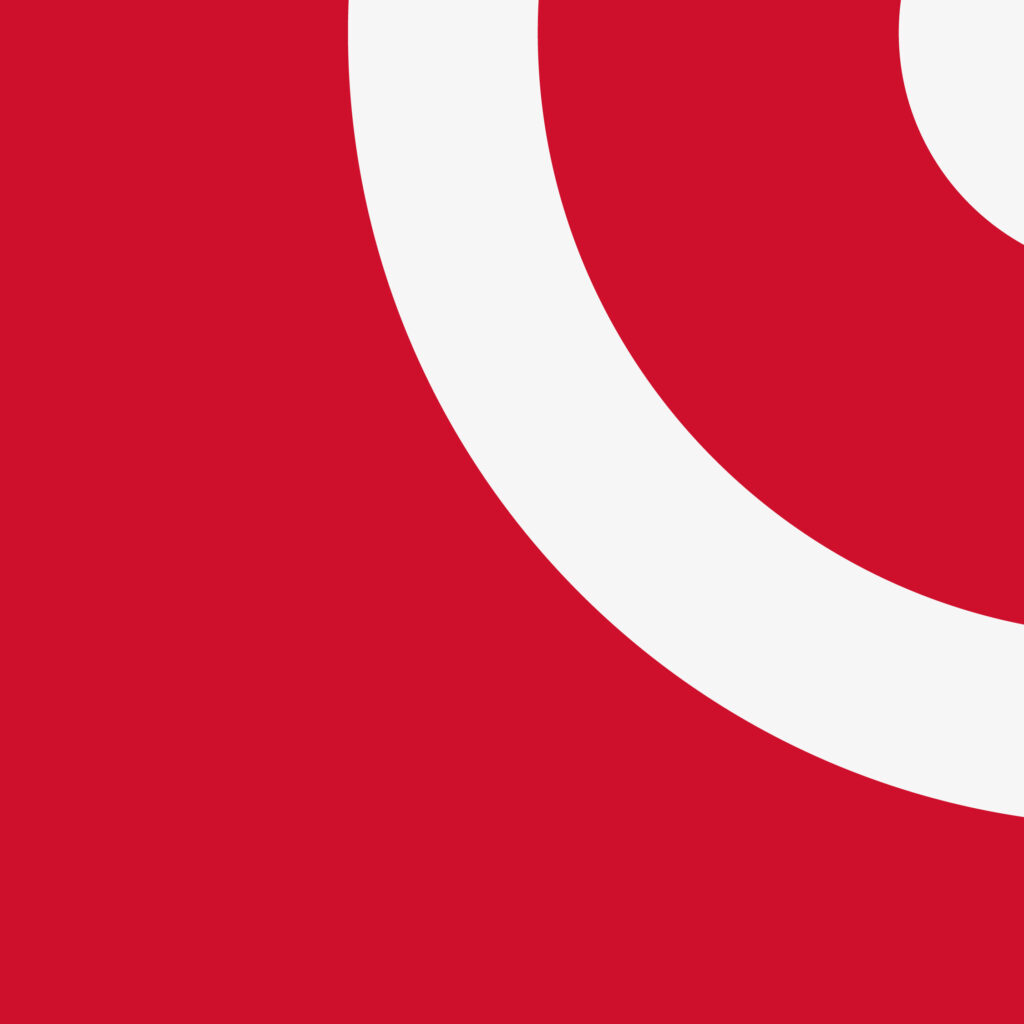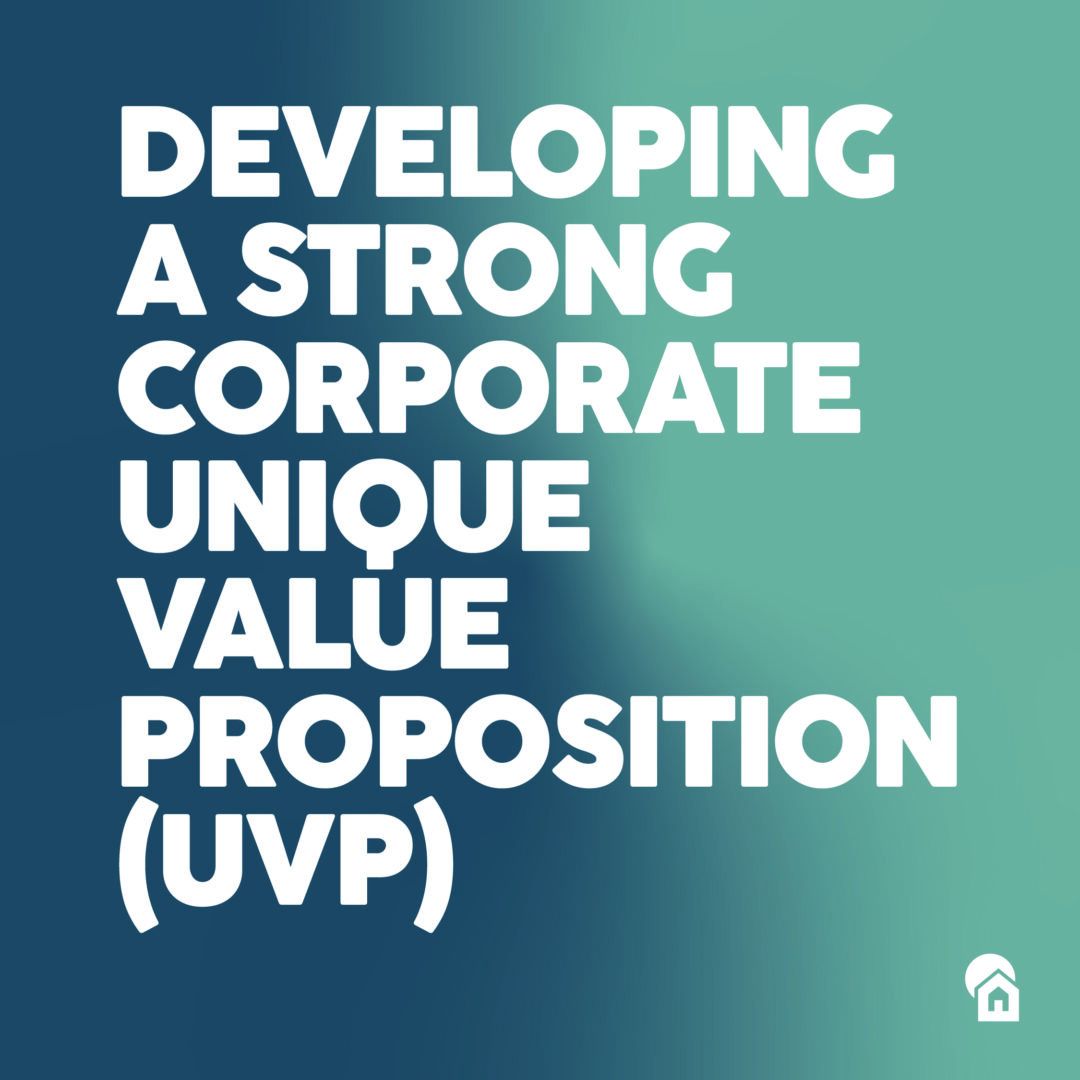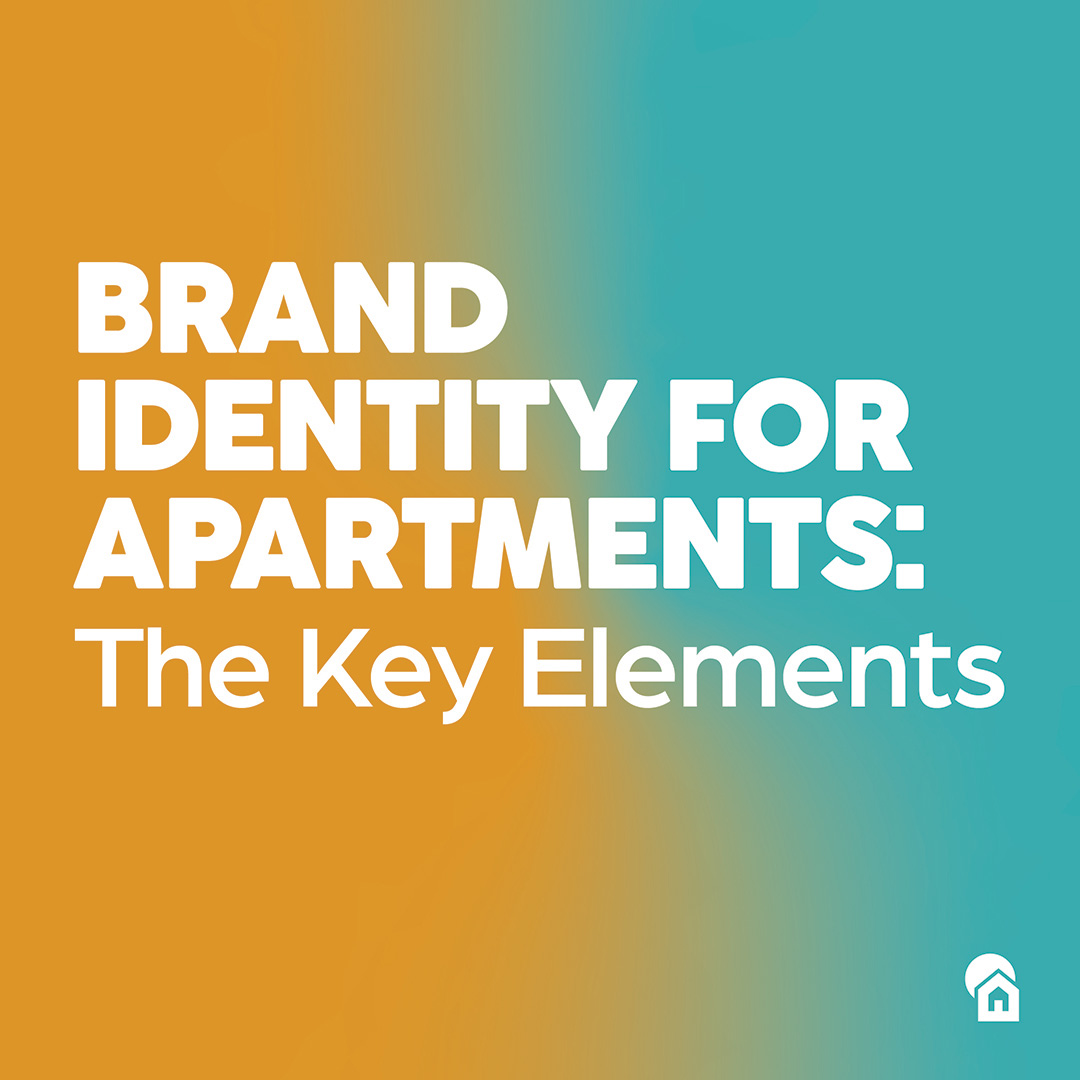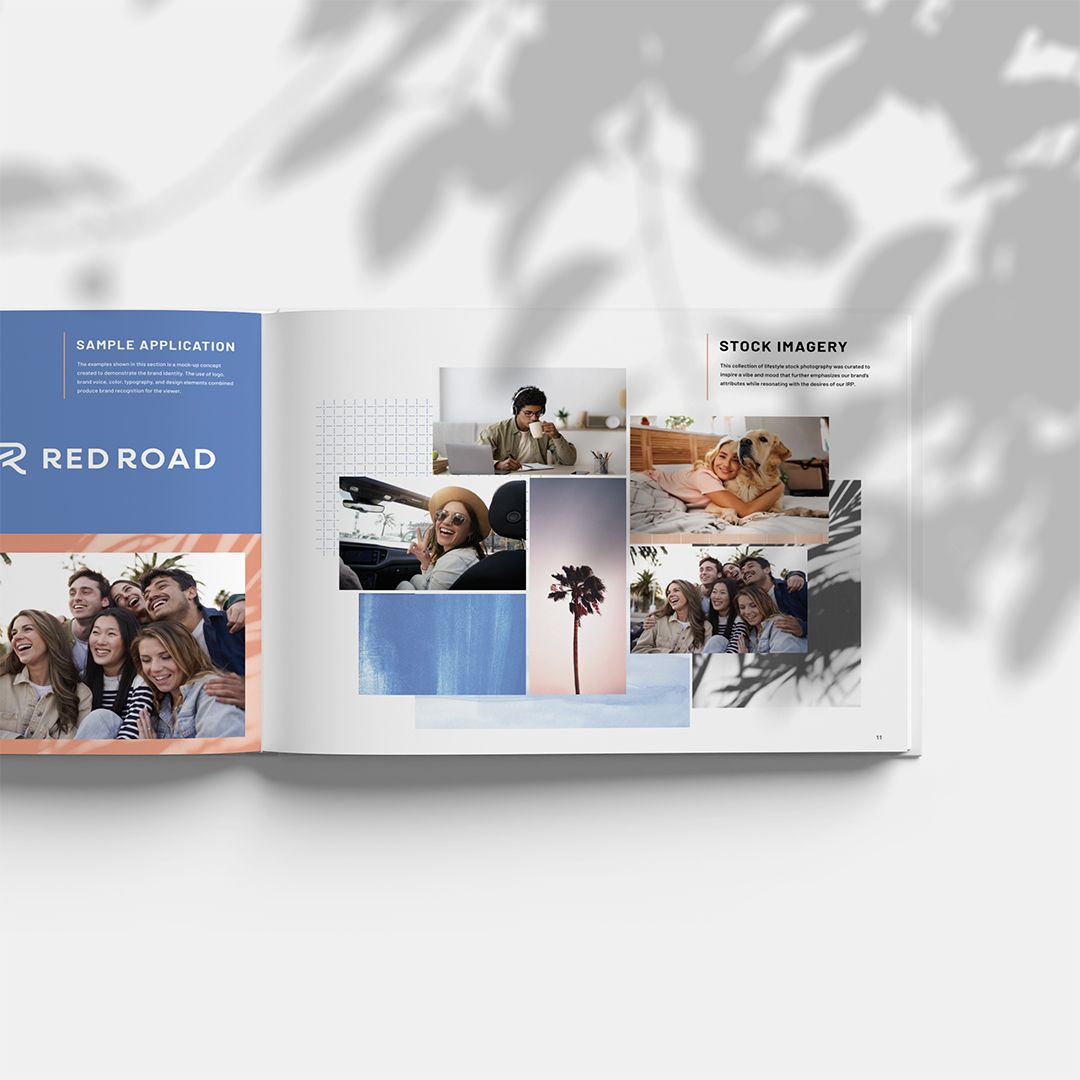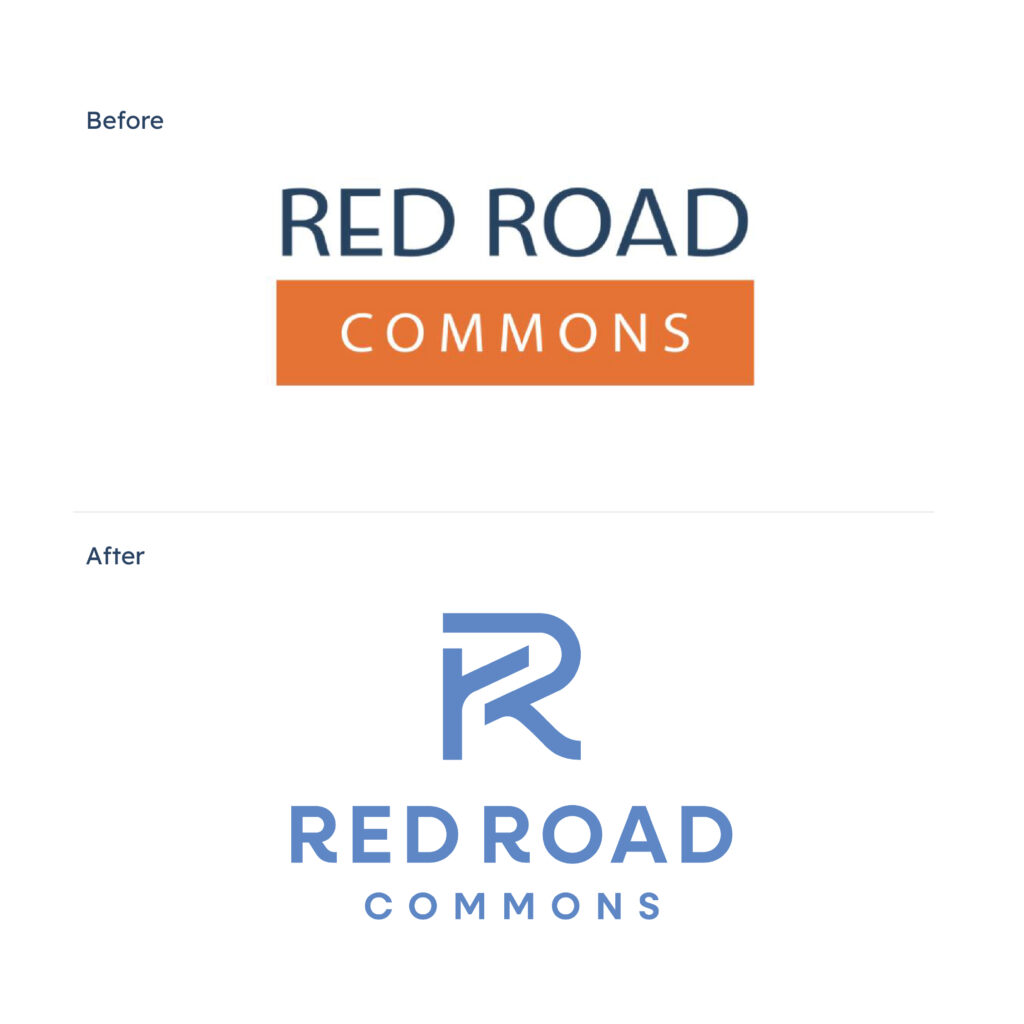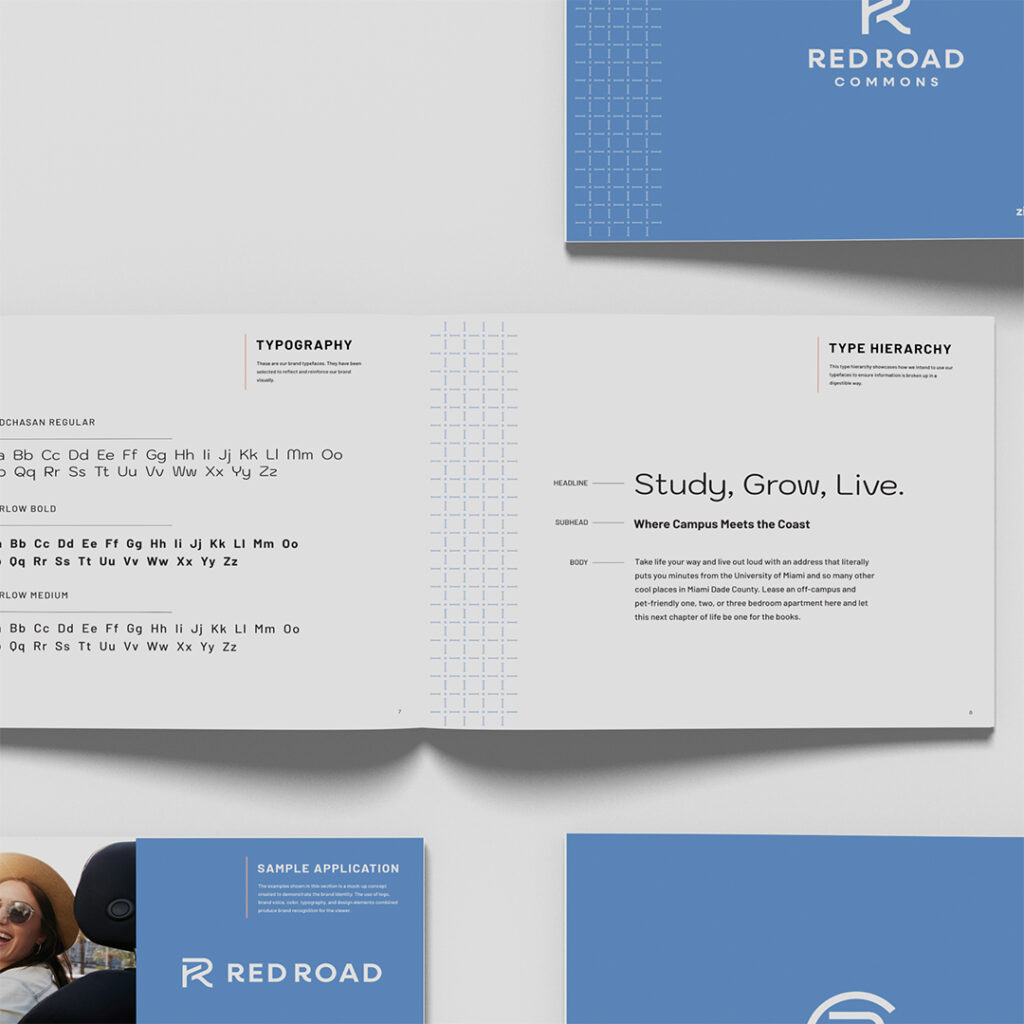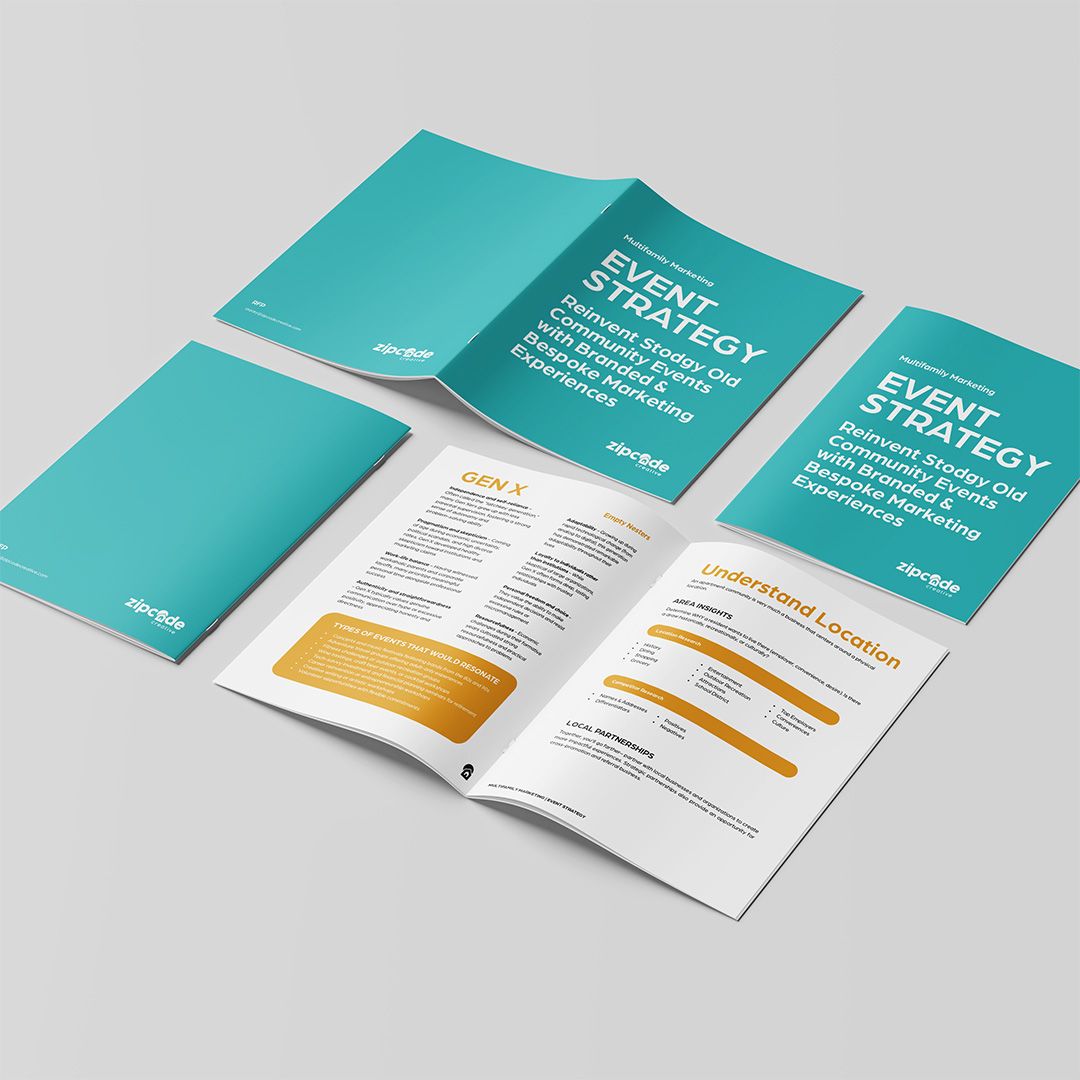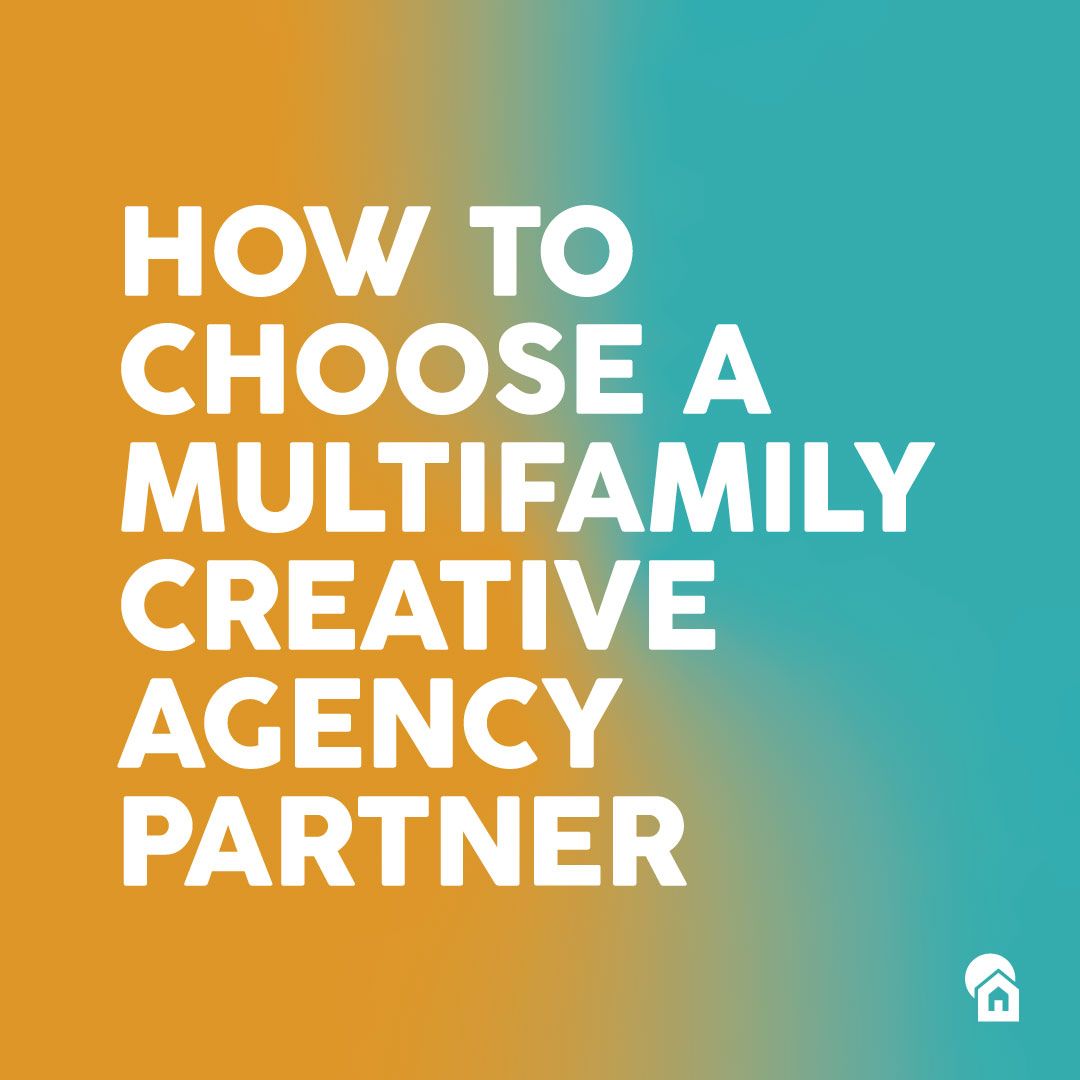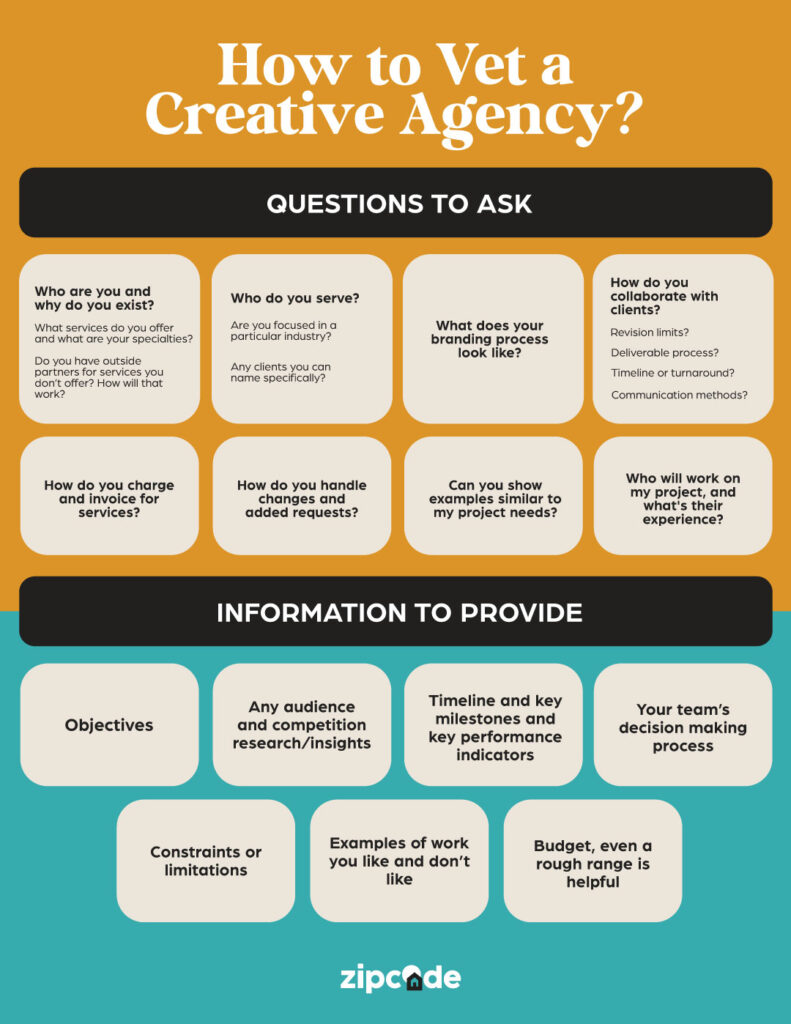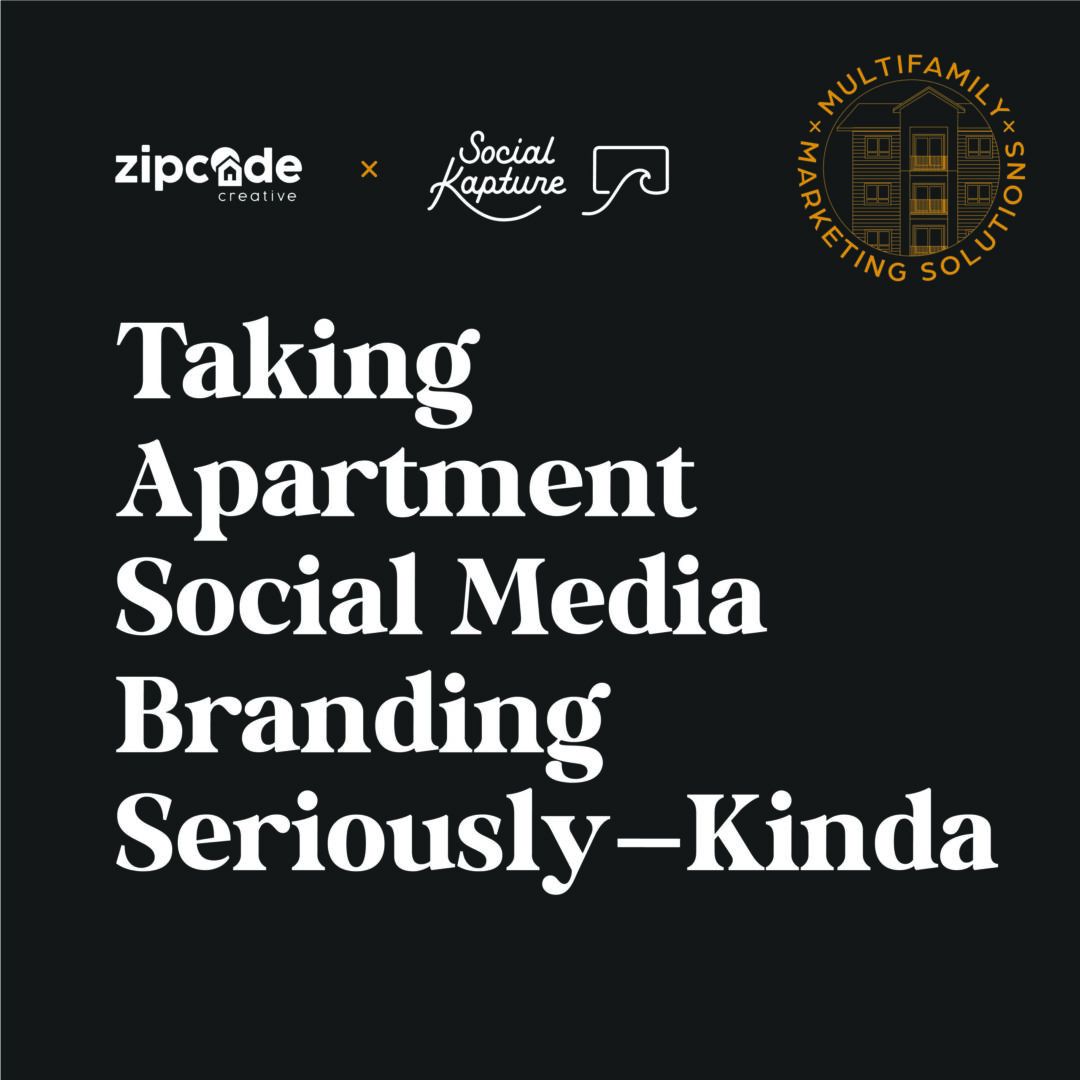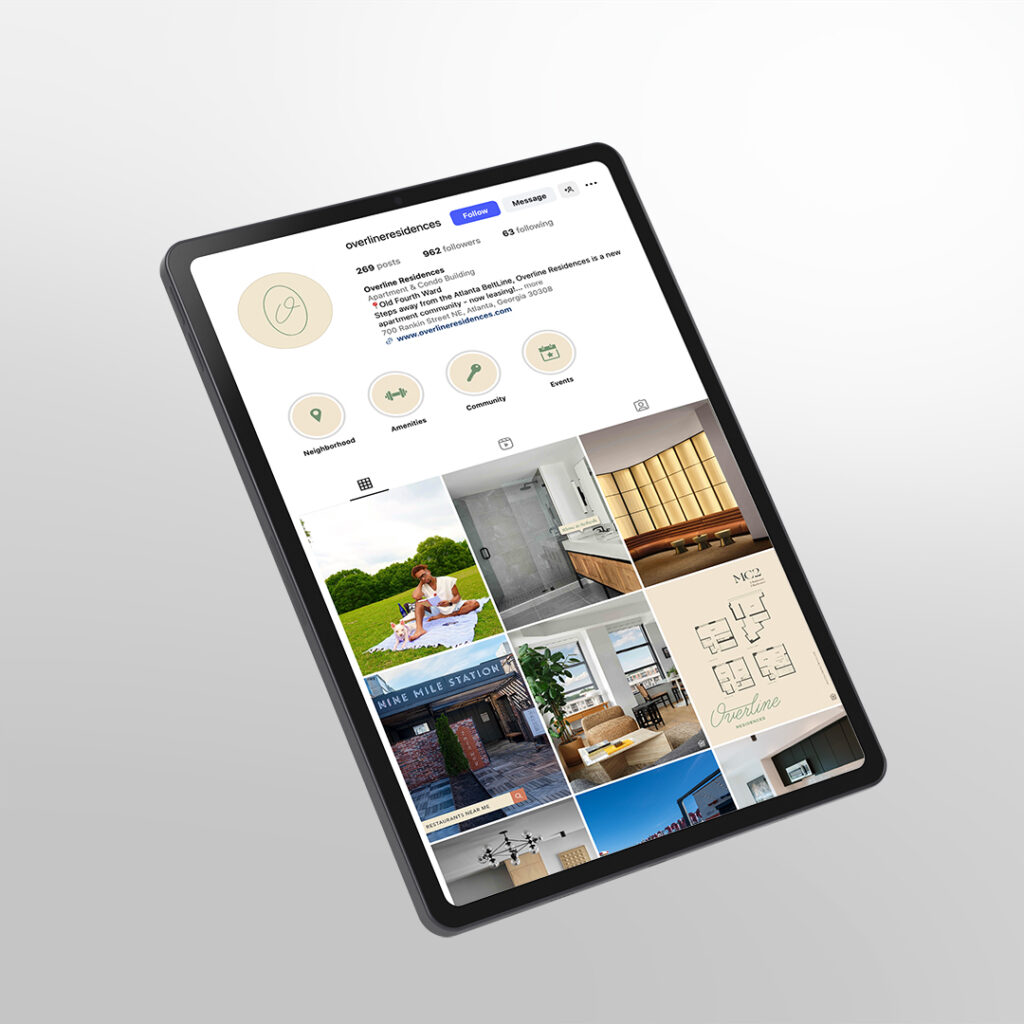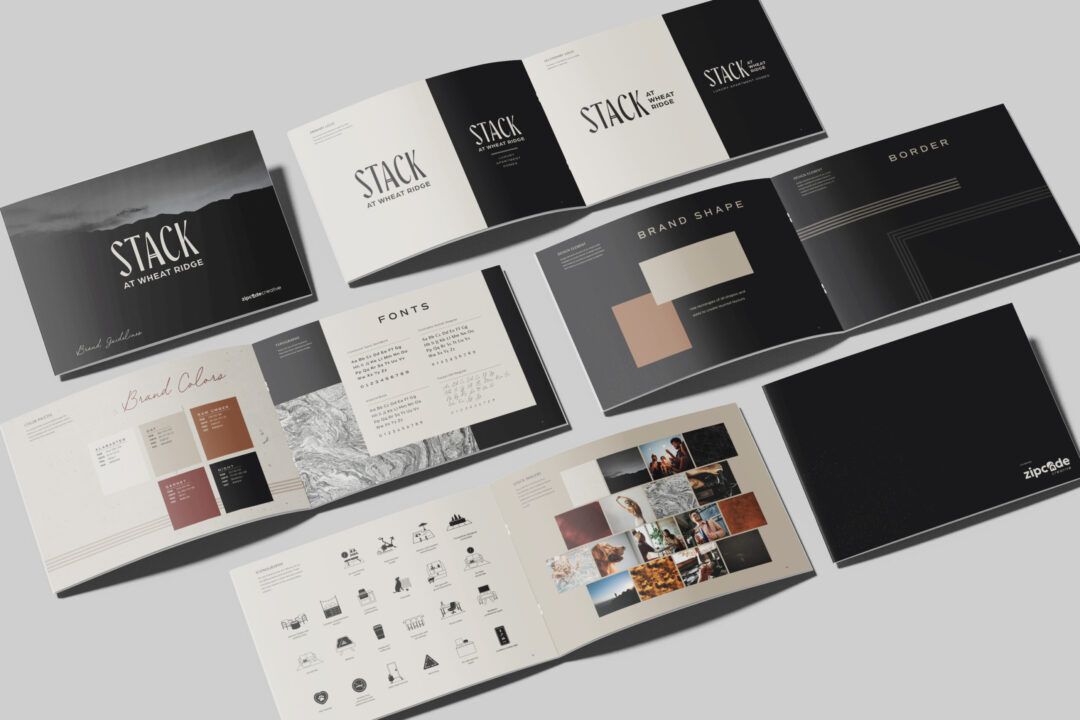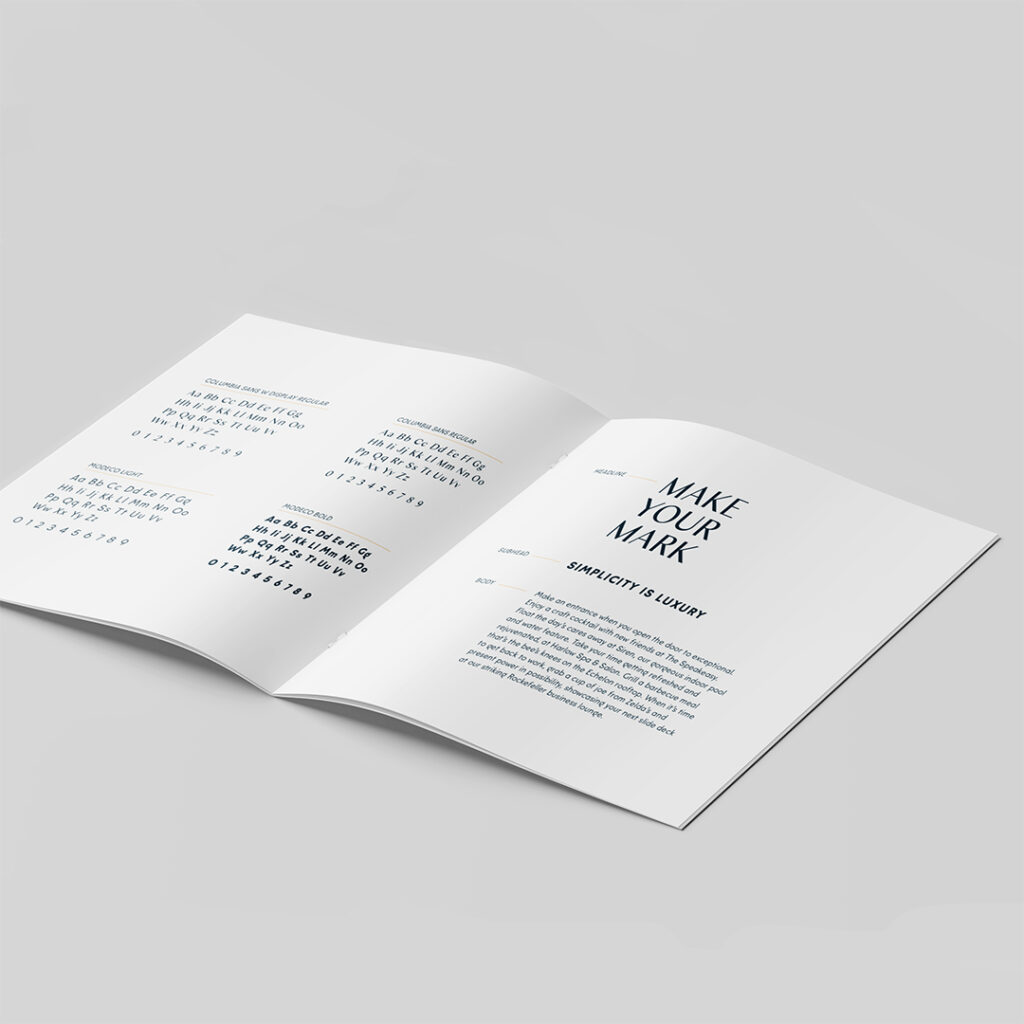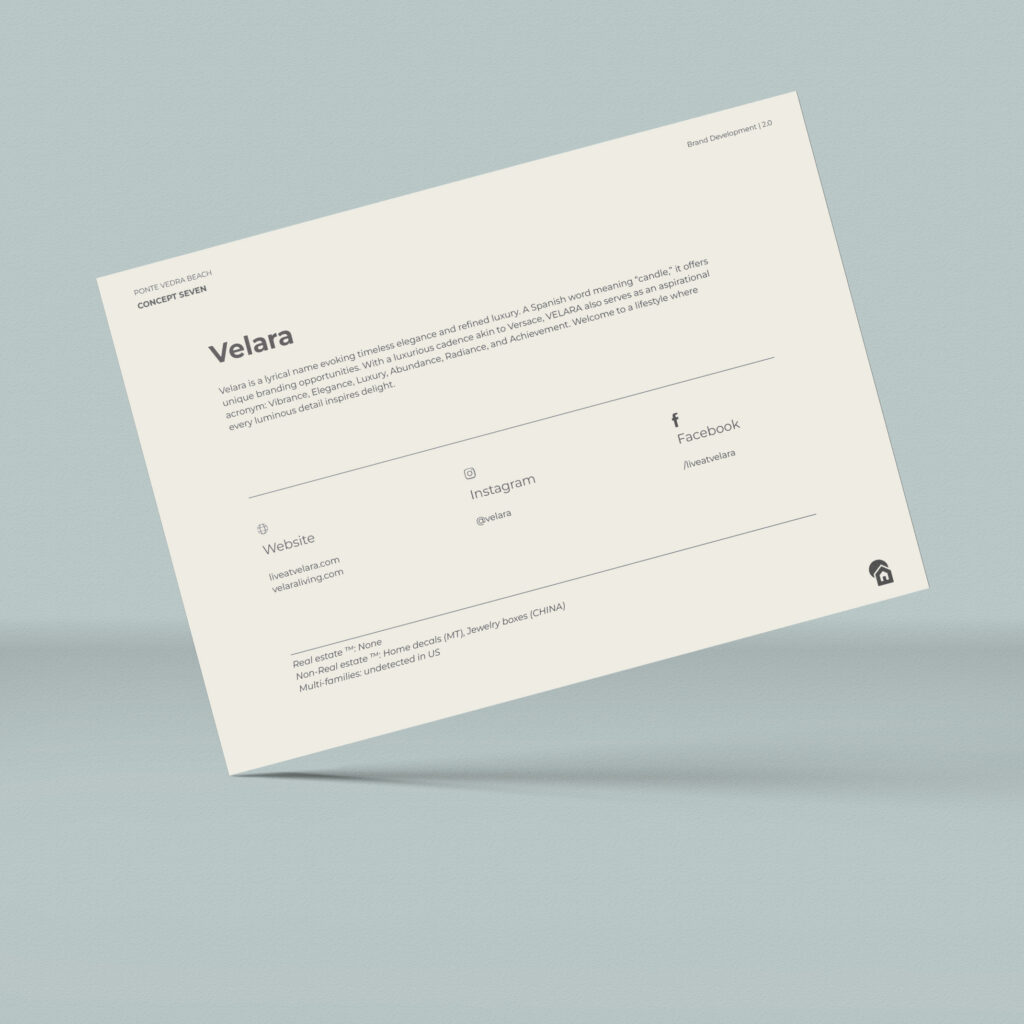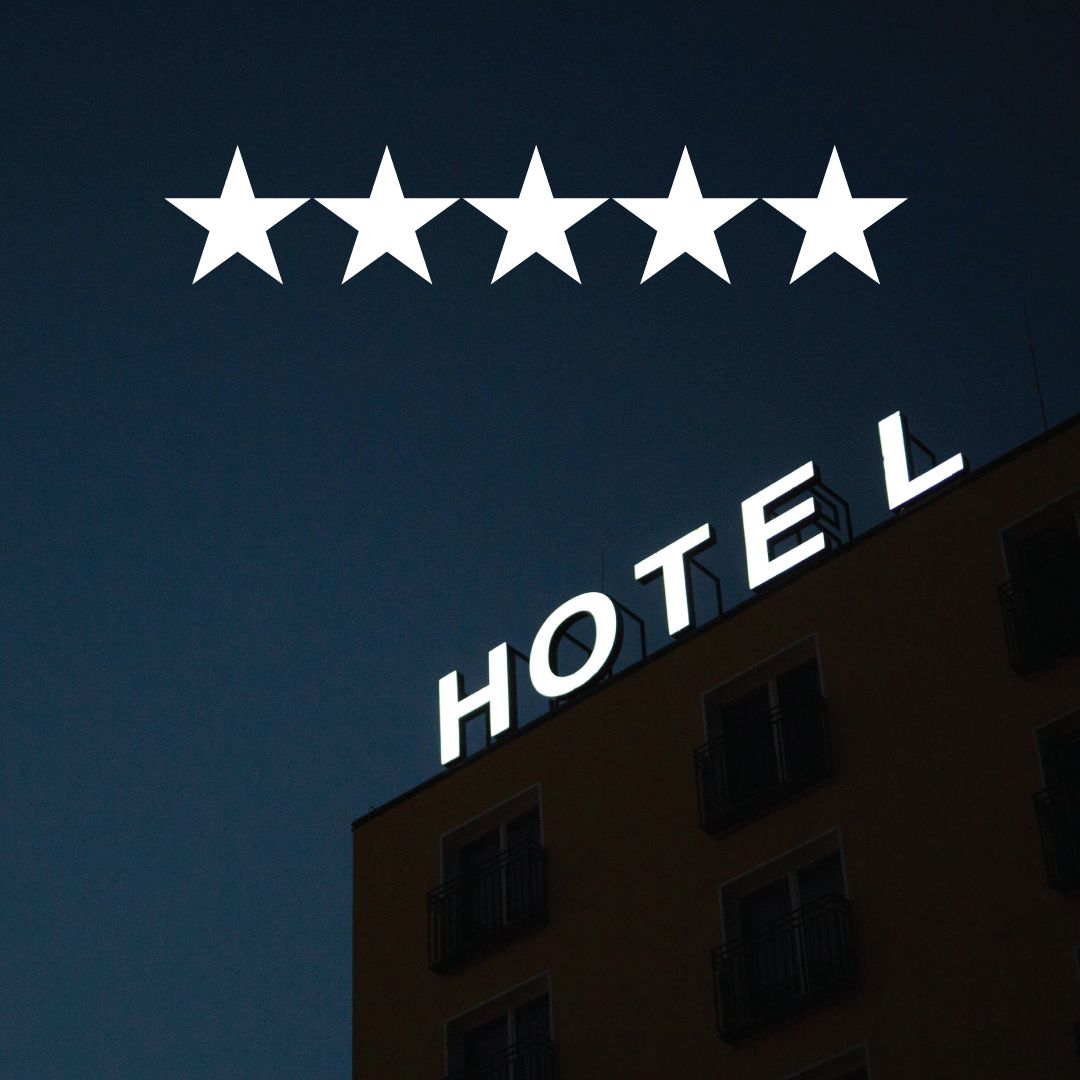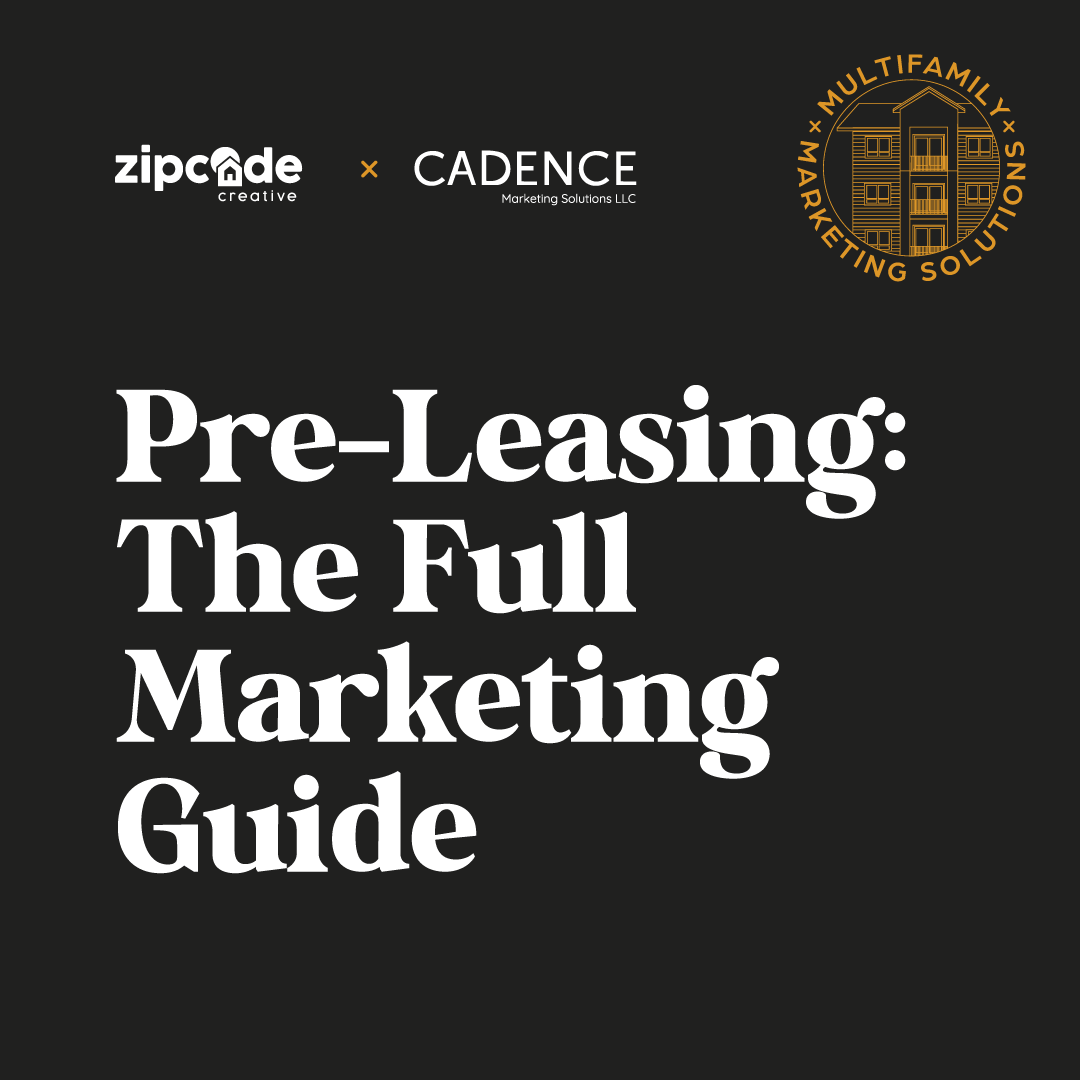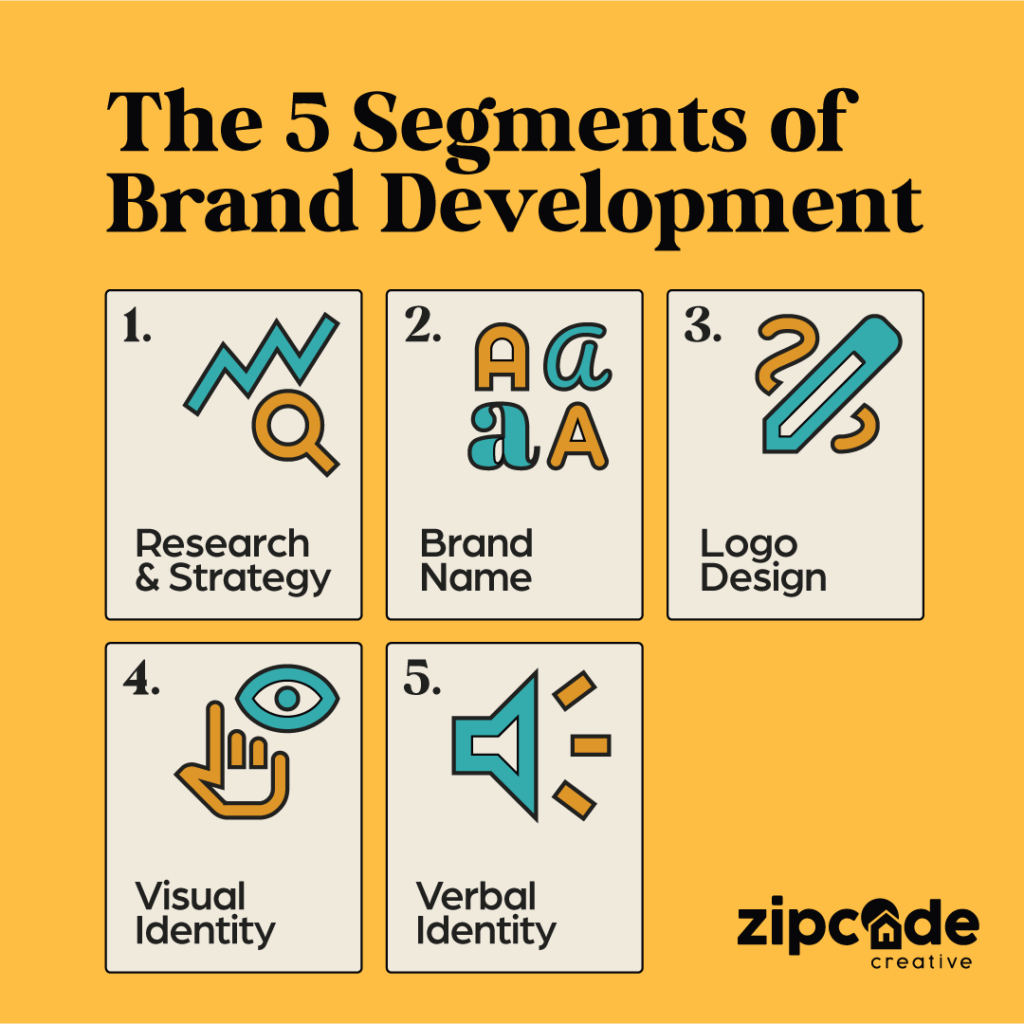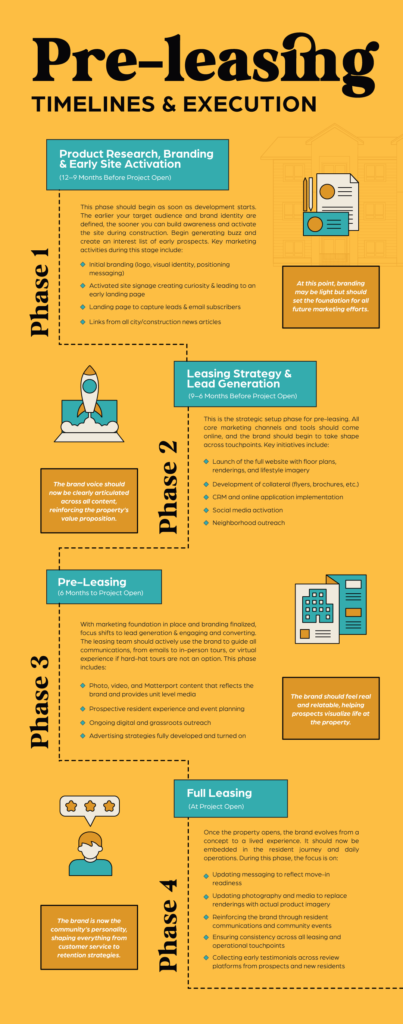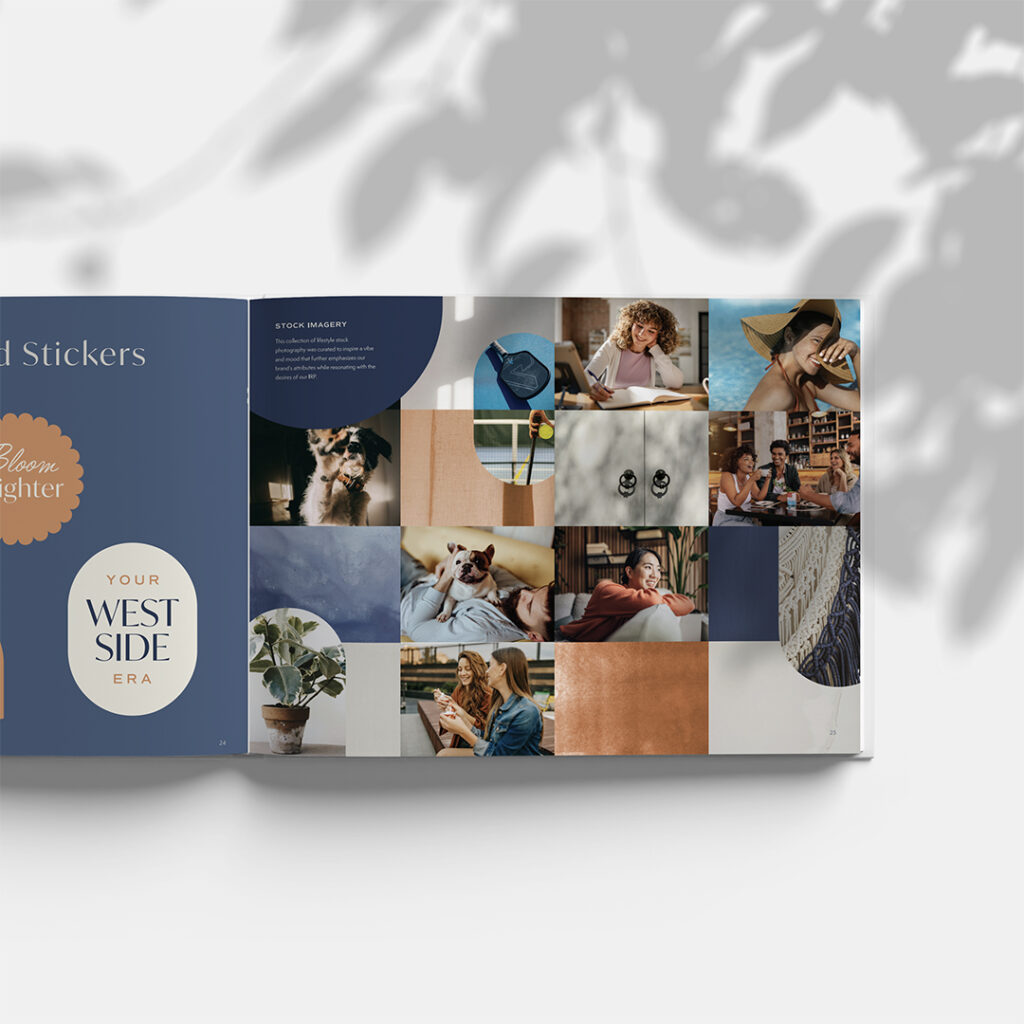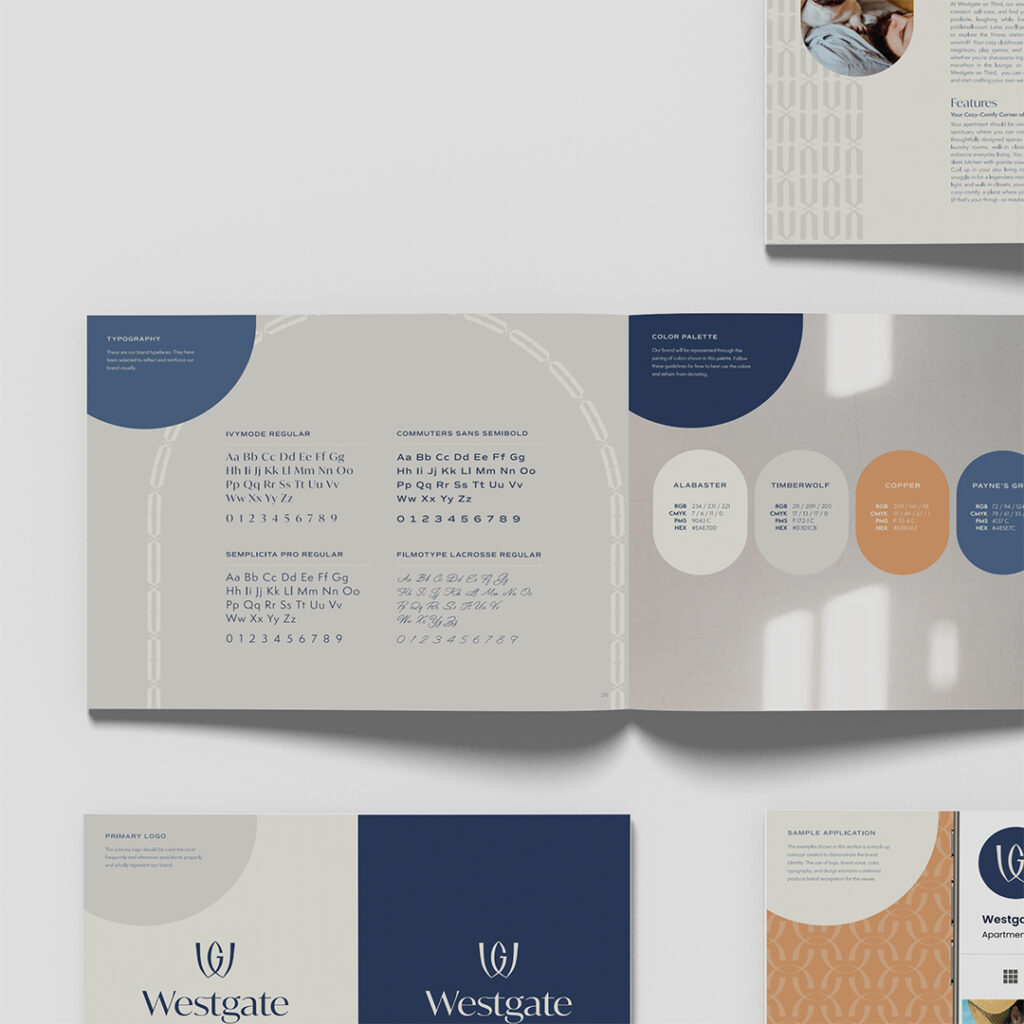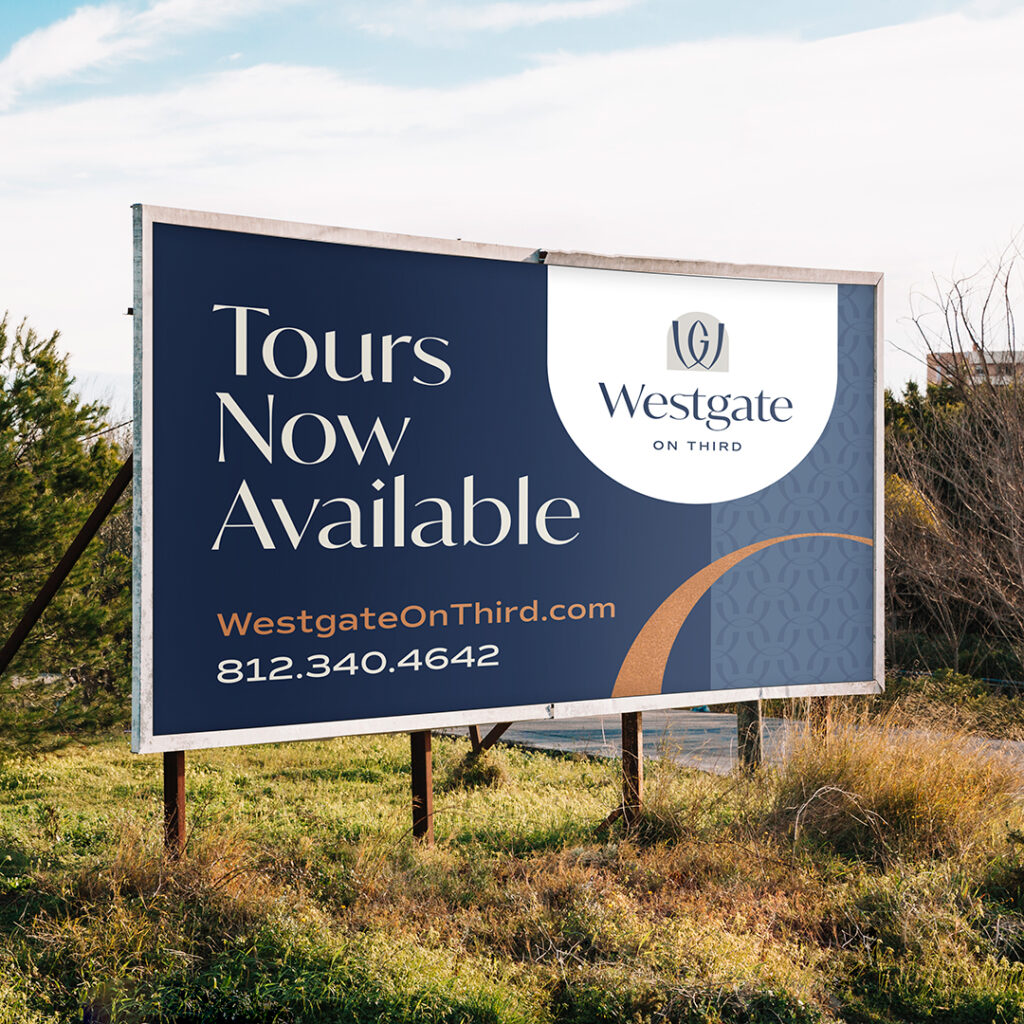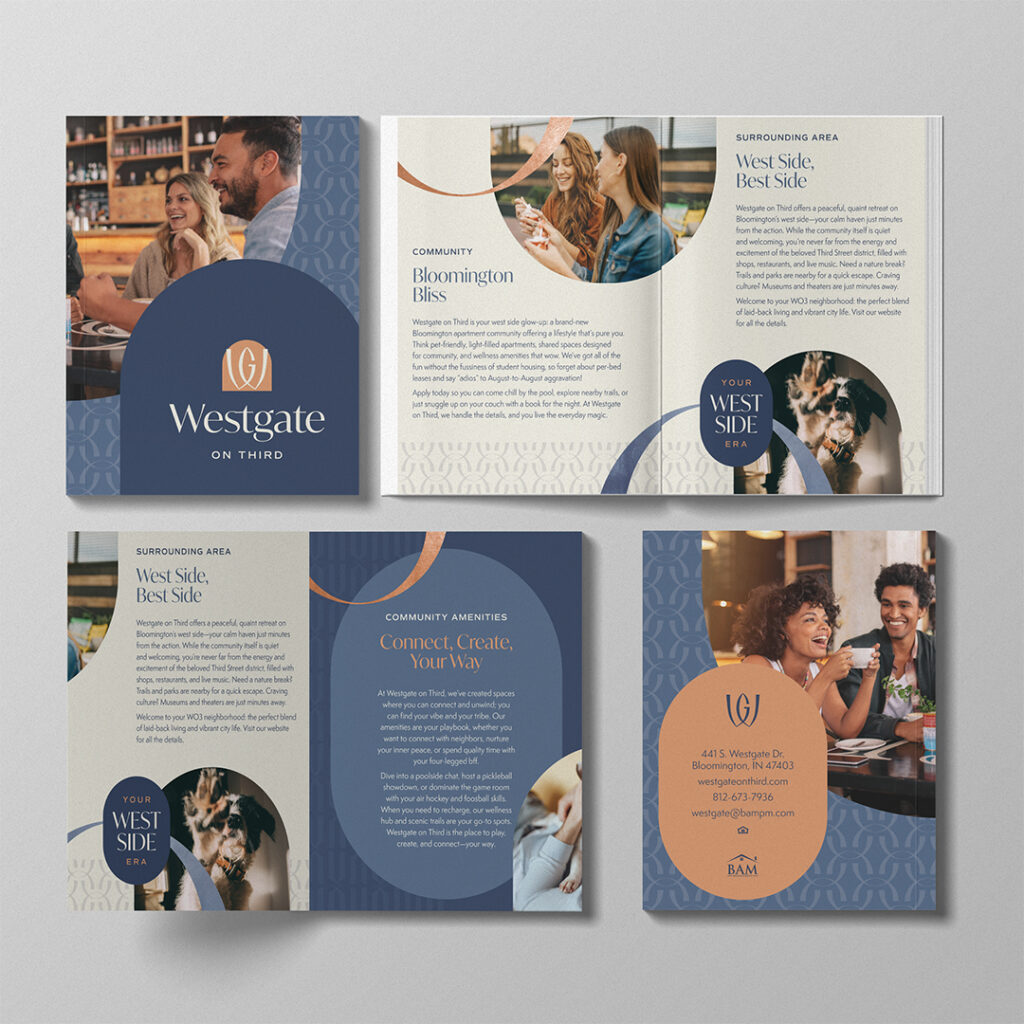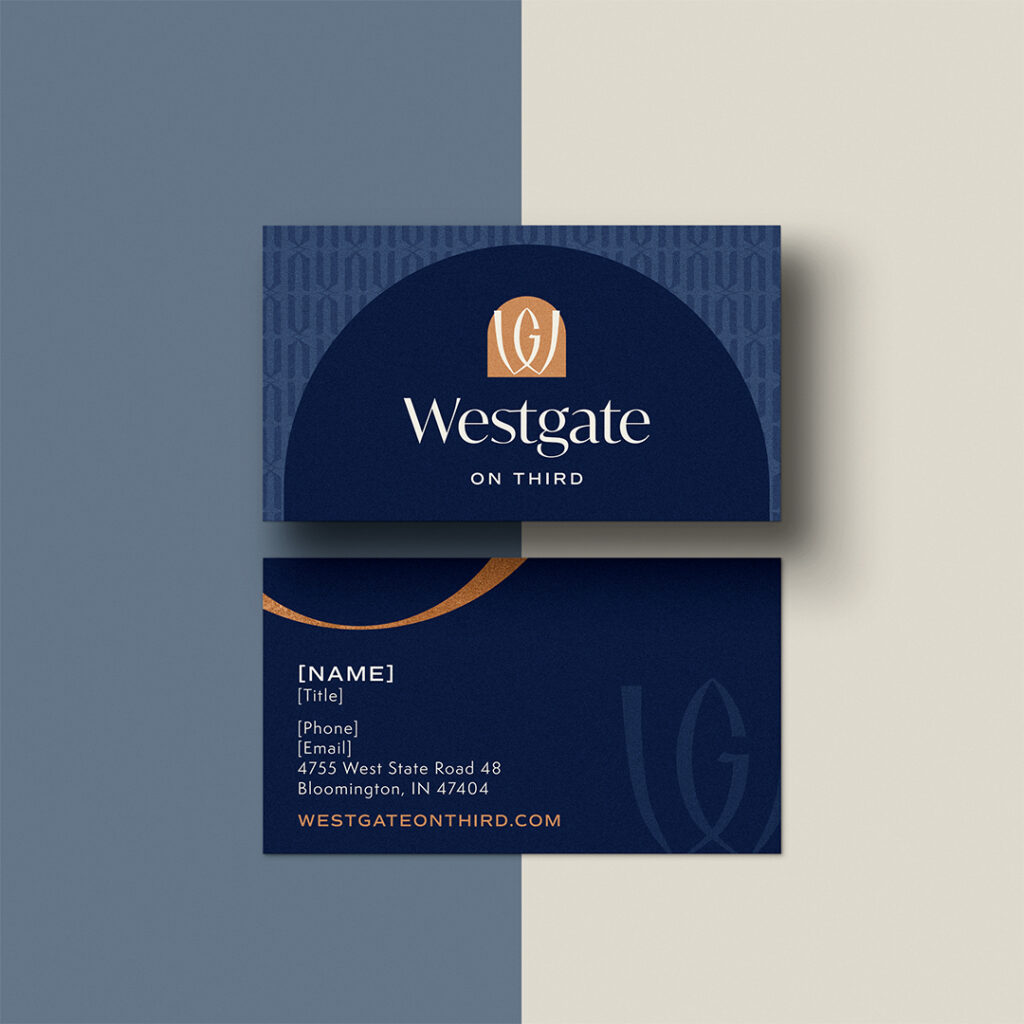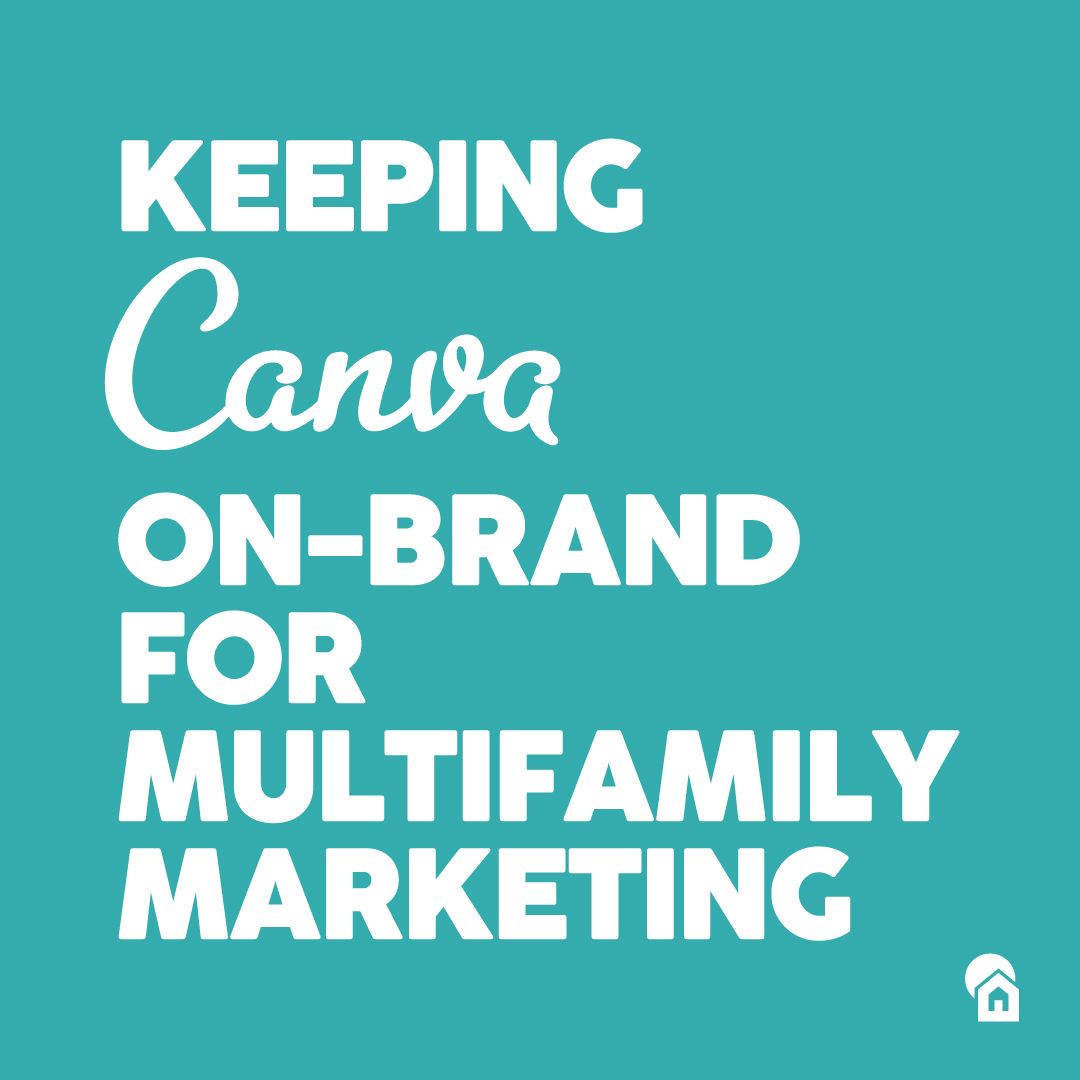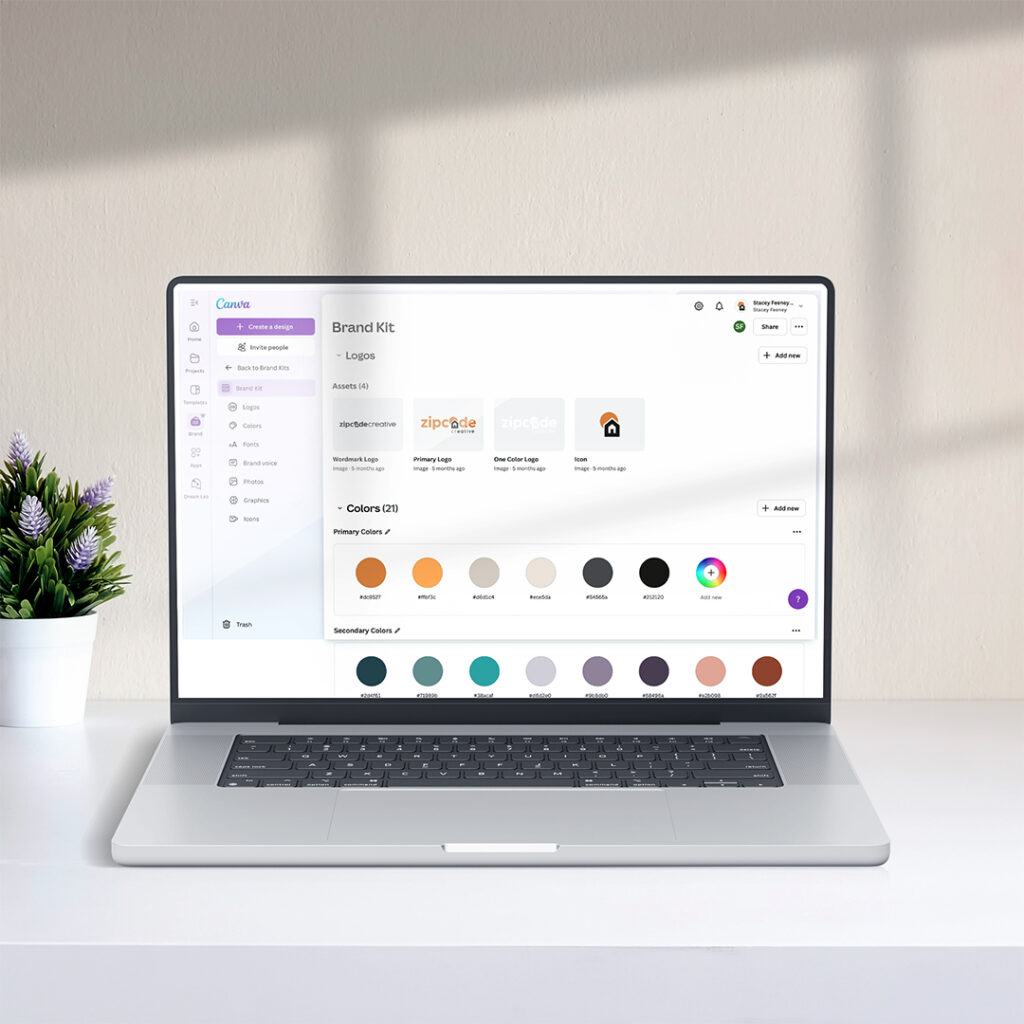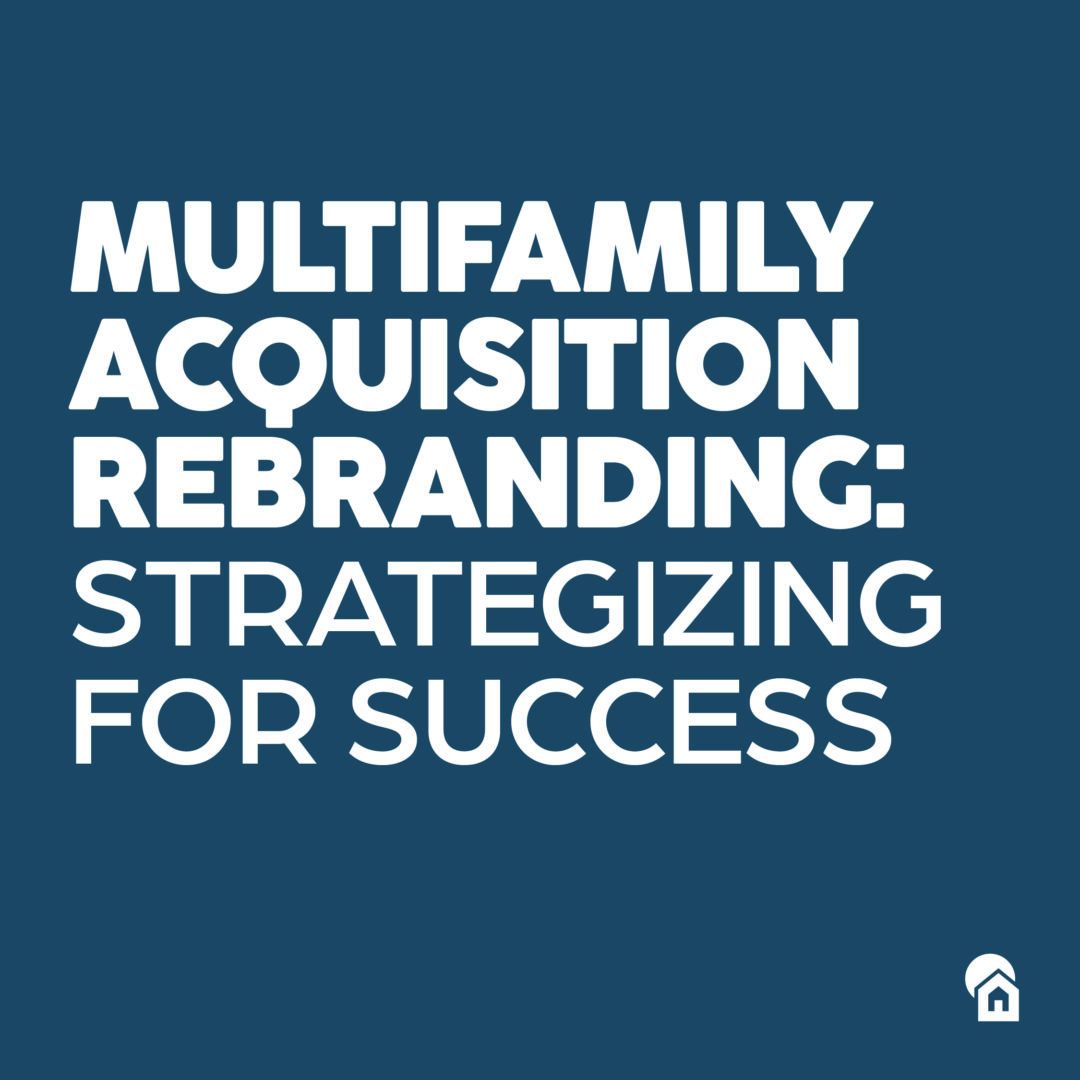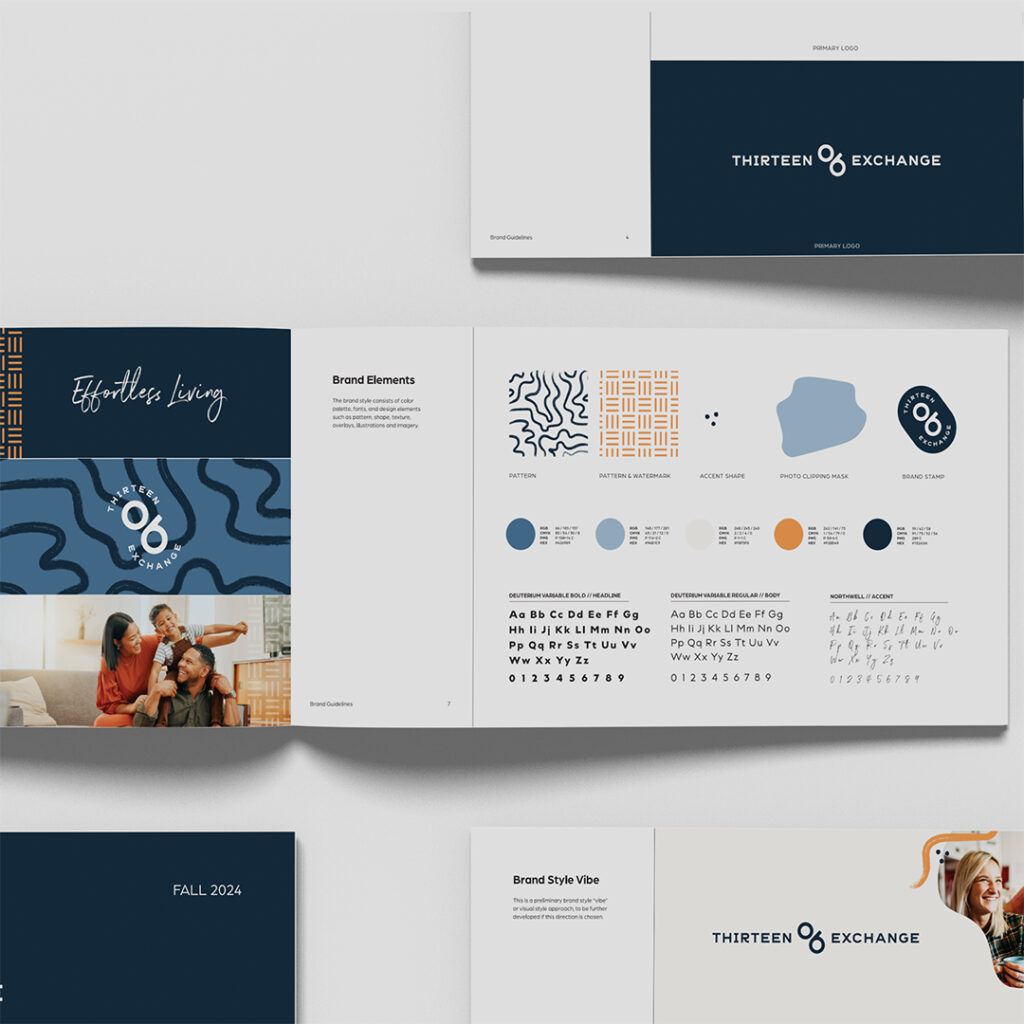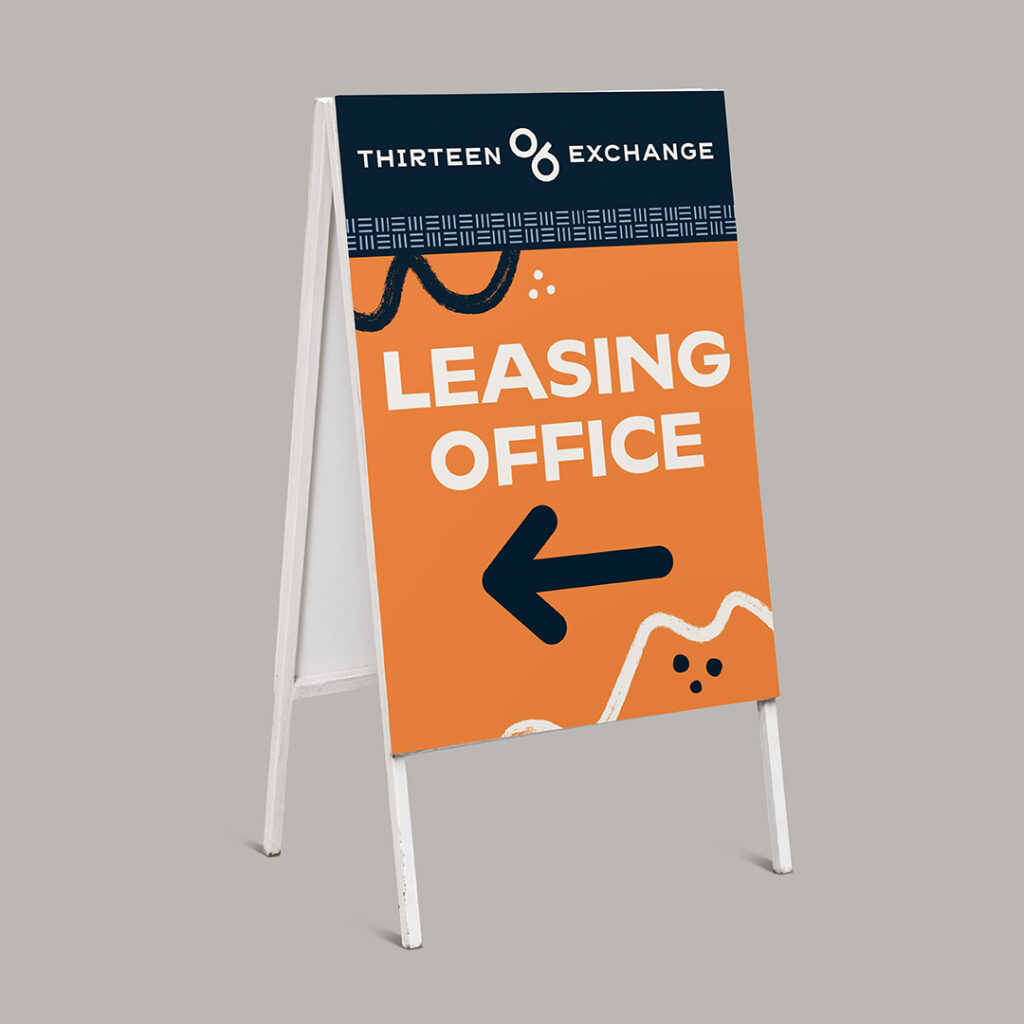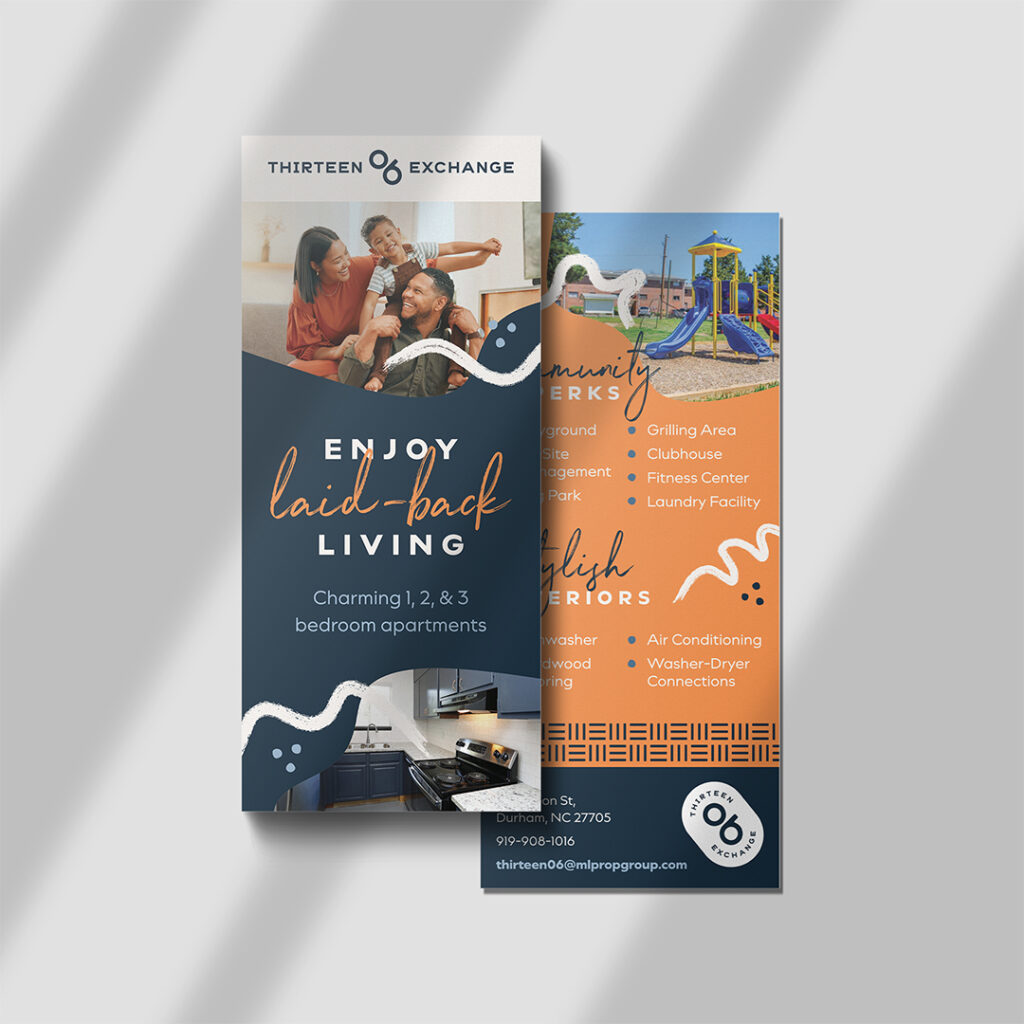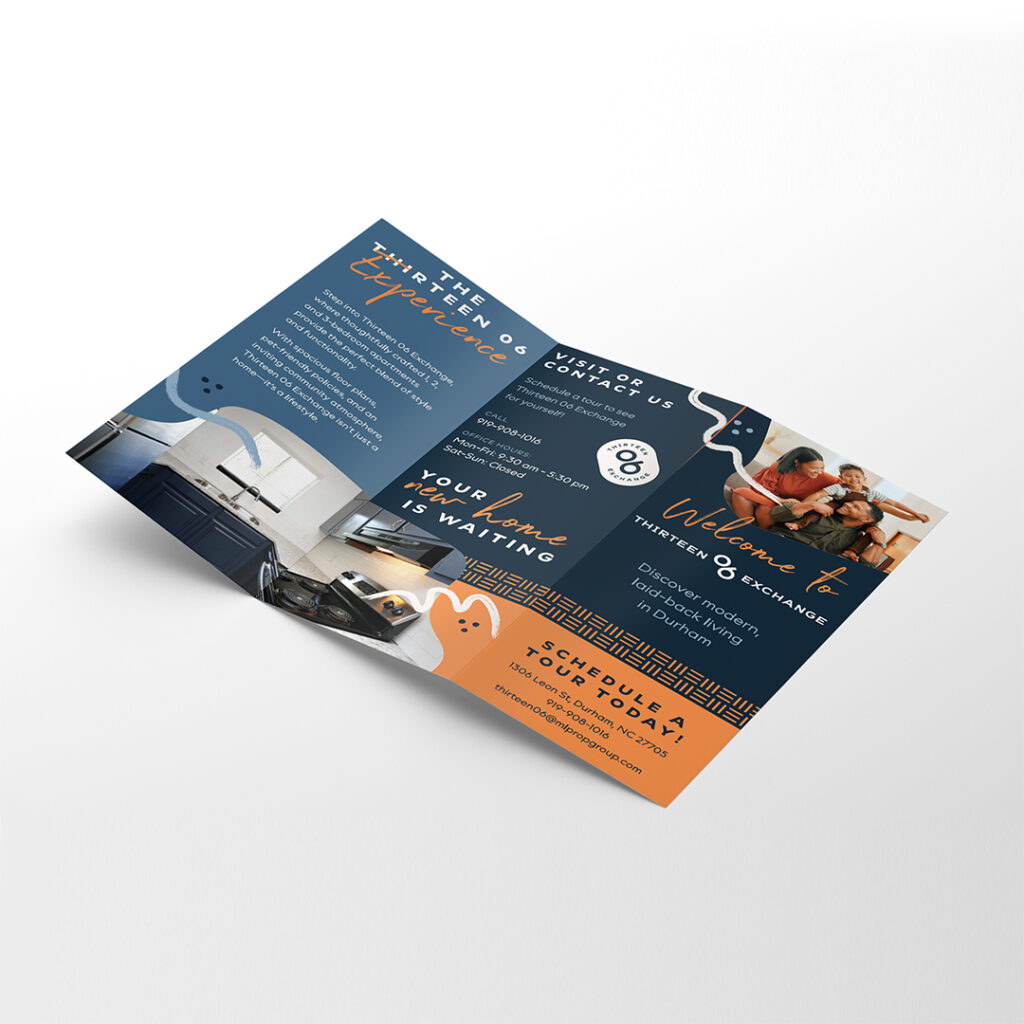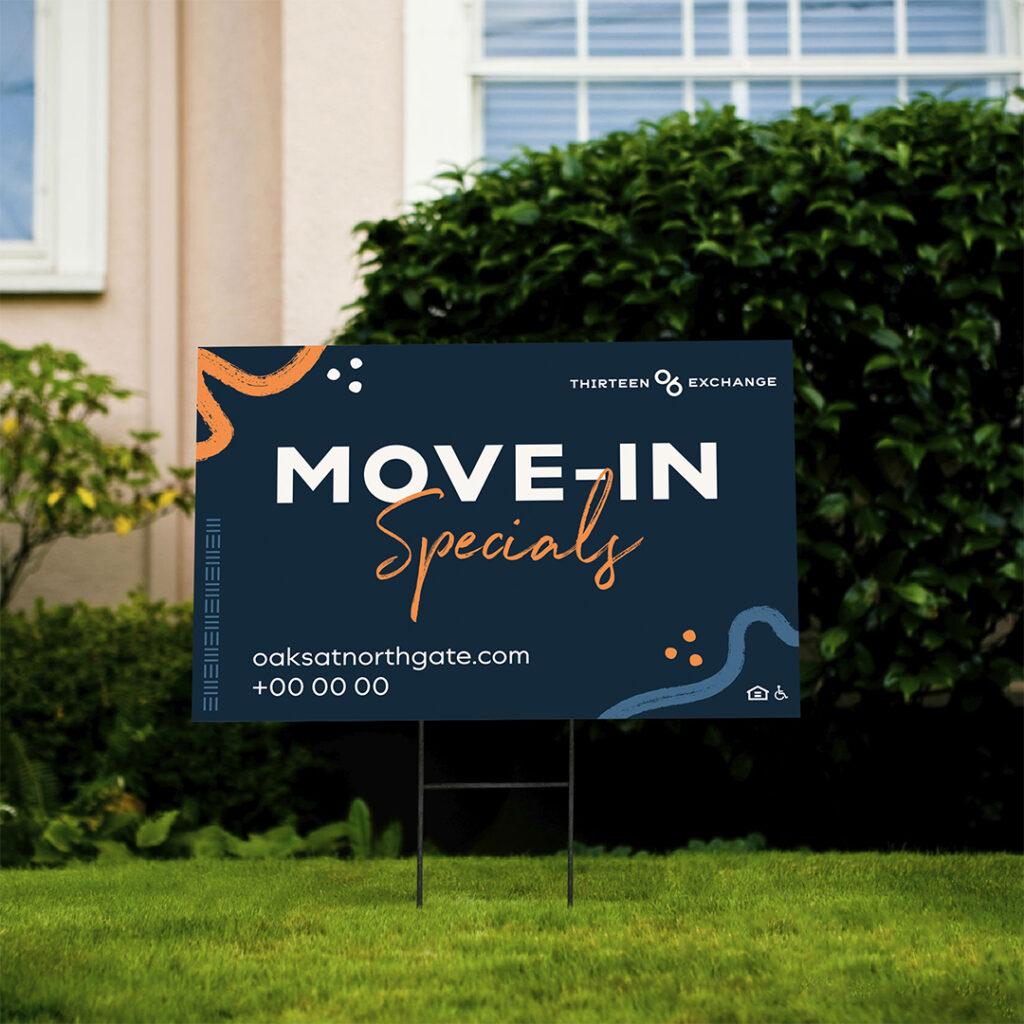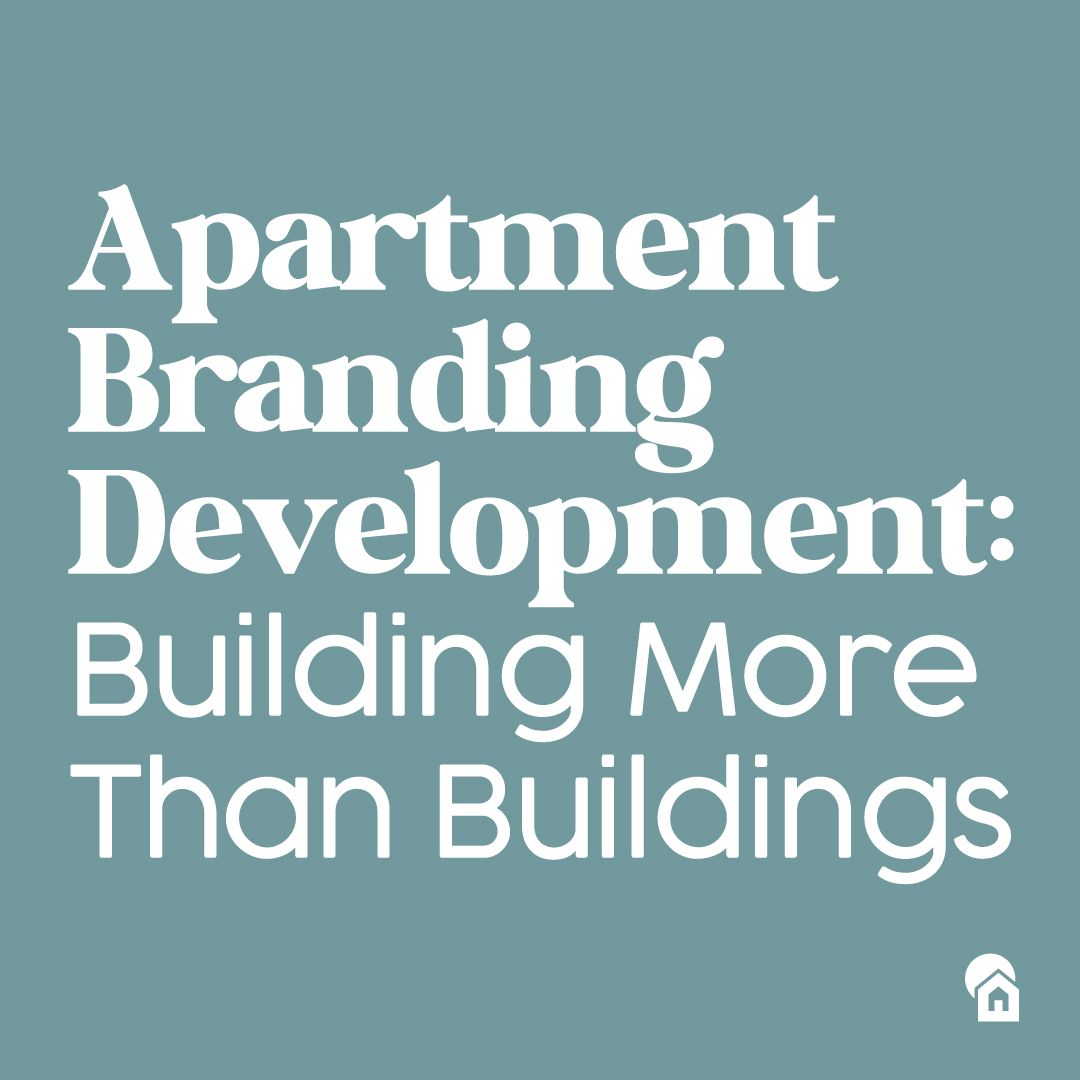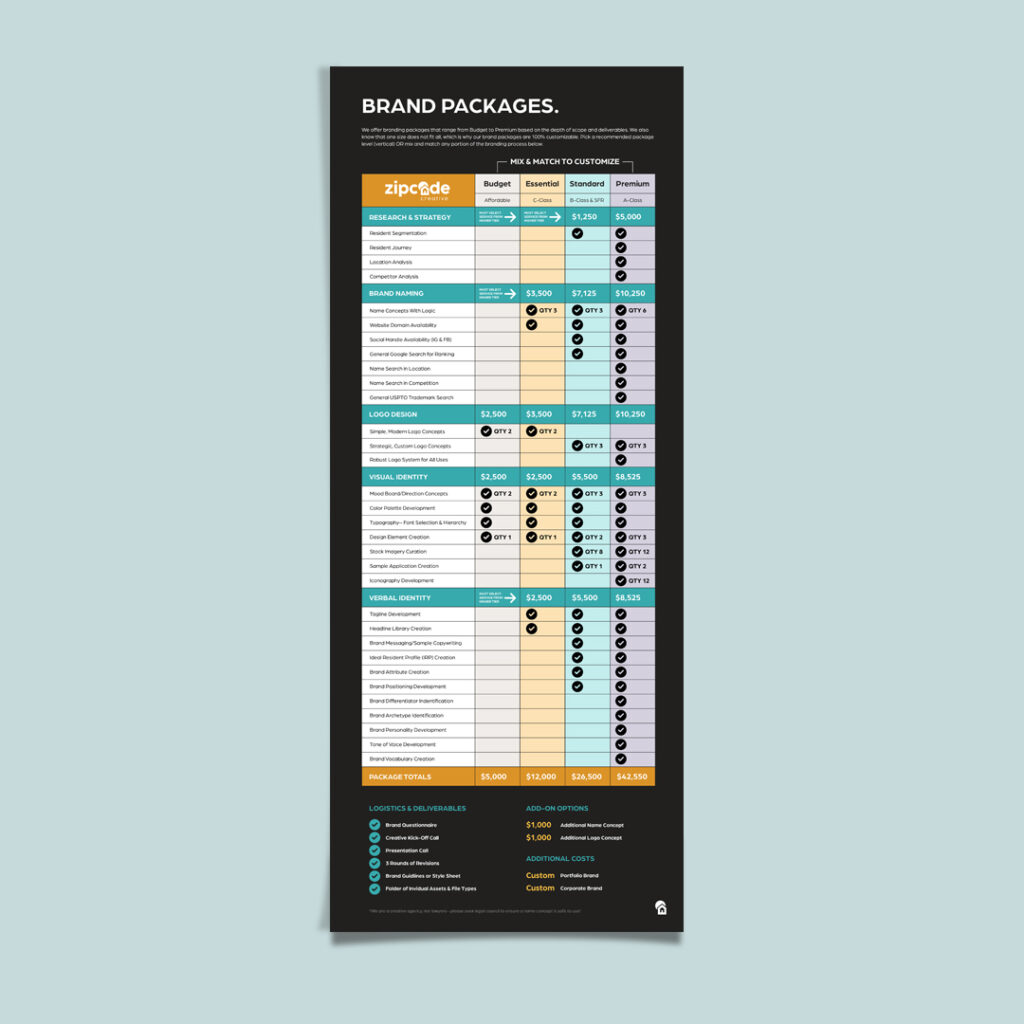Creative Agency Terms Explained: A Multifamily Marketer’s Guide
When you hire a specialist for your multifamily brand—like a multifamily creative agency, there are special words involved. And while we don’t like to go overboard on jargon, sometimes it’s more efficient to use words that are applicable to our work.
If you’re hoping to find an easier way to communicate with creative directors, graphic designers and copywriters, study up! We made a basic guide for what you’ll need to know. For the full “jargon” glossary, click here!
Branding & Identity
This is where it all starts. When you work with us at Zipcode Creative, we’ll either ask for your brand guidelines or create them—this is a set of “rules” around your visual identity and verbal identity. The visual identity includes your logo, color palette, fonts, patterns and textures, and your verbal identity includes your brand positioning (what sets you apart), your value proposition (what you uniquely bring to your customer/resident), along with your mission (what you do, for whom, and why), vision (hope for future versions of your brand) and your values (your priorities that will help you accomplish these).
Understanding these fundamental elements of brand identity helps ensure consistency across all your multifamily marketing materials.
Color Theory
As part of your visual identity, color theory has a big part to play. Choosing 3-5 colors for a brand’s color palette is what aids the quickest and simplest brand recognition. Using complementary colors (like red+green or orange+blue, which are opposites on the color wheel) can create a beautiful contrast. When it comes to creating the colors on your brand guidelines, we’ll use a Pantone color for printing and a Hex code (6 characters) for digital appearance (RGB stands for red, green, and blue, which are mixed to create any color seen on screens).
Composition & Layout
Composition and layout is often a learned art for graphic designers and artists. But it’s helpful to know a few “tricks of the trade” here. Alignment is all about how elements line up with one another—left, right, center. Having a focal point is always desirable in any piece, so viewers can land somewhere. Additionally when designers talk about negative space, they’re meaning the space around the design components. Or the ol’ rule of thirds—that just means one pretends there’s a 3×3 grid over the piece, and any focal point should aim to sit at the intersection of two grid lines.
File Formats & Technical
When you’re dealing with finalized pieces, and you’re getting ready to share the files, there are multiple file formats to be aware of (some of which are vector images: graphics made of mathematical paths instead of pixels so they can stay crisp at any size; usually logos or icons):
- AI – Adobe Illustrator’s native file format for vector graphics.
- EPS – Encapsulated PostScript – a vector file format that works across different programs.
- JPG/JPEG – A compressed image format best for photos. Smaller file size but loses some quality.
- PNG – An image format that supports transparency and maintains quality. Larger file size than JPG.
- SVG – Scalable Vector Graphics – a vector format perfect for web use that never loses quality at any size.
- TIFF – A high-quality, uncompressed image format often used for printing.
Raster is the alternative to vector images—it’s an image made of pixels (like photos), which can get blurry when enlarged. E.g. JPG, PNG. When we talk about blurriness, we’re talking about poor resolution, or the amount of detail in an image, measured in DPI or PPI. Higher the resolution, the sharper/clearer the image. DPI and PPI are both measurements of resolution; Dots Per Inch or Pixels Per Inch, respectively. DPI is for print. PPI is for screens.
Imagery & Graphics
In the design world, an asset is any visual element you can use: icons, images, logos, illustrations. Icons are tiny symbols that represent a larger idea in a smaller space—think public bathroom signs showing Men or Women. Illustrations help bring personality to visual design, patterns repeat for texture, and texture adds some tactile-ness to it all. Layers in design are what the designer means by each piece of an image, split into transparent sheets, with each sheet adding to the overall image (stacked like a lasagna noodle, sauce, and cheese—making the whole dish.) When something is rendered, all those layers are polished and made into a final image.
Printing & Production
Before going to print for the physical world, a proof is reviewed—it’s the pre-print version needed to double-check colors, alignment, and text before it’s finalized (in a giant version or massive quantities.) Trim is the final cut where the design goes from digital to physical. Pro-tip: Bleed is the extra area beyond the trim edge where design elements extend to ensure no white edges after cutting—the design goes all the way to the edge!
When you’re ready to move from digital concepts to print marketing collateral, understanding these production terms ensures smoother collaboration with your creative team.
Software & Tools
Adobe is the mainstay of most, if not all graphic designers. It has multiple programs used for a variety of tasks, including:
- Creative Cloud – Subscription service for Adobe programs: where all the Adobe programs “live”
- Illustrator – Adobe’s vector graphics software for creating logos, icons, and scalable graphics.
- InDesign – Adobe’s layout software for creating multi-page documents like magazines, books, and brochures.
- Photoshop – Adobe’s raster graphics software for editing photos and creating pixel-based images.
The artboard is the space inside each of these programs where the work happens. Kind of like the “page” you type in when using a word processing program (Word, Google docs, etc.).
Typography
Letters are art. They require invisible lines, beautiful detail, and proper spacing. And there’s a ton of terminology to know, too. Let’s start with the simplest stuff: bold means letters, fatter. Italics means letters, slantier. Two main camps of font types: serif and sans serif. Serif fonts have little details on the ends of letter strokes. Sans serif fonts go without details. Script fonts connect the letters while display fonts are for grabbing attention in headlines—too busy or strange to be used for body copy.
To tweak type, designers can adjust line height (space between lines) and kerning (space between letters)—this comes in especially handy when working through font hierarchy—first comes headings, then comes subheadings, then comes body copy. Typically going from largest and most interesting to smallest and most pared down font styles. A pull quote is a piece of text set apart to grab attention, too.
Typography choices play a crucial role in memorable logo design and establishing visual hierarchy throughout your brand materials.
Web & Digital
When it’s time to put your brand guidelines to use on a website, look out for these digital dimension terms. Wireframes are where it all begins—it’s the blueprint that details the structure before you get too deep into design. Aspect ratio is the proportions of your image—keeping it as you resize it will prevent stretched or squished images. A responsive design means your website looks good on a computer AND on mobile and tablet. That’s part of the whole UI/UX thing, too—user interface and user experience. The hero image is the big, bold banner at the top of the webpage.
General Design Terms
Mockups are the most fun you can have without hitting “print”—how the final product will look, in real life—like a logo on a coffee cup. A mood board is helpful for designers to show the vibe with colors, images, and inspo for creative direction. Every iteration of the design counts as a round, and feedback helps guide the design closer to the final target. And scalable? That’s just an image’s or design’s ability to get really big or really small without losing quality.
Copywriting
Copywriting is words with a purpose—to help readers feel something or do something (hopefully both). Speaking of doing something—a CTA or call to action is a short phrase, sometimes on a website button, that instructs the reader to Sign Up Now or Book a Tour! Every bit of copy (words) is written to carry the brand message, wherever words are used and needed. Like font hierarchy, there’s also layers to content. A tagline is the catchy phrase that symbolizes the brand. The headlines are the phrases used on the website or brochures to further push those ideas and values, and the body copy backs it all up with details.Effective copywriting works hand-in-hand with strategic brand messaging to create compelling narratives that resonate with your target residents.
Strategy & Planning
No brand should spray and pray, or guess at residents’ wants/desires. Research and discovery through data and brand questionnaires filled out by stakeholders help uncover all the details (like demographics [who they are], psychographics [what they value/prioritize], and geographics [where they are]) that will reveal your target audience, or who you most want to reach. Creating a persona, or a “fake” customer profile can help direct your strategy to reach someone that represents that target audience.
Strategic branding research transforms raw data into actionable insights that drive marketing decisions and leasing results.
Project Management
Before a design is designed, it’s conceived—the art of concepting! Big ideas are born there. Finished pieces are deliverables, or something tangible the client receives. It’s usually based on the scope agreed upon by the client and agency (who’s doing what), but sometimes scope creep sneaks in, and new requests above and beyond the agreement come into the project. Decision makers, or stakeholders have to keep an eye on timelines from the project manager, and the turnaround time from assignment to deliverable has to match up with the expected due date.
Marketing & Advertising
Once the brand is settled in, guidelines have been followed, strategy is outlined, then it’s time to market the community. Ad copy is the little bit of text that sells the community. A landing page (where ads may click) is a focused web page where visitors can take action, whether signing up, downloading, or buying. Every follow through is called a conversion (the main goal of marketing campaigns!) Engagement is also a goal, through likes, shares, comments, clicks, that reveal the interactions people want to have upon seeing your brand. Design + Copy = Attention, Captured and Kept (Ideally.)
Ready to work with a creative agency that speaks your language? Whether you need a complete brand refresh or help navigating limited brand guidelines, Zipcode Creative brings multifamily branding expertise to every project. Let’s talk about your community’s branding needs.
